IDS





By Molly Gregory mogrego@iu.edu | @mollygregory22
Joe McWhorter Sr., 78, used to burn houses down to pass the time on Saturdays.
“That’s one way we were able to show somebody what fire was actually like,” he said. “Put them in a house that’s actually on fire. You’re talking about 800 degrees coming down on your head.”
McWhorter has been working as a volunteer firefighter with the Monroe Fire Protection District (MFD) since 1969. Simulated fires were one of the protection district’s methods of training volunteers 56 years ago.
Now, amid a nationwide
volunteer firefighter shortage, recruiting and training isn’t that simple. According to the National Fire Protection Association, the number of volunteer firefighters in the U.S. is the lowest it has been since they started collecting data in 1986. “It’s a big commitment to be a volunteer, to go on the training,” McWhorter said. “I don’t think the general public realizes that to be a volunteer firefighter, you have to go through all that same training as well.”
In Indiana, 80% of first responders are volunteers, according to the MFD. The Federal Emergency Management Agency says more than 70% of fire departments
in Indiana are exclusively manned by volunteers.
surance, only governmentissued workers’ compensation covers if a volunteer gets hurt.
They also receive a yearly clothes and car allowance
“It’s special, something that not a lot of people know until they’re in it. I always try to explain it, but you just kind of have to know.”
Leigh Dillard MFD auxiliary member
That means when a shiny, red truck barrels past you, and the doppler effect of the siren shrieks away in your ears, there’s a high chance the people running toward the danger are doing it for free.
Volunteers don’t make a salary. While employed firefighters have health in-
By Ella Curlin elcurlin@iu.edu
Two years after a ProPublica investigation found IU held the fifth largest collection of unrepatriated Native American remains in the U.S., the IU office responsible for returning those remains and cultural items has completed four more repatriations. The IU Native American Graves Protection and Repatriation Act office works to review and return the thousands of Native American remains and funerary objects still in IU collections. It does so in accordance with NAGPRA, a 1990 law requiring federally funded institutions to repatriate the human remains or items held in their collections to their tribal nations of origin.
A ProPublica report updated in January says that IU’s original holdings included 6,100 remains, and IU has completed inventories, the first step towards eventual repatriation, for 1,640 of those remains.
Jayne-Leigh Thomas, director of the IU NAGPRA office, said the original number was closer to 5,200 remains, and the office has repatriated from that number.
NAGPRA seeks to address centuries during which museums, federal agencies and universities routinely dug up Native American gravesites for display or for research that often amounted to pseudoscience. This desecration of sacred areas and gravesites
contributed to the attempted eradication of Native American cultural practices.
IU obtained its collections through donations from museums, universities or private donors, or through excavations beginning in the 1930s.
An IDS investigation in 2023 found a loophole in NAGPRA allowed IU, along with other institutions across the country, to go decades without repatriating any of the remains in its collections. Current and former faculty alleged at the time that IU avoided the responsibility and pushed the work to untrained anthropology faculty with fulltime research and teaching responsibilities.
Updates to NAGPRA regulations closed that loophole in 2010. Three years later IU hired Thomas, who has a PhD in Archeology from the University of Edinburgh, to direct its NAGPRA office.
Since then, ProPublica says the office has completed inventories listing possibly affiliated tribal nations for 1,640 of the remains in its collection.
Thomas said those lists could include upwards of 50 tribal nations for a given set of holdings or remains.
Once an institution determines the possible tribal affiliation of a set of ancestral remains or cultural items, regulations require institutions to consult — virtually or in person — with representatives from tribal nations. But that can take time.
“Consultation requires the development of a relationship,” Thomas said. “That's not something that can happen overnight.”
In 2019, Martha Only A Chief, the NAGPRA coordinator with the Pawnee Nation of Oklahoma, visited IU to determine the affiliation of several cultural items in IU’s collections. She said the in-person consultation allowed her to fully assess whether those items were Pawnee.
“There are certain items where, when they have an inventory, it’ll just say rattles,” Only A Chief said. “Well, a rattle can mean a number of different things, but ours, we have certain rattles that are used in our sacred ceremonies or sacred dances, and some of them that we still use.”
That consultation resulted in IU repatriating 27 cultural items to the Pawnee Nation last November, allowing Only A Chief to bring certain items back for eventual display in the Museum of the Pawnee Nation, where tribal members can see them for the first time.
“The reason, I feel, for my job, is to bring these items back so our people could see them, and our, you know, our children and grandchildren after that,” Only A Chief said.
Thomas said during the consultation process she accommodates the needs of tribal representatives, who may be too busy to start new repatriations or accelerate existing projects.
SEE REMAINS, PAGE 4
from whichever township the department services. That totals a minimum of $200 per department.
With what little funding the department receives, McWhorter said, training
new volunteers is notably expensive. Recruits typically move on after they have enough hours to get a career firefighter position.
“A lot of the guys are here now for the employment,” McWhorter said. “You come in as a volunteer, you work your way to employment. If there’s an opening, you qualify, you go in.”
This is especially true amid a perpetual salary war between Bloomington Fire Department, an entirely career department, and the MFD, a combination of volunteer and career firefighters.
Last year, the Bloomington City Council unanimously approved an or-
dinance that gave BFD firefighters a 35% raise to $78,503 for this year. The city raised firefighter pay to improve retention and get ahead of the county’s pay for career firefighters, which stood at $72,820. The BFD also reopened its primary station in October last year after a threeyear, $4.5 million renovation.
SEE FIREFIGHTER, PAGE 12
Allen said new volunteers have to complete their training hours during weekends or days off.
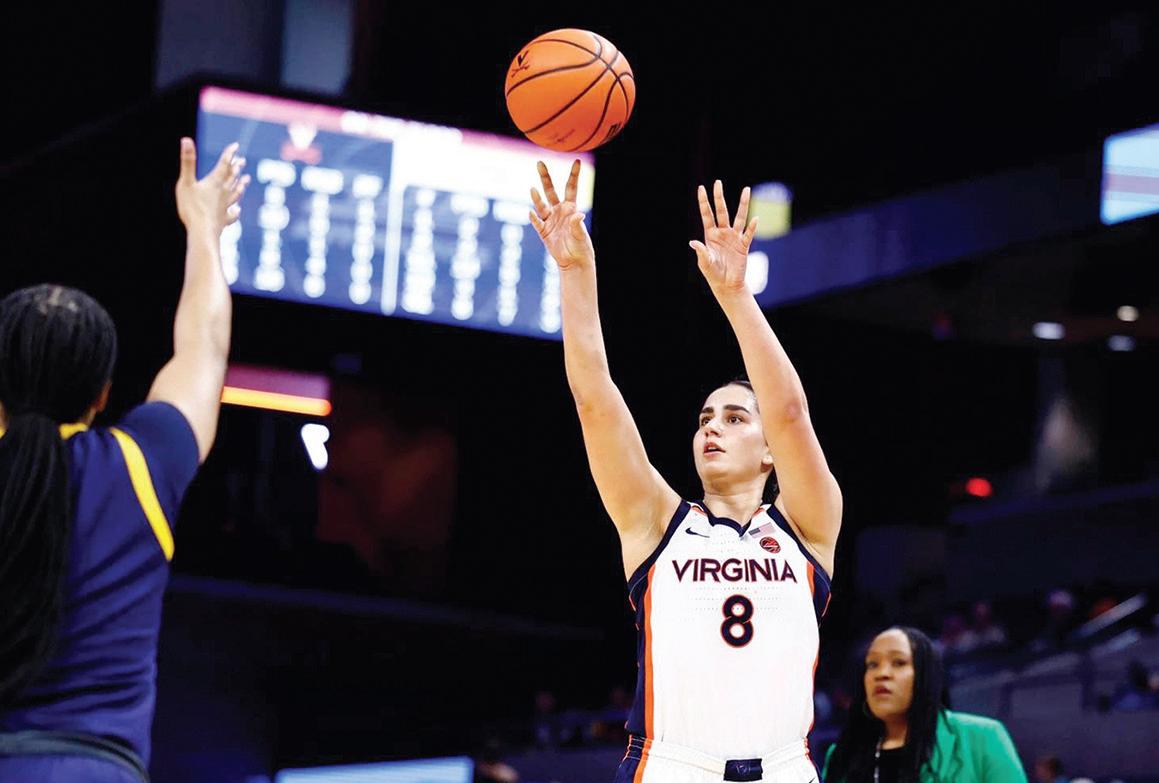
By Dalton James jamesdm@iu.edu | @DaltonMJames
Indiana women’s basketball secured its fourth transfer portal recruit of the offseason April 15, as former University of Virginia forward Edessa Noyan committed to the Hoosiers, according to her Instagram post. Noyan played in 28 games during her freshman season in 2023-24, making three starts as she averaged 2.9 points and 3.1 rebounds per game. She led the Cavaliers in field goal percentage as she shot 32 for 64 from the field.
In 2024-25, the Botkyrka, Sweden, native made 23 starts and took to the court in 26 total games. She missed
three weeks of the season as she was sidelined with pneumonia from Nov. 17 through Dec. 8. The 6-foot-3 Noyan averaged 5.7 points, 4.3 rebounds and 1.1 assists per contest. She shot 40.7% from the field and 32.8% from 3-point range as the Cavaliers finished the season with a 17-15 overall record and an 8-10 mark in Atlantic Coast Conference play.
Noyan was also named to the Under-20 Swedish National Team roster for the 2024 Nordic Championship. She also played in the FIBA U20 Women’s EuroBasket Championship, taking to the court in seven games and averaging 8.4 points and six rebounds.
Indiana head coach Teri Moren’s transfer portal class now includes guard Chloe Spreen, guard Phoenix Stotijn, forward Zania SockaNguemen and Noyan. The Hoosiers roster now has 11 players with six newcomers and five returners. The transfer portal is slated to close April 23, which gives Moren and her staff another week to recruit additional players to the program.
Follow reporters Dalton James (@DaltonMJames) and Savannah Slone (@ savrivers06) and columnist Ryan Canfield (@RyanCanfieldOnX) for updates throughout the Indiana women’s basketball offseason.
By Benjamin LeGrand and Emerson Elledge benlegra@iu.edu | eelledge@iu.edu
Around 100 protesters demonstrated April 15 outside the Greater Bloomington Chamber of Commerce event that hosted Sen. Todd Young at the Monroe Convention Center.
The older cohort of protesters lined the 300 block of College Avenue from as early as 10:30 a.m. to 1 p.m. for the scheduled discussion. They held signs reading “Due Process is a RIGHT” and “Medicaid cuts hurt Hoosiers,” among others, protesting potential cuts to social security, Medicaid, the Department of Government Efficiency and more of President Donald Trump’s recent initiatives. One protester held a sign reading “Honk for democracy” encouraging passing cars to sound their support.
Retired minister and political activist Bill Breeden, who unsuccessfully ran for the Indiana House of Representatives in 2016, brought a large green facial sculpture on a pole with a sign under it reading “Resist Fascism Embrace Democracy.” He said he and his wife set up his retirement in a way that they rely solely on social security.
“If they cut that, yeah, this is an attack on everything, you know, the United States should be about,” Breeden said.
“I’m worried about everything,” former IU Writing Tutorial Services employee Jo Ann Vogt said. “Medicare, Medicaid, Social Security, I mean, air, clean water, decent food to eat...”
“All things that older people depend on,” Bloomington resident George Dresher, who joined Vogt at the protest, added.
Throughout the protest, chants included, “Don’t be a chump, stand up to Trump” and “Hey hey, ho, ho, Musk and Trump have got to go.”
Bloomington Mayor Ker-
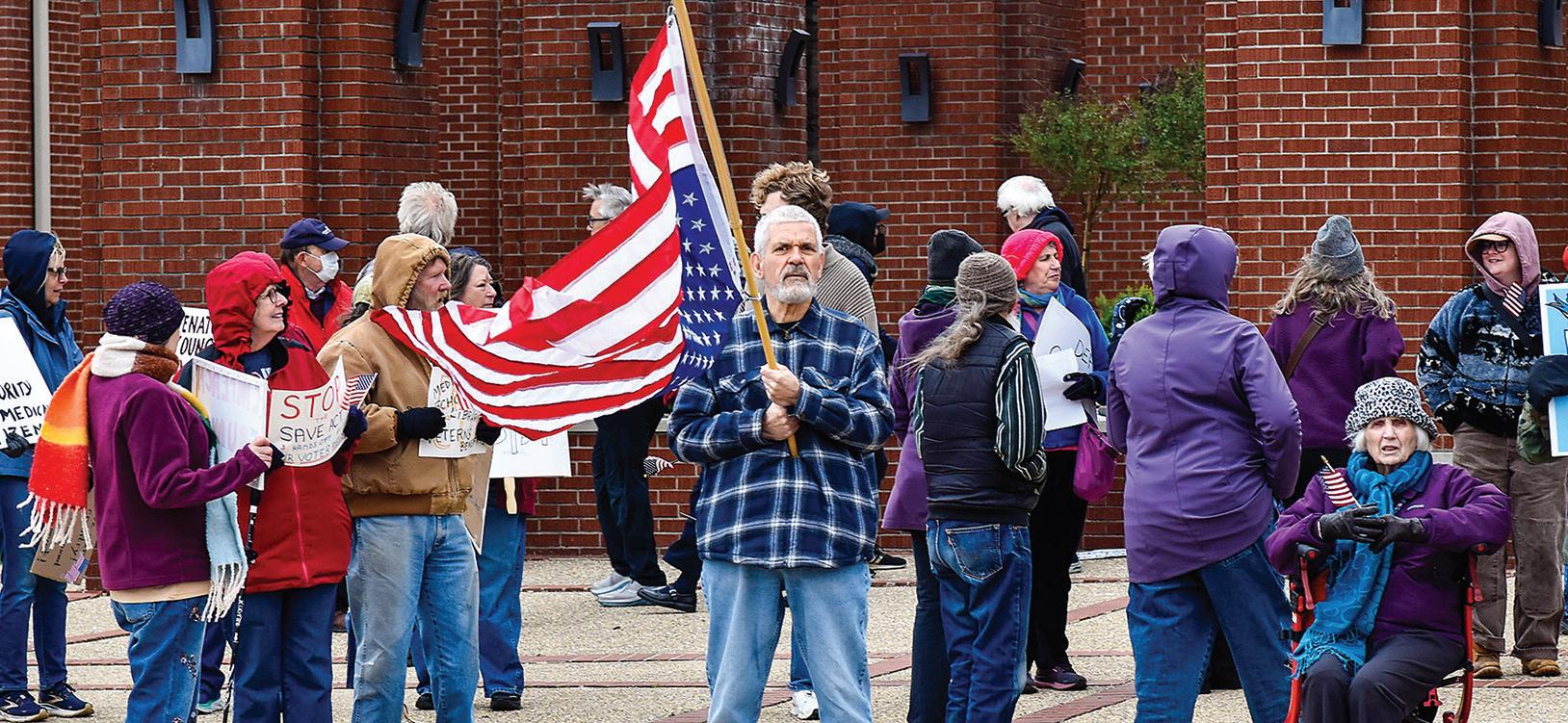

ry Thomson acknowledged the protesters at 11:20 a.m. and was handed an American flag, before eventually heading into the event with the flag in hand at 11:29 a.m.
“My hope is that he appreciates the complexity of the cuts that he’s endorsing, that it’s affecting real people and these are not ideological
programs,” Thomson said.
“So, while it’s good fiscal policy to attempt to balance a budget, the history of the math is definitively that the deficit has also increased under Republican leadership. So, we need to ensure that we have basic needs met for the residents of our country.”
Groups of protesters
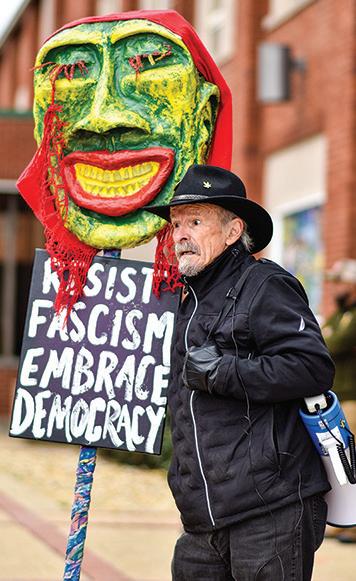
moved to the back parking lot of the convention center multiple times throughout the protest. At around 11:47 a.m., three members of the event’s security from Marshall Security LLC told a group of over 20 protesters that they were on private property and had to leave while threatening to call the police.
“MSI Security has no authority,” the protesters chanted to the three members of the company.
Two unmarked Bloomington Police Department cars eventually arrived around 12:10 p.m., with two officers telling the protesters that the Chamber of Com-
merce had leased out the lot for the event, making it private property, and telling protesters that they would be arrested for a misdemeanor trespassing charge.
Protesters pulled geographic information systems maps up on their phones when initially discussing the legality with the police, pointing to the lot as city property. The group chanted “No cops, no KKK, no fascist USA” while the two police officers and three Marshall Security LLC employees stood among the protesters in the lot.
About two-thirds of the crowd eventually moved to the nearby B-Line trail, while six protesters continued to discuss legality with the police. Eventually all of the protesters moved back to the front of the convention center at 12:35 p.m., to prepare to loudly chant during Young’s speech. During this altercation, the police did not tell the media to leave the lot, and the members of the media continued walking around the lot in preparation for attendees exiting the event while officers stood and watched. Later, one protester remarked, “so press is allowed to go on private property?”
Around 12:40 p.m., protesters gathered five cars across the street from the convention center and began blasting their car horns nonstop. Another car had its windows rolled down and played “Fuck the Police” by N.W.A. By 1 p.m., the expected end time of the speech, most protesters had dispersed from the front of the building back to the B-Line trail. One demonstrator passed out flyers of Young’s voting record to attendees leaving the discussion. Young talked with a few constituents in the back lot but left the premises without speaking to any protesters.
By Molly Gregory mogrego@iu.edu | @mollygregory22
Indiana Sen. Todd Young continued to ride the line between support and criticism for President Donald Trump in a discussion on tariffs, the Department of Government Efficiency and immigration April 15 at the Monroe Convention Center.
Young stressed that he has spoken with Trump’s administration to gain clarity on the goals behind the mostly rescinded tariffs enacted on United States trading partners April 9. He said he agrees with 90% of “what the president is attempting to do.”
“Maybe on that 10%, I discreetly talk to the president and share concerns and try to bring clarity to things,” Young said.
However, he said “the complications exist” when it comes to knowing the right time to stop. He’s also asked Trump what the rationale is behind the tariffs against each country.
The two have clashed oc-
casionally. Trump recently threatened to scrap the CHIPS and Science Act, legislation Young co-authored, which incentivizes the manufacturing of semiconductors in the U.S. Pete Yonkman, president of Cook Medical and moderator of the event, asked Young how he viewed the work of DOGE.
“There aren’t many things that I’ve encountered since I’ve been an elected official more popular with my constituents than DOGE,” Young said.
Audience members subsequently booed him.
“Except in Bloomington,” he added after the boos.
Young said that, for him, DOGE is part of a campaign to regain public trust in government by eliminating waste, fraud and abuse.
Trump ally Elon Musk has attended Republican senator lunches, according to Young. Young said he has Musk’s phone number.
“I’ve told Elon, I can’t wait until you get into the Pentagon,” Young said.



“There may be an opportunity to turn the pentagon into a triangle.”
Though he supports cuts to government spending, Young said he hopes the slashing process at DOGE “calms down somewhat” and that Musk hopes so too. Musk is classified as a


special government employee, meaning he can only serve the government for 130 days or less according to a guideline from the U.S. Federal Labor Relations Authority. That timeline ends in late May or early June, depending on how many days he works in that time frame.
After discussing the activities of DOGE, Young pivoted to immigration. He said he feels that “deporting criminals” should not be controversial.
“How about deporting non-criminals?” a woman in the audience asked. “Should that be controversial?”
This question came amid the mistaken deportation of Kilmar Abrego Garcia, who was wrongfully accused of



being part of terrorist group MS-13 and taken to El Salvador.
Young ignored her.
“Please don’t disrupt the senator,” Eric Spoonmore, president of the Greater Bloomington Chamber of Commerce, said at the podium.
“Do immigrants deserve due process, yes or no?” she then asked.
Spoonmore said she could go outside with the protesters if she wanted. A crowd of around 100 people protested Young’s appearance today in Bloomington outside the convention center.
Young elaborated later that he agrees immigrants should have due process, but didn’t want to answer the question without context.
Young took the stage after an introduction by IU President Pamela Whitten, who used her time on stage to tout the achievements of the university, including the advent of an IU dorm in Washington. As for the CHIPS and Science Act at IU, Whitten said the university will invest $111
“It
By Natalia Nelson nelsonnb@iu.edu | @natalianelsonn
The American Civil Liberties Union’s Indiana branch announced April 15 it had filed a lawsuit against the U.S. Department of Homeland Security over the termination of seven international student legal statuses.
The ACLU’s complaint is on behalf of seven students attending college in Indiana, including one at IU Indianapolis. It asks the U.S. District Court of Southern Indiana to enter a preliminary injunction that would prevent the detainment of the plaintiffs and reinstate the students’ statuses. The ACLU said that since the students were not allowed to challenge the terminations, the DHS violated their Fifth Amendment due process rights.
The DHS ended the plaintiff’s F-1 student status by terminating their Student and Exchange Visitor Information Systems record, a database that tracks compliance of nonimmigrant students with their F-1 student status.
The court document claimed that even if a visa is revoked, the U.S. was not authorized to terminate the plaintiffs’ SEVIS records. The database is used by school officials to update students’ addresses, courseload, enrollment and employment
to ensure status compliance.
According to the lawsuit, SEVIS termination must be based on a student’s failure to maintain their F-1 status, whether it be by voluntarily withdrawing, failing to maintain a full course of study or working without authorization.
The DHS can terminate a student’s F-1 status by terminating a SEVIS record, though they are historically ended by designated school officials.
The ACLU claimed that the students were “in full compliance with the terms of their F-1 status and have not engaged in any conduct justifying termination of the status”.
The Associated Press reported that students who have had visas revoked in the past have been able to keep their legal residency status — but that changes when the SEVIS records are wiped clean. Without legal status, students may be at risk of detention or deportation.
A judge recently permitted the Trump administration to deport Mahmoud Khalil, a graduate student at Columbia University who helped lead protests on the university’s campus against the Israel-Hamas war.
The lawsuit said that once students enter the U.S. on an F-1 visa, they are granted student legal status and permitted to remain
in the United States for the duration of status as long as they meet its requirements.
One of the plaintiffs is a graduate student and Chinese citizen studying at IU Indianapolis. According to the complaint, the student had never committed any criminal offenses and remained in good standing with the university.
The student learned of the termination of her student visa status April 11 in an email from the Director of International Student and School Services at IUI.
According to the email, the DHS listed the cause of her visa termination to be “failing to maintain status”.
The complaint said the student had not received notice of the termination of her visa from the DHS or any other agency, nor further explanation or information regarding its cancelation.
The student previously had her visa revoked after dropping below the required credit hours per semester necessary when she changed her major, but it was reinstated in 2018 until she completed her undergraduate studies in 2022. She has had her student visa status since January last year for her graduate studies.
Five other Chinese nationals are listed on the lawsuit, all attending Purdue. The seventh plaintiff is a Nigerian citizen and Ph.D. student at the University of
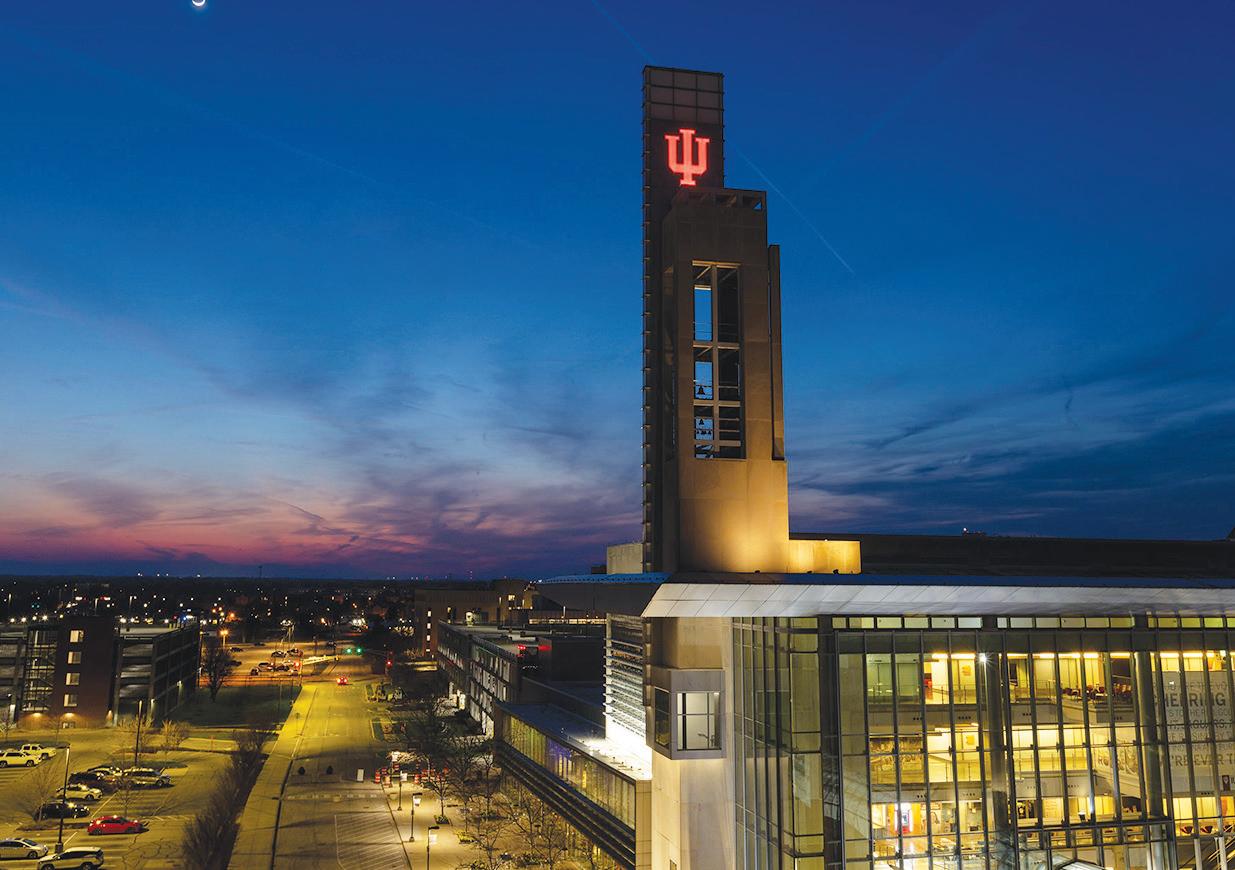
Notre Dame set to graduate in May.
Two of the plaintiffs had no criminal history. Several had deferred speeding tickets, charges that were dismissed or misdemeanors that resulted in fines.
One plaintiff studying at Purdue was charged with domestic violence in Illinois in 2022, though the case was dismissed, according to the complaint. An international student at Notre Dame was charged with domestic battery in 2024, but the charge was dismissed.
Over 700 international student visas were revoked nationwide, including an unknown number at IU.
In a letter obtained by the IDS, IU Vice President of International Affairs Hannah Buxbaum told campus leaders that the government did not inform IU nor the students when their records ae removed. Indiana Public Media first reported the document’s contents.
The letter claimed that IU was scanning the SEVIS database daily to inform affected students. It said that
students are being provided individualized counseling and that the visa revocation does not affect student enrollment at IU.
According to the report, some revocations were for low-level criminal infractions, such as speeding tickets or charges that were later dropped, and others, such as the ones at IU, had “no indication of the reason for the revocation”.
It said less than 10 IU students, some of whom had already completed their degrees, have been impacted.
By Safin Khatri safkhat@iu.edu
Partisan school board elections in Indiana are one step closer to reality. Indiana Senate Bill 287 passed the House on April 1 and was returned to the Senate with amendments. The bill is likely to appear on the Governor’s desk to be signed into law as of publication.
If passed, Indiana would join a subset of states across the nation that allow partisan school board elections. Alabama, Connecticut, Louisiana and Pennsylvania (with the exception of the Philadelphia School District), automatically allow partisan school board elections. Georgia, Rhode Island, Tennessee, North Carolina and South Carolina allow partisan school board elections or leave it up to local communities to decide.
Christopher Lubienski, director for the Center for Evaluation and Education Policy at IU, said he does not see a clear connection with partisan school board elections and student outcomes. He also said he cannot predict how this change could affect school board policy making.
However, he said a switch to partisan school boards could shift focus from academic achievement to more political conversations.
“A lot of the politics in school boards are culture war issues, which aren’t really about student achievements,” he said. “(They’re) about, you know, which books are in the school library or, you know, vaccinations or masks and that type of thing.”
Gary Bryne, a Republican
state senator from Byrneville, Indiana, said in February on the senate floor he authored the bill because serving on the school board was “the most partisan and political position he served on.”
“SB 287 is about accepting the reality and no longer pretending that our school boards are something they haven’t been for a long time,” he said on the floor.
Bryne continued his speech, emphasizing that school board elections are “unfair” because the “mom on the PTA” cannot compete against the candidate backed by the teacher’s union. He claimed his bill would even the playing field.
Bryne also said voters care about party affiliation because it’s an easy to understand candidates’ ideology and policy positions. He said across the state, school board candidates are already campaigning with both political parties to gain votes and claimed his bill will increase voter turnout.
In March, during the first bill reading before the House Committee on Elections and Apportionment, a few members of the general public testified.
Juanita Albright, president of Hamilton Southeastern Board of School Trustees, said before the committee the nature of school board elections is “inherently political.”
“What is more transparent than declaring your political party?” she said, “and shouldn’t we be confident enough to make that public?”
Albright said when she was running, many voters did not know her policies or even who she was, despite
her campaign efforts. She believes a partisan school board will correct this.
Marina Nelson, a 2024 candidate for the Avon Board of School Trustees, also testified that her political affiliation aligns with education policy.
“Political affiliation represents beliefs, values, policies that most closely align with an individual,” she said.
Lubienski said proponents of the bill argue partisan school boards increase transparency surrounding a candidate’s party affiliation, as they already face political influence via campaign donations. In Marion and Hamilton Counties, political action committees formed to support candidates have garnered thousands of dollars in donations.
He said he doesn’t agree with that premise, given what he called “mistrust” from the public at all levels of government. He emphasized seats on local institutions such as school boards are more “susceptible” to losing reelection.
April Hennessey, president of the Monroe County Community School Corportation Board of School Trustees, said the push for partisan school boards has little to do with student advocacy.
“I don’t think it’s about transparency,” Hennessey said. “I think it’s about other things that go beyond our children and our districts and start to bleed into state politics and even national politics.”
Lubienski said traditionally, school board elections have had low interest and turnout in comparison to other races. He said recently, groups on both sides of the

aisle began to drive interest in school board races and both parties accuse the other of “taking over the school board.” Community members are calling for recall elections or petitions for removal.
“It raises the question of ‘Are they accountable to the voters or are they accountable to the party?’” Lubienski said.
Hennessey said introducing political parties to the school board will create opportunities for decisions to be made from a “political lens.”
She also said partisan elections will completely change the way candidates campaign.
“Once you declare a party affiliate,” she said, “you can potentially run a bigger race with more dollars, you know, because then you can reach out to supporters who are specifically Democrats or Republicans.”
However, Hennessey said she received support on her campaign from people on both sides of the political spectrum because childfocused decisions are not
political.
“People were willing to have conversations and I was willing to listen to them about the issues that are important to them, and for us to discover that, many times, the issues that are important to all of us, for all of our kids, are the same,” she said.
“Then I think we find much more common ground.”
Cathy Fuentes-Rohwer is the president of the Indiana Coalition for Public Education. She is also the former president of the MCCSC school board. She said the school board is different than other elected roles, as it only focuses on public schools.
“Becoming a school board member is a very specific elected office,” she said. “We are not the people who run the school, but we are the community’s voice for decision making.”
She said the policies that school board candidates run on are made aware to voters, and voters do not need a “D” or “R” next to a candidate’s name to make an informed decision.
“Most voters can find out
the platform that a school board candidate is running on by attending school board forums, by reading their materials, by approaching the candidate, him or her or themselves, and finding out where they stand,” she said. Fuentes-Rohwer said she was concerned about The Hatch Act, a federal law that prohibits government employees from running in partisan elections. She said partisan elections would limit the number of quality candidates who could run for school board. She said there is no denying that society is becoming more divided and politicized. However, she believes institutions such as school boards should remain nonpartisan and student focused.
“Public schools should not be a partisan issue,” she said. “Public schools are an American issue.”
Editor’s note: Cathy Fuentes-Rohwer is related to a writer currently on staff at the IDS. That writer was not involved in the reporting, writing or editing of this story.
Faculty pass ‘Big Ten mutual defense compact’
By Natalia Nelson nelsonnb@iu.edu | @natalianelsonn
The Bloomington Faculty Council passed a resolution April 8 to form a mutual academic defense compact for the Big Ten Academic Alliance. The Rutgers University Senate passed the same resolution April 6 to establish an alliance with the Big Ten’s 18 universities to defend “academic freedom, institutional integrity and the research enterprise.” Rutgers called on the leadership of other Big Ten universities and their governing boards to implement the compact. For the coalition to be created, Big Ten leaders would have to convene a summit and initiate its implementation. If a compact was established, its funds would be distributed to provide “im-
mediate and strategic support to any member institution under direct political or legal infringement,” including legal counsel and representations, expert testimony, legislative advocacy and countersuit actions.
The resolution comes after IU professor Xiaofeng Wang was fired from IU the same day the FBI searched two homes he owned in Bloomington and Carmel. Wang’s firing was condemned by IU’s computer science faculty and the American Association of University Professors’ IU Bloomington chapter.
The Trump administration canceled $400 million in federal grants to Columbia University in March, citing the school’s lack of action against antisemitic harassment, and froze grants and funding totaling $1 billion for Cornell University
and $790 million for Northwestern. The administration also canceled nearly 300 student visas, including an unknown number at IU.
Abdulkader Sinno, associate professor of political science and Middle Eastern studies, told the IDS that he felt the Trump administration was trying to wedge its way into university affairs to accomplish their agenda. He mentioned Wang’s firing as motivation to pass the resolution.
Sinno was suspended by IU in December 2023 after issues regarding a room reservation for an event cosponsored by the Palestine Solidarity Committee.
“When they go after one university after the other, even very powerful universities like Harvard and Columbia who have large endowments, the universities cannot resist that, they’re
not strong enough,” Sinno told the IDS Wednesday. “So how about even public universities, like IU and Rutgers? They’re super vulnerable.”
Psychology professor emeritus Steven Sherman introduced the idea of a defense compact at the BFC meeting. Sherman said he heard about the Rutgers faculty’s resolution through a colleague at IU.
“It would link the universities, and it would provide a lot of support for faculty,” Sherman told the IDS. “I know quite a few faculty who’ve had their grants suddenly stopped in midstream.”
He said faculty had concerns regarding free speech and tenure. BFC’s version of the resolution was the exact same as the Rutgers resolution with the names of the universities swapped,
Sherman said. After he introduced the idea at the meeting, he said the vote for approval passed nearly unanimously.
IU recently removed diversity, equity and inclusion language from its diversity websites and signage around campus following a nationwide push against DEI. Indiana Gov. Mike Braun and President Donald Trump both signed executive orders in January to eliminate DEI initiatives.
Higher education institutions nationwide, including Ohio State University and the University of Michigan, are closing their DEI offices. The Chronicle of Higher Education has tracked changes to DEI in over 300 colleges.
Sinno said he thought the faculty felt the need to defend their colleagues and students.
“They wanted adminis-
tration to actually do something,” Sinno said. “To reduce that cost on any one campus, to coordinate and create (a) common pool of resources to use, to defend whoever is being targeted at the time.” He was, however, skeptical that IU’s administration would adopt the idea, as they would need to in order to create a compact. Sherman was similarly hesitant. Sherman said he spoke to Paul Boxer, a member of the Rutgers University Senate, who he said had been in touch with other universities to encourage others to adopt the resolution as well. “I think it has a chance of gaining foothold. I have no idea whether administrations will be open to it,” Sherman said. IU spokesperson Mark Bode did not respond by the time of publication.
Only A Chief said the workload for tribal nations has increased since January last year, when revised NAGPRA regulations went into effect and added multiple new deadlines for institutions to file inventories and contact tribal representatives.
Since then, the number of institutions reaching out for consultations has skyrocketed. Two years ago, Only A Chief was handling two to five consultations. Right now she’s handling 34, with more requests waiting in her inbox.
Thomas also said tribal nations also may need time to find reburial land for holdings that include ancestral remains, so that collections can be removed from campus and reburied once repatriated.
Thomas said she doesn’t try to rush that process.
“It would be disrespectful to treat the ancestral remains as just objects you're trying to hurry up and get out the door,” Thomas said.
As an enrolled member of the Chaui band of the Pawnee Nation, Only A Chief said she has helped rebury the remains of her ancestors in Nebraska, on land owned by the Pawnee Nation.
“They don't have to be on that shelf in that box in plastic, or however they were before I was able to take possession and bring them to Nebraska and put them back into Mother Earth,” Only A Chief said. “That's what gratifies me.”
In 2023, Only A Chief attended the first annual Intensive NAGPRA Summer Training and Education Program, a week-long NAGPRA training program co-led by IU and UIUC.
INSTEP teaches attendees to navigate the legal, political and ethical aspects of NAGPRA work. Previous programs have accepted 40 participants a year, with both domestic and international applicants, and offered travel scholarships for tribal participants.
Krystiana Krupa, the senior program officer for

Mon. - Fri.: 8:30 a.m. - 7:30 p.m. Sat.: 8:30 a.m. - 5 p.m. Sun.: 9:30 a.m. - 4 p.m. Closed for Lunch
1175 S. College Mall Rd. 812-323-4301 kroger.com/health/clinic
Brent Mezger, FNP-C Alyssa Van Duzer, PA-C


Baron D Hall, DDS, MSD Jake Willhite, DDS, MSD Orthodentists
Erica Hall, Hannah Elliott, Kaitlyn Jacobs, Marilyn Lee, Adrian Price
With modern techniques and a fun style, B-town Orthodontics is the most up-and-coming orthodontics office in the Bloomington area! We offer the latest technologies including invisalign, gold brackets, laser treatments, and even mini implants that can help restore missing teeth and even eliminate the need for surgery. B-town Orthodontics offers FREE consultations and don’t forget to download The Braces App, the hottest free app designed by B-town Orthodontics’ Dr. Baron Hall.
Tue. - Thu.: 8:30 a.m. - 4:30 p.m. Lunch 12:30 p.m. - 1:30 p.m.
Mon. & Fri.: Appointments Only 1320 W. Bloomfield Rd., Suite B 812-287-8851 btownorthodontics.com
NAGPRA at UIUC, worked for Thomas as a research assistant while earning her masters in anthropology at IU. Krupa said she and Thomas planned INSTEP in response to an increasing — and often unmet — demand for formal NAGPRA education.
Krupa said it’s uncommon for universities to teach courses on NAGPRA, and the available classes often last only one or two days. Krupa also said universities often assign work to faculty without prior experience or training, which can slow the process down.
“You might be in a position where you suddenly have to figure out how to interpret a law, a federal law, on behalf of an institution that you are representing when you're speaking directly with tribal governments, which are sovereign nations,” Krupa said. “And so it's also a political process.”
Thomas said the first INSTEP program received 94 applicants, more than four times the number she ex-
pected. The program’s second year received over 111 applicants.
“It just really shows that there's a need for NAGPRA training,” Thomas said.
Thomas said she’s planning a 3-day training for tribal practitioners in October, hosted by the Miami Tribe of Oklahoma, which co-hosted the National NAGPRA Committee Meeting with IU in 2023. She has also spoken with colleagues about the possibility of developing more educational opportunities at IU for students interested in learning about repatriation.
“We could develop a certificate that would be perhaps either through the law school or SPEA, or perhaps something collaborative that could be offered for people who are wanting to learn a little bit more about repatriation,” Thomas said.
Meghan Buchanan, an associate professor in anthropology at Auburn University, collaborated with the IU NAGPRA office while working at the Glenn Black Lab prior

Our board certified nurse practitioners and physician assistants provide primary care, acute care, physicals, vaccines, weight management and more to patients 12 months and older. Appointments and walk ins welcome. We accept most commercial insurance, Medicare and several Medicaid plans. We offer transparent pricing for the uninsured.

Ryan D. Tschetter, DDS Lauren R. Hoye, DDS Jackson Creek Dental is conveniently located on South College Mall Road. Most insurances accepted, including the Indiana University Cigna Insurance plans as well as the IU Fellowship Anthem. Dr. Tschetter and Dr. Hoye offer state of the art dental technology such as Zoom whitening, same day crown appointments, and Invisalign. We also provide restorative, cosmetic and emergency care. We pride ourselves in giving the best care to our patients while offering a pleasant yet professional atmosphere.
Mon. - Thu.: 7 a.m. - 5 p.m. Fri.: 7 a.m. - 3 p.m. 1124 S. College Mall Rd. 812-336-5520 jcdsmiles.com

Dr. Andrew Pitcher, D.C.
Dr. Crystal Gray, D.C.
A Way of Wellness Chiropractic specializes in comprehensive spinal care. We offer treatment for many different spinal conditions and problems, while also addressing the body as a whole. We provide effective chiropractic care helping patients reduce stress, improve mobility and spinal health. The quality treatment we provide is always fit to your individual needs and goals. Let us help you achieve and maintain good spinal health. We look forward to meeting you!
Mon. - Thu.: 8 a.m. - 6 p.m. 1121 W. Second St. 812-336-2225 bloomingtonchiropractor.com
to 2016. At Auburn University, Buchanan has run multiple job searches for NAGPRA positions, and she said the applicant pool is steadily growing.
Buchanan said the increased interest in NAGPRA represents a shift in how anthropologists and archaeologists view their work.
“Descendant communities and local communities’ concerns and needs are being brought to the forefront of doing archeology,” Buchanan said.
Buchanan said the field of archeology is also evolving a new approach to NAGPRA compliance in areas of research.
“We want to do things right,” Buchanan said. “We want to follow the law. We want to embrace the spirit of the law.”
Thomas said she hopes institutions take NAGPRA as a roadmap for international repatriations, which are not included under the act’s requirements.
Gabrielle Goodwin, who works in cultural heritage
law and policy at the Maurer School of Law, said she’s spoken with Thomas about the possibility of collaborating with IU Global Gateways to host a conference abroad, which Goodwin said could offer NAGPRA training while boosting public awareness. In March, IU completed its first international repatriation to the Rapa Nui people of Easter Island. During that repatriation Thomas worked with Francisco Nahoe, a Catholic priest and Franciscan friar, who is a delegate for the Te Mau Hatu, the Easter Island council of elders, for recovery and repatriation. Nahoe said institutions need to take a broader approach to repatriation than what is required in the NAGPRA regulations.
“In that respect, IU understands what I’ve called the ethos of repatriation,” Nahoe said. “Which is, to be clear, not repatriation that is compelled by statute, but rather repatriation that is compelled by moral obligation and nothing else.”

Vasquez MD
- Fri.: 8 a.m. - 5 p.m. 815 W. Second St. 812-336-6008 vascularcenterandveinclinic.com Physicians

Dr. Andrew Jones, Dr. Marzia Zamani, Cheyenne Brown, Megan Sipes, Milli Nally, Kenzy Hawkins, Christina Thompson
Dr. Tavel Family Eyecare is your partner in your personal eyecare journey. Since 1940, the company has believed that every Hoosier deserves quality eyecare and vision solutions at an affordable price.
Dr. Tavel offers comprehensive eye exams, special testing, management of eye diseases, glasses, contact lenses and much more, all backed by an insurance acceptance guarantee. The company is committed to advancing eye health by investing in the latest technology and providing treatments that are right for every patient’s unique needs.
Mon.: 7:30 a.m. - 6 p.m. Tue.: Closed Wed.: 7:30 a.m. - 6 p.m. Thu.: 9 a.m. - 7:30 p.m. Fri.: 7:30 a.m. - 6 p.m. Sat.: 7:30 a.m. - 1:30 p.m. Sun.: Closed
2552 E. Third St. 812-233-2343 drtavel.com/locations/bloomington

Our eye care clinics serve patients in Bloomington-Atwater Eye Care Center and Indianapolis Eye Care Center, with faculty doctors and student interns who work together to provide the most comprehensive eye care available. Our many services include primary care, pediatrics, low vision, dry eye, disease, laser and surgical care, contact lenses including specialty lenses, myopia management, aniseikonia, and eye wear center. Open to the public and accepting most insurances.
Mon.,
744 E. Third St. 812-855-8436 optometry.iu.edu

and more to patients 12 months and older. Appointments and walk ins welcome. We accept most commercial insurance, Medicare and several Medicaid plans. We offer transparent pricing for the uninsured.


Austin C. Starr, D.D.S
ORAL SURGEON? Dr. Starr is an Indiana University Football Alum who provides pain-free experiences for all Hoosiers with IV sedation. He performs specialized oral surgery services including Wisdom Teeth Extractions, Dental Implants, Bone Grafting, and Plasma
Hagan St., Suite 201 812-822-2489 bloomingtonbraces.com
taking care of you!
Mon. - Thu.: 8 a.m. - 5 p.m. Fri.: 8 a.m. - 4 p.m. 473 S. Landmark Ave. 812-318-1023 starroralsurgery.com

Jan Taylor-Schultz
Suite 203 812-334-0001 jantaylorschultz.com Eating Disorder

Dr. Zachary Short, O.D.
Dr. Madison Witthoft, O.D.
Welcome to Insights Optical, where quality eye care is our number one priority. Our dedicated team is ready to learn all about you and your vision needs while using innovative technology and a comprehensive care approach to take care of your eye health.
Mon.: 10 a.m. - 6 p.m. Wed.: 9 a.m. - 4 p.m. Tue., Thu., Fri.: 9 a.m. - 5 p.m. 415 S. Clarizz Blvd. 812-333-1911 insightsoptical.com

Dr. Philip Clark Brittain Jenna Kelly, RN
Vibrant Life specializes in hormone replacement therapy and medical aesthetics. Vibrant Life is pleased to offer personalized care, employing the latest medical technology. Services include: hormone therapy, neuromodulators (botox, dysport), dermafillers, microneedling, laser hair removal, age spot reduction, blue light acne treatment, treatment for urinary incontinence
EIVIN’S INSIGHT
Trump, tariffs and the decades of decline that got us here
Eivin Sandstrom (he/him) is a senior studying political science and Spanish; he can be found on social media @UplandSandy.
President Donald Trump’s “Liberation Day” tariffs have been confused, chaotic and disastrous. He touted his tariff regime as an effort to onshore manufacturing. Yet, simultaneously, he’s undermined this goal by also claiming them to be both a replacement for income tax and merely a geopolitical negotiating tactic. In enacting his tariffs, Trump circumvented the Republican controlled Congress, spooked foreign investors and plunged markets into turmoil.
The policy was announced April 2, introducing a 10% baseline tariff of all imports from all countries and additional “reciprocal tariffs” to be placed on certain nations with large trade deficits. On April 9, the same day the increased rates took effect, Trump reversed course and announced a 90day pause on the reciprocal rates on all countries except for China, while maintaining the 10% baseline rate. Most recently, the White House announced that electronics imported from China, like smartphones, would be exempt from the steep 145% tariff on Chinese goods and will only be subject to his 20% “fentanyl tariff” until his “semiconductor tariff” is announced in “probably a month or two.”
Despite facing backlash
from Wall Street donors and those fearing for their retirement portfolios, few Republicans have dared to criticize their president. Trump’s vice grip on the Republican party is owed to the tremendous political capital he’s accrued branding himself as antiestablishment to the electorate. Trump is afforded the leeway to break norms and threaten stability because he uniquely sympathizes with the economic hardship associated with those norms and reflects a nostalgia for a time before it.
Economists often dub the period between 19451979 the “Golden Age of Capitalism,” when the U.S. economy saw consistent, unprecedented growth in gross domestic product. New Deal policies ushered in an era of skyrocketing wages in unionized manufacturing jobs, affordable homeownership and a robust social safety net that assured a dignified life to the elderly, disabled and unemployed. The increasing economic mobility of the middle class provided fertile ground for many hallmarks of American culture to sprout.
Families had the luxury of buying their own homes and automobiles, which quickly became a staple of the American dream. The burgeoning auto industry made cities like Detroit into boom towns. This newfound affluence allowed citizens to spend time and money on leisure, spawning iconic cultural staples of the era like

Motown Records. Consumer goods like radios and televisions were now affordable, meaning Americans could enjoy football, baseball and basketball from the comfort of their living rooms. However, this trend of shared prosperity began to reverse in the 1970s as American politics left the New Deal era and entered the neoliberal era.
A bipartisan consensus formed in Washington supporting free-trade, deregulation of business, reducing the welfare state and military interventionism. While President Jimmy Carter implemented austerity measures and cut industry regulations, President Ronald Reagan fully embraced neoliberalism with his tax cuts, rampant deregulation and surge in military spending. President Bill Clinton carried neoliberalism into the new millenni-
Keep
Jack Davis (he/him) is a sophomore majoring in media and pursuing a minor in folklore and ethnomusicology and a certificate in journalism.
The phrase “flooding the zone” was adopted in 2018 by former Trump White House chief strategist Steve Bannon. It describes a strategy aimed at overwhelming the media and American public with so much information that it is impossible to keep up. This strategy of distracting us with the noise was often successful in Trump’s first term.
Though Bannon first embraced this tactic in 2018, Trump’s current administration has used it even more in its first three months than any other president. By the end of January, Trump had signed 46 executive orders, already a quarter of what he signed during his first term and a third as many as Biden signed during his entire presidency. These executive orders range from attacking transgender rights and ending diversity, equity and inclusion initiatives to threatening law firms and issuing blanket tariffs on foreign
nations. He also signed an order banning paper straws. This rapid-fire approach to executive orders is key to the “flooding the zone” strategy. By issuing so many directives so quickly, the administration ensures each action gets lost in the shuffle, creating a sense of urgency and chaos. This prevents a thorough and measured response to policy decisions, saturating the conversation and keeping opponents on the defensive. It also takes time to mount legal opposition to each order.
Executive orders are just one way Trump and his allies flood the zone. Equally egregious is the Trump administration’s rhetoric. Think about it: within the last three months, there’s been discussion of making Canada the 51st state, of Trump serving for an unconstitutional third term and annexing the country of Greenland.
This is rhetoric you’d expect to hear from authoritarian countries like modern-day Russia or Germany during World War II and not from the United States of America. The scary part is that you can’t be entirely
um, signing the NAFTA freetrade deal, balancing the federal budget by gutting the welfare state and expanding NATO influence eastward through enlargement and bombing in Yugoslavia.
While neoliberal policies provided massive gains for American companies, the benefits never trickled down. Instead of sharing in the riches, workers saw the decline of the industrial Midwest, perpetual involvement in foreign wars and a middleclass little wealthier than they were in the ‘70s. Wealth inequality exploded in this period as corporate America outsourced manufacturing and spent their savings on executive compensation and shareholder dividends.
As America entered the 21st century, the consequences of neoliberalism began to manifest. Bipartisan
JACK’S JAMS
your eye
sure if they are serious or not. For example, Vice President JD Vance visited Greenland with the message that it join the United States even though Denmark has told the U.S. numerous times that it isn’t for sale. In a poll commissioned by two Danish and Greenlandic papers, 6% of Greenlanders said they think the island should join the U.S. In the survey, 9% said they were undecided. It is hard to know if this is a serious threat, but we need to pay attention to it all the same.
The challenge is knowing whether what the Trump administration says is a real plan or a distraction from other issues. Like in baseball, how do we know what balls to swing at? The media must better inform the public about the issues and help filter out daily garbage. The news of the day needs to be acknowledged, but not all actions and statements should be given equal weight or airtime.
The media can help us distinguish between what is consequential and what could be a distraction. Journalists should focus on pro-
on the ball
viding context and analysis, digging deeper into possible motivations and implications, rather than just amplifying the actions and rhetoric of whoever is in power. For example, with the current situation in Greenland, I see a lot of news organizations giving too much credence to the idea this is a real possibility even though Greenland and Denmark have both said it’s not for sale. For updates on this situation I’ve followed NPR because I feel it does the best job providing the information but also acknowledging the craziness of the claims being made by the Trump administration Fostering an environment where the public is media literate is essential and a responsibility, we all share in a democracy. According to Boston University, nearly 75% of Americans believe being media literate is important but less than 50% of citizens know where to find that training.
Promoting media literacy can empower the public to know what a reliable source is and what may be misinformation. Media literacy
deregulation of the finance sector under President Clinton led to the subprime mortgage crisis and Great Recession of 2008. In its wake, dissatisfaction toward a failing political status-quo propelled Barack Obama to a landslide 2008 victory on a platform of systemic “change.” Instead, the public received more neoliberalism; banks that enriched themselves gambling on people’s mortgages received a taxpayer funded bailout while millions lost their jobs and homes.
As Obama failed to depart from neoliberalism, dissatisfaction turned to cross-sectional anger. On the political left, anger manifested as the Occupy Wall Street movement. While Occupy was acknowledged by Democrat leadership, the party establishment failed to provide an outlet for their frustrations.
Presidential primary bids from Bernie Sanders in 2016 and 2020 echoed anger with the neoliberal consensus but were stymied and rejected by party leadership in favor of candidates inextricably linked with the legacy of neoliberalism in Hilary Clinton and Joe Biden.
The right, however, gave refuge to the anger, absorbing it into the Republican mainstream. Failures of neoliberalism became understood by the Republican base as the failures of elite institutions; notably a bloated, wasteful and out-of-touch federal bureaucracy perceived to despise their “tradi-
tional” values. The Tea Party movement saw the party appropriate this anger, as voters replaced several Republican incumbents with firebrands echoing that understanding in the 2010 congressional primaries. It was in this context that Trump ascended to power. Speaking to the damage inflicted by free-trade and perpetual involvement in foreign wars, Trump reflected a resentment toward the neoliberal consensus and a contempt for the institutions, cultural attitudes and figureheads associated with it. Without competition on his populist rhetoric, Trump stood alone to voters as the anti-establishment candidate on the 2016 ballot, winning him former Democrat strongholds in the rustbelt and, ultimately, the presidency.
I don’t have good news for those hoping for an end to the Trump era; it’s here to stay. The context expressed in this piece should serve as a lesson to the Democrats and anyone hoping to counter Trump’s power. There is electoral success to be found in populist messaging that mirrors the justified anger of a working class that’s been shafted for a generation. The viable counter to Trump will build their power by railing against institutions and politicians captured by corporate America and advocate for radical, universal, redistributive policies.
esandstr@iu.edu
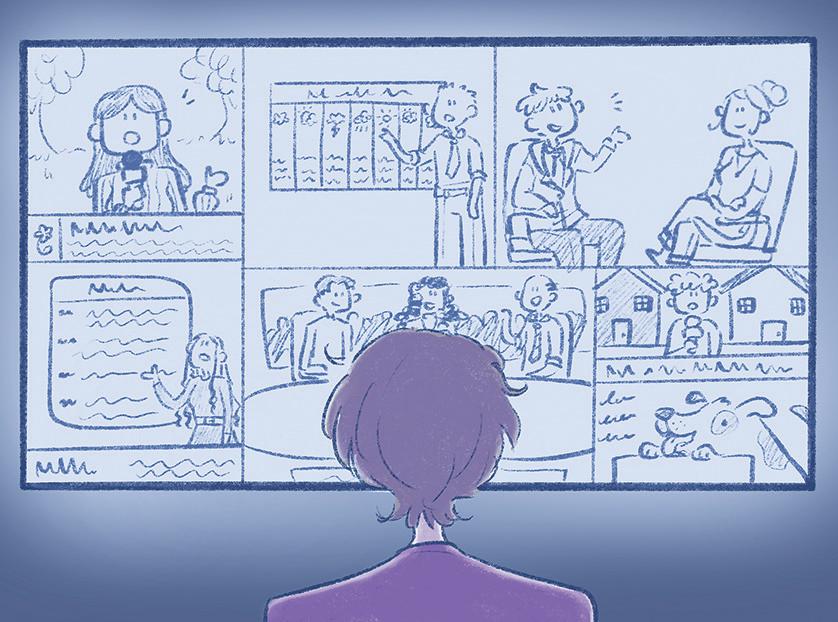
shouldn’t be a rare skill to find; rather it should be the norm. Media literacy education can be delivered in all aspects of our lives through schools, public programs and the government. The training could include how to evaluate your sources, recognize our own biases and detect possible misinformation.
IU Media School professor Kamady Lewis said the best thing the media can do is hold the powerful responsible.
“Being a journalist isn’t about being liked or not
Max Moore (he/him) is a sophomore studying political science and journalism.
A new AI trend has sparked debate, with users prompting DALL-E, Open AI’s software for image generation, to create cartoon versions of personal images. This led animation fans to begin creating AI-generated art in the style of the legendary animation studio, Studio Ghibli. With resume-boasting Academy awards and other honors, Ghibli is revered for its emotional, thoughtprovoking stories and unbelievably detailed animation, which is done nearly all by hand. The AI-generated pictures mimic the style and aesthetic of original Ghibli films but lack many of the fine details found in the real works. For casual fans, it is a fun trend to imagine themselves within the world of Ghibli, but for true fans of Hayao Miyazaki’s work, it is deeply disrespectful Ghibli’s creator, Hayao
Miyazaki, is regarded as a legend in animation and art in general. He is respected for his meticulous attention to detail and weaving creative social commentary into the plots of his movies. From his creative process to the uniqueness of his characters’ personalities and designs, Miyazaki personifies the artist’s spirit with every detail, which masterfully captures emotion.
Miyazaki previously stated he does not want to use AI in his work and is disgusted at animation generated by AI being called “art.” In a viral online clip, a group of animators presented Miyazaki with a new AI tool that made an animation of a monster that used its head to walk. An animator explains the AI was able to create something so creepy because it had no concept of how painful walking on one’s head would be — they argued the tool was helpful because it could have inhuman ideas.
“Every morning, not in recent days, I see my friend who has a disability,” Mi-
yazaki responded. “It’s so hard for him just to do a high five; his arm with stiff muscles can’t reach out to my hand. Now, thinking of him, I can’t watch this stuff and find it interesting. Whoever creates this stuff has no idea what pain is.”
AI cannot comprehend pain — the same way it cannot comprehend love or any other human emotion because it is not human. Without human emotion, there can’t be human expression; we are left with a hollow copy of what a machine is guessing to be the human experience.
After a long pause, Miyazaki continued. “I am utterly disgusted,” he said in the video. “If you really want to make creepy stuff, you can go ahead and do it, but I would never wish to incorporate this technology into my work at all. I strongly feel that this is an insult to life itself.”
This issue may seem harmless, and many may not view AI in art as an issue at all and see it as a more ef-
ficient way to create content we enjoy. To those people, I ask them to consider Miyazaki’s final comment first. Art is the expression of one’s creativity through various mediums to convey emotion. Creativity, both natural and honed, allows artists to express relatable emotions and connect to shared human experiences. This is generally how we have understood art, but this is being challenged for the first time in human history. To those who think the creator behind art is irrelevant, I ask what we as consumers gain when we cut the process out of everything in life and if it is worth the repercussions. Do we want our food served in under five minutes, the cast to immediately take the stage after intermission or art that otherwise would take hundreds of hours of pure dedication to be made in a few seconds. What happens in the years an artist spends painting a canvas or a musician uses to create songs? Art is not created in the conception of an
liked, right?” Lewis said. “It’s about the truth, and we always say you can not like the facts, but it doesn’t make it not true.” But it can’t just be the media holding the powerful accountable. Every citizen has to participate, pay attention and speak out, or no substantial change will be made. It can be scary to call the powerful out, but it becomes less frightening if we all do it together. We have to keep our eye on the ball to know where to swing.
jjd5@iu.edu

idea or in its final product, it is molded by joy, anger, love, sadness and all the other emotions an artist uses. It’s the process in between that we crave in art whether consumers realize it or not. Once we lose appreciation for that process, we lose appreciation for the emotions that define the human experience So, when you see your little brother and his buddies post a picture that makes them look like extras from “My Neighbor Totoro,” don’t just feel bad for Miyazaki;
feel bad for humanity. It’s important to remember that, despite its large impact, we are in the infant stages of AI development. In a few short years, we’ve used it to replace animators, imitate our favorite musicians, and even write movie scripts. This trend of replacing humans with machines isn’t aesthetically pleasing, it should make you fear a dystopia where human expression is considered too time-consuming to appreciate.
mjm39@iu.edu
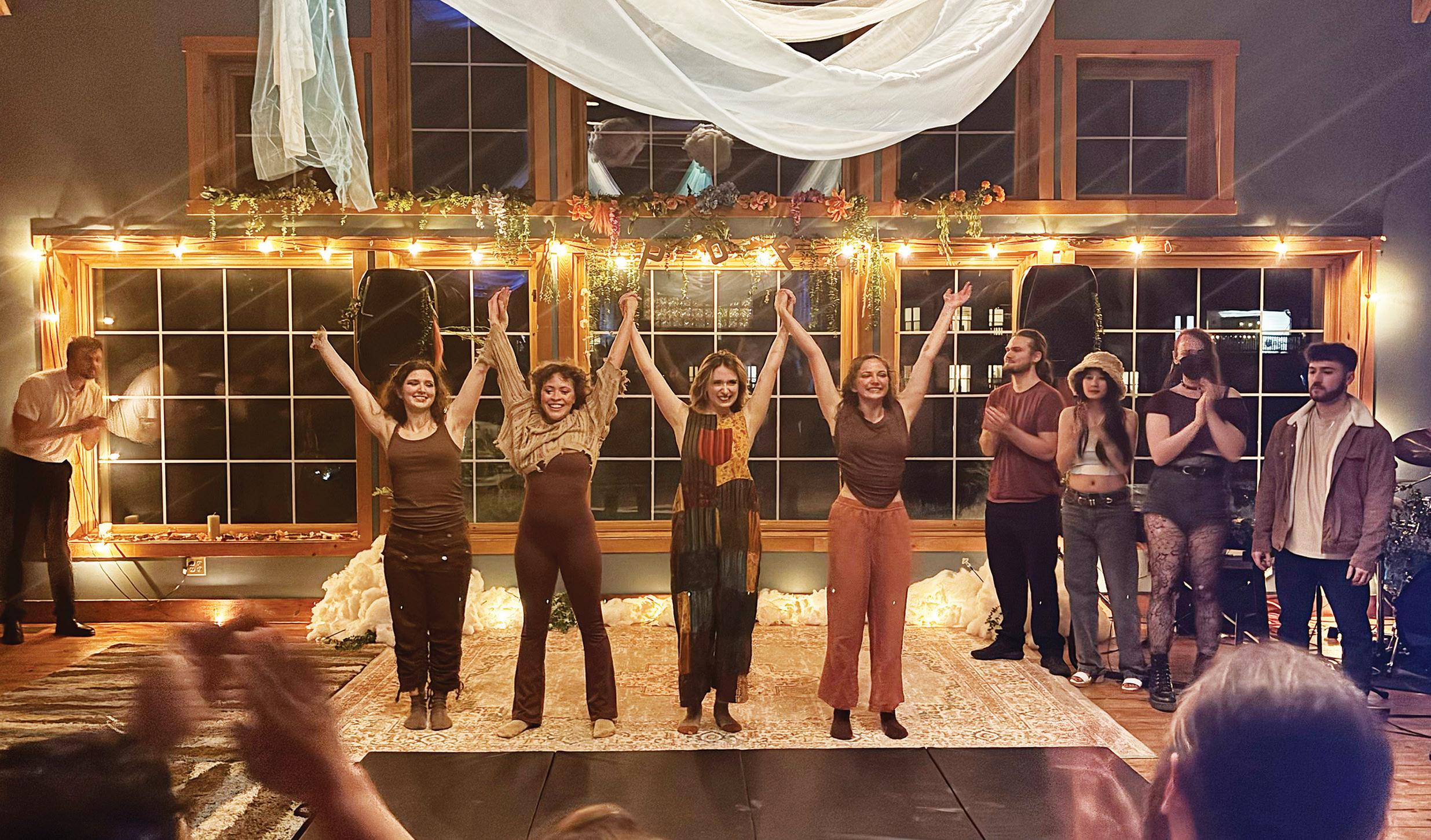
The immersive event blended dance, music, film, tattoo, painting, mixology, gastronomy and tarot reading
By Arnaav Anand arnanand@iu.edu
About a year ago, Maxime Werk, an IU senior studying liberal studies and contemporary dance, came up with the idea to create a one-of-a-kind collective platform that could blend various art forms into one immersive experience.
With the help of her producers, IU alumna Nicole Alpizar and IU senior Maddie Shimura, Werk’s brainchild manifested on April 11 and 12 as the “POP Production” in the clubhouse of The Fields apartment complex.
“Everything in Hollywood feels stuck on sequels and recycled ideas,” Werk said. “I was bored and frustrated and it felt like the creative industry was becoming less and less creative. I wanted to do something innovative and the only way to do that is to bring in multiple perspectives and ideas.”
The clubhouse was bedecked with earthy Bohemian decorations and fairy lights to reflect the freespirited nature of the art on display. Participants were ticketed at $15 with a $12 early-bird price, and were free to mingle and explore the display tables and activi-
ties before doors to the live show opened at 7:30 p.m.
The tables featured a myriad of eclectic art forms handcrafted around the theme of the event. Participants could indulge in light refreshments while strolling around to purchase art works, posters and paintings, get a tattoo done by a professional or have their fortune divined by a tarot card reader. The Tap brewery catered the refreshments, featuring a limitededition cocktail dubbed the “Pop, Lock and Drop It” for the event.
“I was bored and frustrated and it felt like the creative industry was becoming less and less creative. I wanted to do something innovative and the only way to do that is to bring in multiple perspectives and ideas.”
Maxime Werk IU senior
Werk said the event allowed the artists to collaborate and express their visions, with every artist creating their own work un-
By Sophie Albert soalbert@iu.edu
The long awaited “A Minecraft Movie,” an adaptation of the popular video game Minecraft, hit cinemas April 4 and has been taking the world by storm. The movie has already surpassed $550 million worldwide after a big domestic opening box office of $162.75 million. This is the biggest opening weekend of the year and the largest video game movie opening weekend of all time. The movie follows a group of people who get transported to the Overworld, the cubic world of the Minecraft game. They must work together with the help of a master builder, Steve (Jack Black), in order to return home while facing the dangerous challenges of the environment and the treacherous monsters that spawn at night. Despite pretty mediocre critics reviews, this movie has taken over the internet. The film includes several jokes and references to the original game that have gone viral on TikTok. Specific lines from the movie has generated hectic reactions among fans in movie theaters, the most infamous being “chicken jockey.” There is a moment in the film where a character must combat a baby zombie rid-
der the show’s theme. She said she initially wanted the show to represent a singular theme with POP standing for “Power of Pleasure,” but decided to segment the live show into four acts, each representing power, pleasure, privilege and peace, respectively.
“I didn’t want this to be a one-time show,” she said. “I wanted it to grow — to be a touring production with different themes, artists and cities. Those four themes became the foundation for how musicians composed, how dancers created improvisational work and how other artists built their pieces.”
Werk said the performers met through a call-out during the fall semester. She said although they had rehearsed throughout the process, not everyone had been able to attend every time, and this week was the first time everything had come together.
Not everything came together as smoothly as Werk had expected, with an untimely hurdle at the 11th hour. She said the City of Bloomington shut down the original venue — The Mill — April 4 because of structural issues.
“We got the call at 4 p.m., just a week before the show,”
she said. “So, we scrambled, called everyone we could and got lucky. The Fields didn’t have an event scheduled, and they let us in. It felt meant to be. The vibe is perfect.”
Elizabeth Capetillo, an IU alumna and one of the singers in the live show, said she was putting up flyers for her own music when she saw the call-out for the POP Production and decided to join immediately.
“Being in a space that allows true creative collaboration — nothing forced — is something I’ve been longing for,” she said.
At 7:30 p.m., the audience was invited to the live show. The two-hour set of dance and musical performances incorporated interludes at the end of every act to allow other types of art to be expressed on stage.
“From the moment you step in, you’re not just an audience member, but a part of a living, breathing work of art,” Werk said in the opening speech. “Nothing at the POP will ever be recreated, so what you experience here will be truly one-of-a-kind.”
There was no stage laid out, keeping the performers at level ground with the audience to augment the immersive aspect of the show. The
performers even moved up close to audience members during some of the presentations.
“Being in a space that allows true creative collaboration — nothing forced — is something I’ve been longing for.”
Maxime Werk, IU senior
Most of the performances involved four dancers gracefully exhibiting interpretative dance to the tune of singers and musicians playing their own tracks. The first interlude featured a brief film presentation with the aid of holographic projections on the walls.
The second interlude to mark the intermission featured the first course of the night — a color-changing soup — by aspiring chef and IU student Alexia Kline. She also came up with other bitesized vegan dishes for audience members to eat at specific moments throughout the show.
The third interlude featured a live tap-dancing paint performance by Robert Burden, a visiting professor in the IU Department of The-
atre, Drama and Contemporary Dance. The paintings from both days of the show were available to purchase after the show for $500. The live show concluded with an upbeat dance with performers calling the audience up front for a convivial dance celebration together.
Evelyn Melton, an IU student among the audience, praised the cast and crew for all their effort in making the show come alive.
“I really love art, and I was really connected to all the art forms that were put on today,” she said. “I feel like showcasing all of those talents was really powerful and impactful to me personally.”
Werk is passionate about creating immersive, collaborative experiences that bring the community together. She said she envisions the POP Production to be a touring show like the Cirque du Soleil, with each city having its own name, theme, lineup and collaborating artists.
“We’re thinking LA might be next since both my producers and I are interested in moving there,” she said. “I’m not sure if we’ll do another show in Bloomington next year, but this will always be our home base. If people want it, we’ll bring it back.”
How ‘A Minecraft Movie’ has become an internet sensation

ing a chicken, a monster that is extremely rare to spawn in the actual game, which has prompted young theater goers to shout along, throw popcorn and give standing ovations at this moment along with a couple other game references throughout the film. While some people have complained about this behavior being very disruptive, with even some instances of cops being called to theaters to calm people down,
I honestly think this could be a good thing for movie theaters. Of course, if you’re going to go see this movie, you should be prepared for the craziness and be ready to embrace it, and it might not be a theater experience some people are looking for. However, movie theaters have been struggling significantly in recent years, seeing empty theaters even for big budget Disney movies like “Snow White.” Having a movie that encourages peo-
ple to go see it in theaters, no matter the intent, is a powerful thing. The distinctive viewing experience of fans seeing “A Minecraft Movie” in theaters and getting to collectively react to these iconic moments gives people a “reason” to seek out the theater experience. This could get people excited about movie theaters again and maybe improve the theater attendance of future movies to come.
I think it could be helpful to implement screenings that are specifically “calm” in case people don’t want a crazy theater experience or may be worried about bringing younger kids to a hectic screening, similar to how grocery stores are implementing low stimulation days in order to better accommodate people with sensory sensitivities.
However, this new theater-going culture, while a bit unorthodox, could be a
big player in reviving movie theaters. This distinctive theater experience was only able to come about thanks to who the filmmakers made the film for.
“A Minecraft Movie” managed to become so successful because it really leaned into the Minecraft community as its audience, making jokes and references deeply rooted in the fanbase. So, people who love playing the game and grew up playing it feel like the movie was made for them. Although it is pretty universally agreed that this isn’t actually a “good” movie, theater goers have such fun celebrating the Minecraft community through the movie that the enjoyment ends up mattering more than the actual quality of the film. By making the movie as an homage to the game and its fans, people have been able to connect with it, and through posting about it on social media, it has become an internet sensation. This means that the love and enjoyment of the film goes past just the watching experience; it becomes a collective and universal experience shared through hundreds of online videos. Again, this film is not a cinematic experience, but it proves that maybe film isn’t just about being cinematic, but more about the fun you have along the way.
By Joey Sills sillsj@iu.edu
François Truffaut, the seminal French New Wave director behind “The 400 Blows,” argued in a 1973 interview with the Chicago Tribune that, “every film about war ends up being pro-war.” He didn’t completely enunciate what he meant by this, leaving the provocative statement up to interpretation.
I’m not sure I agree with this statement as it stands, I do think the anti-war film can exist. I’m more inclined to Francis Ford Coppola’s take on the matter, that he thought anti-war films should be “something filled with love and peace and tranquility and happiness. It shouldn’t have sequences of violence that inspire a
lust for violence.” Alex Garland, co-director, along with Ray Mendoza, of “Warfare,” disagrees entirely.
“I would say it’s not possible to show war in any way that resembles what it really is, in terms of its brutality and violence and emptiness, without it being anti-war,” he argued.
This is all well and good, it’s a point that stands in legitimate opposition to Coppola’s argument. But even should this be the case, to claim “Warfare” is an antiwar film would be a murky claim at best — a claim that muddles the very meaning of being “anti-war” entirely. The film, based on Mendoza’s experiences during the Iraq War, positions itself as a realistic portrayal
of combat. It’s true that it doesn’t shy away from the horrific realities of wartime violence: there’s sequences that are genuinely difficult to watch, the physical and emotional toll of war being entirely evident. But, at the same time, it’s devoted to the constraints of conventional storytelling: there’s a cadre of soldiers we are persuaded into rooting for, a group of enemy combatants we are necessarily rooting against. Unable, and unwilling, to escape from its Aristotelian structure, “Warfare” inevitably transforms war into an ancient, biblical battle of Good vs. Evil.
At the end of the day, it’s made all the worse that the film has absolutely nothing to say about any of this. It makes no attempt at recon-
ciling its own inherent view of war with its aim to inspire dread. In fact, the project just has little to say about anything at all. Leaving the theater, the single, overwhelming question I was left with was, “Why was this film made?” I understand its purpose — to present, in as realistic a fashion as possible, the actual lived experiences of the people behind its production — but without any sort of message, any sort of successful thematic goal, even this justification falls flat.
It’s a totally apolitical film for an inherently political subject: the Iraq War, with its deceptive justifications that led to the deaths of hundreds of thousands of soldiers and civilians, is still, rightfully, a controversial is-
sue that hardly invites neutrality. To attempt to create a film that ignores these facts, ignores the vital context surrounding the very thing it’s representing, is detrimental to achieving any claim of being anti-war because to be anti-war is to resist the political conditions that foment war in the first place. It’s here where, ultimately, “Warfare” totally fails in its moral and social objective. Lots of attention will certainly be levied at the film’s technical merits: it’s true that “Warfare” displays impressive sound design, cinematography, acting and editing. It is a legitimately harrowing experience; props should be given to that aspect of the picture. But still: what should one make of filmmaking proficiency when the final prod-
uct is as hollow as this one? But, maybe more than anything else, when all is said and done, “Warfare” is simply an uninteresting film — precisely because it refuses all efforts to be interesting. I felt similarly about Garland’s previous film, “Civil War,” but at least that film could hide its ridiculousness behind a cloak of fiction and at least had something to say, even if it failed, in the end, to fully enunciate its own view. In this way, “Warfare” is perhaps closer to a “Call of Duty” campaign than anything else — it’s a film that becomes nothing more than a combat simulator, a commitment to gritty realism that, unintentionally, only serves to reproduce a violent system.
By Lily Saylor saylorl@iu.edu
It came as little surprise to me when Brittany Tomlinson, known professionally as “Brittany Broski,” released her debut single, “The Sun,” on April 4. Along with her hilariously honest podcast, “The Broski Report with Brittany Broski” she also routinely hosts celebrities on her medieval-themed talk show, “Royal Court,” and has met famous artists like Harry Styles, Beyonce and Hozier. A common theme of Broski’s content is discussing music and its impact on her life. She is often singing on her podcast, so it made sense to me that she would eventually release her own.
Broski’s rise to fame began in 2019 after a TikTok video of her trying kombucha went viral. After the video blew up and Broski became known as “Kombucha Girl” online, she was fired from her job at a bank, flown out to LA by a kombucha company and she said “it has not stopped since then.”
Broski is one of those content creators who seems effortlessly funny. She
doesn’t have to post clickbait or do anything extravagant to get people to tune into her weekly podcast. I mean, “Broski Report” is just an hour of Broski alone in a room talking about anything from book reviews to what celebrities she finds most attractive, yet her personality is enough to make the podcast engaging from start to finish.
A few weeks before releasing her single, Broski released a cover of “Adore You” by Harry Styles. I loved the visual aspect of the video: the backdrop of billowing red curtains and a painted wall of fluffy white clouds were reminiscent of a renaissance painting. Broski often talks about her admiration of art history on her podcast, so I appreciated the references in the set design. As for the cover itself, Broski took the pop song and made it deeper and sultrier. I saw several people in the comment section saying they loved the “Hozier spin” she put into Styles’ song, which reminded me of how Hozier covered the Arctic Monkeys’ “Do I Wanna Know,” which is probably my
favorite cover that any artist has done.
Broski released the visualizer for “The Sun” April 4 on YouTube. Once again, I am in love with the artistic concept of the song. The video features the same curtains and clouds as the cover, with Broski wearing a gorgeous red corset dress and matching gloves. In several shots, Broski is wistfully gazing into the distance while holding an apple with an arrow pierced through it. Fans of Broski have often said she has a “classically beautiful” face, comparing her to ancient paintings. There is even a TikTok video of an artist painting her, with thousands of comments complimenting Broski’s “romantic features” and “old fashioned beauty.” I think that Broski fully embraced this discourse with her music, playing into the renaissance painting aesthetic. As well as the visual aspect of the piece, I also really love the lyrics. The song begins with a biblical reference: “Turned your water into wine.” Broski has several podcast episodes detailing her experience with religion
and the Christian church, so I enjoyed the nod to that as the first verse of the song. In the chorus, Broski sings “How am I too good and still not enough,” and “I’ll give you my light, but I can’t be the sun.” In my opinion, Broski is saying that while she can devote time and energy into a relationship and make someone else happy, she can’t be the only source of happiness for that person. Broski sounds passionately frustrated, fed up with the notion that she must be responsible for another person’s happiness. Her line, “How am I too good and still not enough” made me think of a moment on Jake Shane’s podcast, “Therapuss,” where Broski discussed her encounters with men after she had gained internet popularity and explained how she feels taken advantage of when men flirt with her, only to later say it was just a joke, or only being interested in her views and fame. I interpreted not only the lyrics, but the fact that Broski created a very serious, emotional song, as a way of establishing herself as someone who
can and should be taken seriously. Even if most of her content is comedic, Broski is demanding to still be seen and respected.
Although Broski’s venture into the music space was met with much positivity, there was, of course, plenty of negative discourse as well. Many TikTok users said the song sounds too overproduced, with some comments saying it sounded like a song that Love Island would play — which wasn’t meant to be a compli ment. While I do agree that I would have loved a more stripped back song from her, I can’t
ATLANTIC RECORDS Brittany “Broski” Tomlinson poses for the cover of her debut single “The Sun.” Broski rose to fame on TikTok as the “Kombucha Girl.”
deny that the sound and creative design feels very fitting of Broski and her image, so it makes sense that she would create a song like “The Sun.” I also think it’s unfair to criticize the project too harshly, because for a music debut, the song is very well done and powerful. I’m looking forward to the next musical project that Broski has up her



By Aidan Pollitt adpollit@iu.edu
In pursuit of a long-awaited NCAA championship, DJ Washington felt off, experiencing persistent stomach pains throughout the day. It wasn’t until the Indiana graduate student wrestler found himself urinating blood in a Philadelphia hotel bathroom that Washington sought help and landed in the emergency room.
It was his last chance to secure a spot on the podium of the NCAA Championships, yet on the night of March 20, just after the first day of the NCAA championships, it seemed unlikely whether he’d pull it off.
“I feel like working for a goal for six years, sometimes it just feels like you were never gonna make it,” Washington said.
Washington’s journey to this monumental opportunity started when he began his wrestling career at 7 years old. From the moment he stepped onto the mat, Washington’s path seemed destined for success. Even at such a young age, Washington knew that he was a competitor after winning a youth state title at 8 years old.
“I like the feeling of winning. I like the feeling of catching up and beating people that I couldn’t beat before,” Washington said.
Washington’s father instilled a growth mindset, teaching him that setbacks were temporary and with hard work, they could defeat opponents who once seemed unbeatable. This philosophy became increasingly useful as his career progressed.
After a standout career in the youth wrestling circuit and two years of wrestling at Marian Catholic High School in Chicago Heights, Illinois, Washington made the move to Portage, Indiana, for his junior year. The encouragement of current Hoosier wrestler graduate student Jacob Moran helped influence that decision.
“My boy Jake was telling me about how well they are doing out at Portage and getting college ready for wrestling,” Washington said. “They had a few coaches who wrestled at the college level, so they knew what they were doing.”
After a solid fifth place finish at the Indiana state tournament his junior year of high school, Washington dominated competition
in offseason tournaments, wrestling in national contests around the country with a style that caught the eye of wrestling fans: offensive and explosive. For his senior year, he was a heavy favorite to win an Indiana state title.
Washington blitzed through the 160 lbs. weight class in the state championships his senior year, winning all four matches including a pin in just under a minute against future Hoosier and two-time state champion Gabe Sollars. All that came to a grinding halt in his final high school match when he gave up a 12-7 decision to Cathedral High School senior Jordan Slivka in the finals. Slivka went on to wrestle at Ohio University.
“How can I say it?” Washington said. “It was like one of those things that hurt so bad, like you just don’t want to do it again.”
While the loss to Slivka stung, it became fuel for his college career at Indiana. It was here, under the guidance of head coach Angel Escobedo, that Washington would find the environment he needed to develop not just as a wrestler, but as a person.
“I saw IU as the best plan for me to do academics and wrestling,” Washington said. “Our coaching staff, I was able to familiarize myself with them, and they felt like family and home.”
Washington kicked off his first official season in 2020 with a statement win. Wrestling at 174 lbs., he defeated Penn State’s No. 5 Carter Starocci. At the time, both were just redshirt freshmen, but Starocci would go on to suffer just one more loss in his college career and become the only wrestler to win five NCAA division one wrestling titles.
As for Washington, the win propelled him into the upper echelons of the national rankings, and he enjoyed a breakout season. He entered the 2021 NCAA Championships as the No. 9 seed but ultimately fell short of All-American status. Washington went on to qualify for the NCAA tournament three more times, becoming just the ninth ever Hoosier wrestler to qualify for four NCAA championships. He qualified by placements at the Big Ten Championships and once by securing college wrestling’s wild card via an at-large bid. Plagued by injuries and unable to wrestle to his fullest
potential, he made a weight change for his final collegiate year.
Washington began by bumping up into what many considered the toughest weight class in division one wrestling. The field of 184 lbs. wrestlers included titans of the sport — Starocci, reigning national champion and University of Northern Iowa redshirt senior Parker Keckeisen and a myriad of other All-American’s.
Even with a stacked weight class, Washington was undeterred. He and Escobedo knew that to perform at his best, staying injury-free was crucial — a goal made difficult by the strain of a tough weight cut.
“One thing about Angel is that he’s never afraid of competition,” Washington said. “So we never even thought about like ‘oh, this guy is coming down to 184, this guy is going up to 184.’”.
Washington had a solid campaign and felt good about his return to 184 lbs., collecting ranked wins along the way. Adjusting to the new weight class, he relied heavily on proper nutrition and weightlifting to support his performance.
“If anything, I feel like going up a weight class was harder than cutting the weight,” Washington said. “It’s hard to put on weight and put on muscle. It’s a different type of grind than actually just losing weight.”
Finally starting to hit his stride at the Big Ten Championships, Washington ran with momentum into his final NCAA Championships.
The first morning of the competition on March 20, Washington began to experience stomach pains while warming up, which persisted throughout the day.
Washington dropped a close 4-1 decision in the first round and had the tall task of wrestling back in the consolation bracket to achieve an All-American finish. He had to win four straight matches against the best college wrestlers the sport has to offer. Not only that, but Washington’s stomach pains continued.
“It really wasn’t going away, and it was just getting worse and it’s getting worse,” Washington said. “But I ended the first day without really telling the coaches anything.”
Initially, Washington told himself to tough it out and that he would be fine but realized he had a problem when he was urinating blood
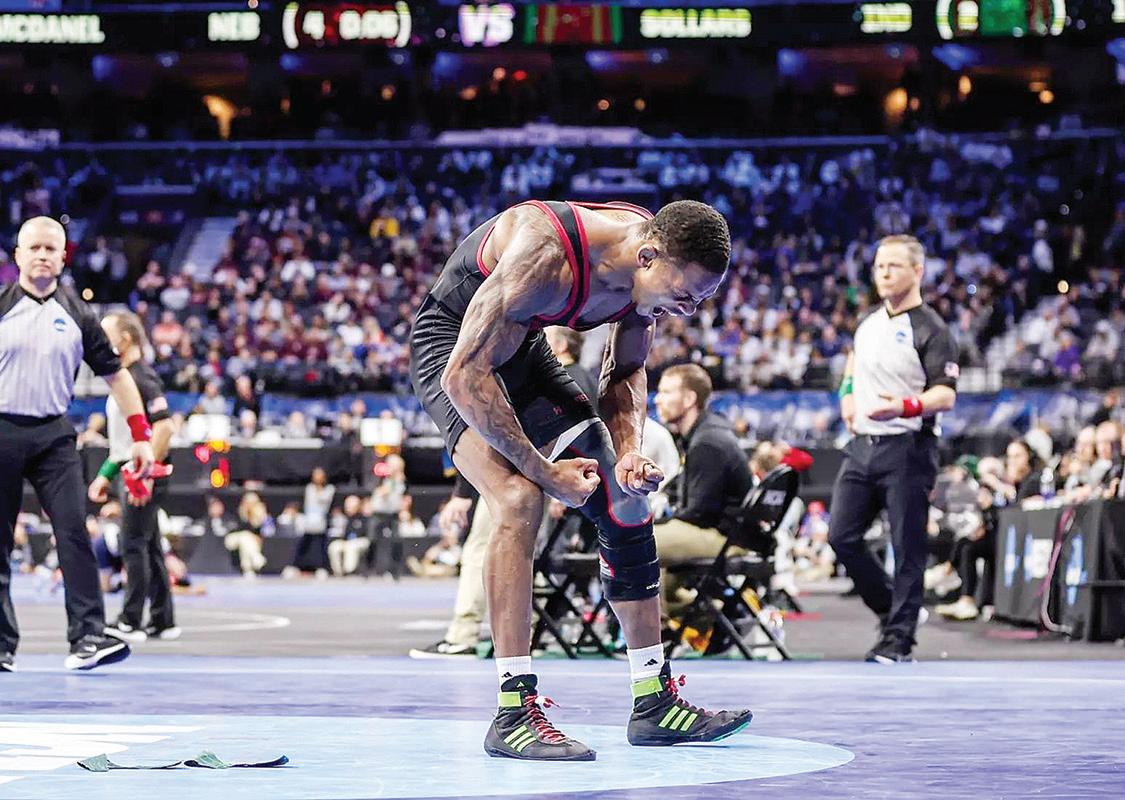
in the hotel that night. That’s when he texted Indiana staff about the issue and by midnight, Washington was in the emergency room.
It was there that hospital staff diagnosed him with the early stages of Rhabdomyolysis or “Rhabdo” — a serious condition brought on by dehydration that could lead to potential kidney failure. Rhabdo can be potentially life threatening. Washington ended up staying in the emergency room until about 4:30 a.m. with an early day of wrestling ahead. With little to no sleep, Washington awoke the following morning to lose his last half pound before weigh-ins at 10 a.m.
Despite being on medication for a torn MCL, which contributed to his condition, Washington decided to continue. Notably, he refused an IV in the emergency room to rehydrate him because it would’ve added around five pounds of additional weight to lose the following morning.
“Maybe I wrestle better off of no sleep than I wrestle with a good night’s rest,” Washington said jokingly. “I was feeling really good.”
Despite exhaustion, injury and anxiety, Washington had to punch through two returning All-American’s in South Dakota State’s No. 5 seed redshirt sophomore Bennett Berge and Illinois No. 10 seed redshirt senior Edmond Ruth.
First, Washington shutout Berge with a 12-0 major decision.
“Once I finally opened up and got to my bread and
butter, which is that double to the body lock, I was like ‘yeah, let’s do it,’” Washington said. After his match with Berge, one match remained to determine if Washington would leave Philadelphia as an All-American or empty handed, and he began to feel the pressure of the moment.
Assistant coach Riley Lefever was there to help him refocus.
“(Lefever) was just saying ‘being nervous is a good thing, that means you’re ready to go,’” Washington said. “And secondly, he’s just happy I’m even able to be in the position to go out there and compete.”
When Washington stepped onto the mat against Ruth, the stakes were higher than ever. Having lost to Ruth in two previous encounters, the pressure was mounting. But this time, something was different.
“I’m just like, ‘it’s not happening,’ you know?” Washington said. “I’m not going out this way again. I don’t wanna feel like I just came up short and that’s the story of my career. I wasn’t gonna let it happen for the last time.”
After learning from his losses earlier in the year, Washington was prepared for a tactful approach. He scored early and forced Ruth to chase him for the remainder of the match.
“He doesn’t shoot, and he doesn’t come after you if he doesn’t have to,” Washington said. “I knew he’ll have to come after me and it was just gonna open up one of my reattacks so I just kind of stayed
patient.”
Washington executed the plan to perfection scoring on a re-attack in the second period going up 7-1 into the third with over a minute of riding time. As the final seconds ticked off the clock, Washington shouted in excitement and rushed to the corner to his coaches’ embrace.
Washington walked off the mat for the last time as a student-athlete March 22 at the 2025 NCAA Championships. He had just completed a nearly six-year long journey with the Hoosiers. After years of uncertainty, he became the first wrestler to achieve All-American status since 2017.
A wave of relief passed through him when he finally accomplished the historical feat.
With that victory, Washington secured an eighthplace finish and ascended onto the podium for the first time in his career and in his very last collegiate competition. Following this accomplishment, Washington recovered from the Rhabdo scare and returned to Bloomington. He has thoughts about helping the next generation chase greatness just as he has.
“I think I might pivot into coaching,” Washington said. “I have two little brothers that are on the high school level trying to get ready for college.”
Who better to teach them than DJ Washington — an All-American and an Indiana wrestling legend.
By Daniel Flick danflick@iu.edu | @bydanielflick
Darian DeVries doesn’t need to set an alarm on his phone — his phone is either dead, or it’s being used to talk to coaches, players, agents and anyone else who can help set a foundation. He’s been to dinner in Bloomington a few times and taken brief hour-long breaks. Eventually, he says, he’ll get time to spend with his family and explore his new city.
But for Indiana men’s basketball’s new head coach, who was hired March 18 after one season at West Virginia University, there are more pressing boxes to check off.
“For the most part, it’s just full-go all the time,” DeVries told the Indiana Daily Student in a sit-down interview April 4. “It’s just part of the process.” DeVries’ daily schedule includes a heavy dose of screen time — he spit-balled around 20 hours a day — and C4 Energy drinks — he likes the Grape Frost and Orange Slice flavors. Most of his film work is done late at night or early in the morning. Such is life for DeVries, who’s facing the daunting challenge of rebuilding Indiana’s roster from scratch. The Hoosiers lost seven scholarship players to the transfer portal and five to graduation. Four of Indiana’s seven transfers have already found new homes. Senior forward Luke Goode
requested a medical waiver and is currently seeking a fifth year of eligibility.
The 50-year-old DeVries arrived in Bloomington open-minded about his roster and how many players he’d be able to retain — which, three weeks into his tenure, stands at zero.
“You’re kind of okay with, like, however that plays out is how it plays out,” DeVries said. “You don’t have a relationship with any of those kids as you come in. So, they got to do what’s best for them, and I certainly understand.”
DeVries has watched “some” of Indiana’s games from last year — not as much as he’d like, he said, because he hit the ground running with recruiting and hasn’t had the time. He looked more at individual players than watching the Hoosiers’ season at large, trying to gather information on the players he inherited and had sit-down meetings with before they chose to leave.
DeVries is already familiar with the process.
During his lone season at West Virginia, he had only one Mountaineer return from the year prior. Through his first four weeks on the job in Morgantown, West Virginia, DeVries had just two commitments: his son, Tucker, who’s now following his dad to Bloomington, and guard KJ Tenner, who originally signed to play for DeVries at Drake University.
All the while, seven players left West Virginia.
Such an exodus is understandable, DeVries said, because players committed to a different coaching staff. But it’s also a two-way street where the incoming coaching staff must make decisions on players.
“You need to do what’s best for you and make sure there’s a fit, whether it’s staying here or going somewhere else, and then vice versa — we’re in the process of the same way,” DeVries said. “Wasn’t necessarily their decision, so now they have a new decision to make of what they want to do to best finish off their careers.”
In an ever-changing era of college athletics marked by name, image and likeness deals and mass player movements, DeVries hasn’t strayed from his core principles.
The same traits he thought players and coaches needed when he first took the head coaching job at Drake in 2018 — personality, enthusiasm, discipline and basketball-specific attributes such as defensive rebounding and limiting turnovers — are still emphasized.
And as DeVries starts building Indiana’s roster from the ground-up, he said he won’t sacrifice any of his foundational values while navigating the chaos of the transfer portal.
“I think the main thing is: are they about wanting
to win, are they about wanting to get better? It’s more about what they’re about,” DeVries said. “Those things kind of shine through within conversations with people around them or with the kids. So, ultimately, we want guys that want come play for something bigger than themselves.”
When teams are built with selfless players, DeVries said chances rise to make a run in the NCAA Tournament. But the transfer portal, which has over 2,000 players in it as of April 13, offers a mixed bag of characters.
Still, DeVries hasn’t changed his approach to meeting with recruits — he’s asking the same questions and is focused on putting together a team with complementary skill sets. DeVries said NIL has added another component, forcing programs to manage money and figure out which prices work best for each player they’re recruiting.
It’s a time-consuming process. At West Virginia, DeVries didn’t pick up momentum on the recruiting trail until his fifth week, when he landed three players. He added two more commitments the next week.
Senior guard Javon Small, the Mountaineers’ leading scorer this past season, didn’t commit until May 1, 2024 — 38 days after DeVries officially took over.
DeVries started faster in Bloomington. Within DeVries’ first three weeks, Indiana received commit-
ments from DePaul University guard Conor Enright and Davidson College forward Reed Bailey, while Tucker DeVries confirmed his intents to follow his father. Incoming freshman Trent Sisley, a four-star forward, also reaffirmed his commitment to Indiana.
With a portal past rooted in patience, Darian DeVries has reason to be unconcerned about his four-man roster — but his current high-screen-time, low-sleep lifestyle underscores the pressing nature of crafting his first Hoosier squad.
“Trust me, there is urgency to get a roster put together,” DeVries said. “There’s urgency in the guys we’re recruiting, and we feel really good about. We’re doing everything we can to try to get them, so we’re going to continue to always expand, but we got a lot of guys we’re recruiting. We’re pushing as hard as we can to get this roster built as quickly as possible.”
DeVries has been forced away from his preferred route of roster construction — he said in his introductory press conference March 19 he’d like to get two or three freshmen in each recruiting class, retain them over time and build from within.
But he acknowledged that’s not possible in Year 1.
The Hoosiers, who missed the NCAA Tournament each of the past two years, are trying to get back to the heights reflected in the five national championship banners
hanging inside Simon Skjodt Assembly Hall.
DeVries said banners will come when his team plays with joy, pride and selflessness that’s recognizable each time it takes the floor. But that only happens with non-negotiable standards and a commitment to building a strong locker room. At West Virginia, DeVries spearheaded a 10-win improvement in his first season. He implemented his brand of basketball and took the Mountaineers from the Big 12 cellar to the first team left out of March Madness. DeVries, naturally, wants to build a winner. He also wants to build a culture — something that starts with recruiting the right pieces willing to help establish his brand each day.
“Certainly, that first year, it’s harder, because so much of it has to come from your coaching staff,” DeVries said. “You’re trying to get that locker room to kind of think and act the way you want it to do. But in Year 2, hopefully there’s some carryovers that stay and now it starts to become from the locker room instead of just from the coaches.”
DeVries, a Midwesterner who grew up on a farm in Aplington, Iowa, said Indiana, with its history, tradition and resources, is one of a handful of schools he considers “a dream job.” Now, he’s responsible for waking up a sleeping giant — and he’ll drink as much C4 as necessary to do it.
By Daniel Flick danflick@iu.edu | @bydanielflick
Indiana men’s basketball head coach Darian DeVries and his coaching staff have been busy on the recruiting trail, but they’ve yet to knock on Harun Zrno’s door.
Zrno originally committed to Indiana on Jan. 24 to play for previous head coach Mike Woodson but rescinded his pledge March 19, the day after the Hoosiers hired DeVries. The Bosnian wing hasn’t heard from Indiana since DeVries stepped foot in Bloomington.
“We have not decided yet, but of course the doors are always open. Indiana had a real advantage in front of other schools.”
Stevan Petrovic, Zrno’s agent
Stevan Petrovic, Zrno’s agent at Agency 55, has reached out to DeVries four times — two texts and a pair of phone calls — but hasn’t received any response, Petrovic told the Indiana Daily Student in a phone call April 14. Zrno’s camp said they first reached out to DeVries on March 18. When the Hoosiers’ staff didn’t respond, Zrno decommitted.
“We waited for Indiana to come back to us and get in touch with us,” Petrovic said. “Never heard back from him. That was the only
Aries (March 21-April 19) Today is a 9 — Go for fun and romance. Let your heart dictate actions, with Mars in Leo for six weeks. Energize artistic efforts. Get creative. Love inspires.
Taurus (April 20-May 20) Today is an 8 — Collaborate within your budgets. Invent inspiring domestic plans for improvements over 45 days. Action gets results. Build and renovate, with Mars in Leo.
reason why we decommitted because at that point we had to go ahead and move on from Indiana. It’s nothing that Harun wanted to do — absolutely not — but we could not wait anymore on Indiana to get back to us, and they never did.”
Petrovic added he “just wanted to make things clear for Hoosier Nation — it’s not something we wanted to do.”
Indiana Athletics did not provide comment on the situation.
Zrno visited Bloomington for the Hoosiers’ 82-69 win over USC on Jan. 8. It was not only his first college visit but also his first time in the United States. He later visited Wisconsin, Creighton University and the University of Virginia, but Indiana left a lasting impression.
Over 5,000 miles away from East Sarajevo, Bosnia and Herzegovina, where he played for KK Slavija, Zrno felt at home.
“The staff did a great job of recruiting Harun,” Petrovic said. “He felt welcome in Indiana. He had a good connection when he was at the game with Hoosier Nation, and a lot of fans come up to him. He introduced himself to everyone. So, it was kind of connection and atmosphere. He felt it would be a great place to play and he fell in love with everything Indiana had to offer.”
The 6-foot-7, 205-pound Zrno averaged 17.5 points, 3.6 assists and 3.6 rebounds

across 14 games for KK Slavija this past season. He shot 50% from the field, 43.7% from beyond the arc and 77.4% at the free throw line.
Petrovic acknowledged Zrno is a big-bodied shooter, but he played point guard at times this past season, culminating in a diverse skill set that’s generated significant Power Five interest.
“His main weapon is his shooting ability and creat-
ing his own shots,” Petrovic said. “But he can also play defense. He can play with the ball (as a) point guard, and he’s very unselfish. He loves passing the ball and getting his teammates involved, and he’s absolutely the hardest working player I have seen.”
The 20-year-old Zrno will visit the University of Miami and Villanova University the weekend of April 18.
“Both schools did a great
job of recruiting Harun, and both schools want him,” Petrovic said. “That’s why we feel both places would be a good fit for Harun to come in and play right away.”
Zrno and Petrovic once thought Indiana would be that fit. When Indiana Athletics announced Feb. 7 that Woodson would step down at the end of the season, Zrno remained committed to give the new coaching staff an opportunity.
Sagittarius (Nov. 22-Dec.
DeVries and the Hoosiers didn’t pick up the phone — or at least not yet. But if they do, Zrno and Petrovic are willing to listen. “I mean, the doors are still open,” Petrovic said. “We have not decided yet, but of course the doors are always open. Indiana had a real advantage in front of other schools. Of course, he would consider Indiana again if they reach out, but at this point, no one reached out.”
for six weeks. It’s easy to spend, too, with rising cash flow. Disciplined practices score.





By Conor Banks conbanks@iu.edu
While Indiana softball’s pitching staff surrendered just one run to Wisconsin in the second game of the series April 12, inconsistent performances led to difficulties containing the Badgers’ offense throughout their three-game series over the weekend.
As a result, Indiana dropped the series 1-2. Following their series loss, the Hoosiers stand at 28-12 overall and 7-7 in conference play, while sitting in ninth place in the Big Ten standings. In the first game April 11, senior pitcher and utility player Brianna Copeland earned the start in the circle. Heading into the weekend, Copeland led the Hoosiers with an 11-4 record and was 40th in the nation with 110 strikeouts this season.
However, the Pelham, Alabama, native struggled
to open the series. Copeland walked the lead-off batter and allowed a double to the second hitter she faced in the bottom of the first inning. In the next at-bat, the Badgers lined a two-RBI single before tacking on an additional run in the first frame. Following their three-run opening inning, the Badgers scored their fourth run in the second inning to continue a successful day in the batter’s box against Copeland. Despite their early struggles, the Hoosiers tossed three straight scoreless innings as freshman pitcher Jenae Berry entered the circle for the Cream and Crimson in the fourth frame. Going into the series, Berry led the Indiana pitching staff with a 3.41 ERA.
Just as the Hoosiers began to gain momentum on the defensive side, the Badgers launched a two-run home run in the sixth inning to se-
cure a 6-5 victory. After an up-and-down opening game April 11, the Indiana pitching staff strung together a more consistent outing April 12.
Freshman pitcher Jasmine Reyes started in the circle but pitched just 1 1/3 innings before Copeland returned to the circle in search of a bounceback performance.
Across 3 2/3 innings April 12, Copeland allowed three hits, zero earned runs and collected two strikeouts to improve her previous outing and lead Indiana to a commanding 14-1 win. With a chance to secure the series victory April 13, Berry started in the circle for the Cream and Crimson. However, the team-leader in ERA surrendered four earned runs across two innings of action before Copeland entered in relief of Berry. Yet, the pitching change did not disrupt Wisconsin’s
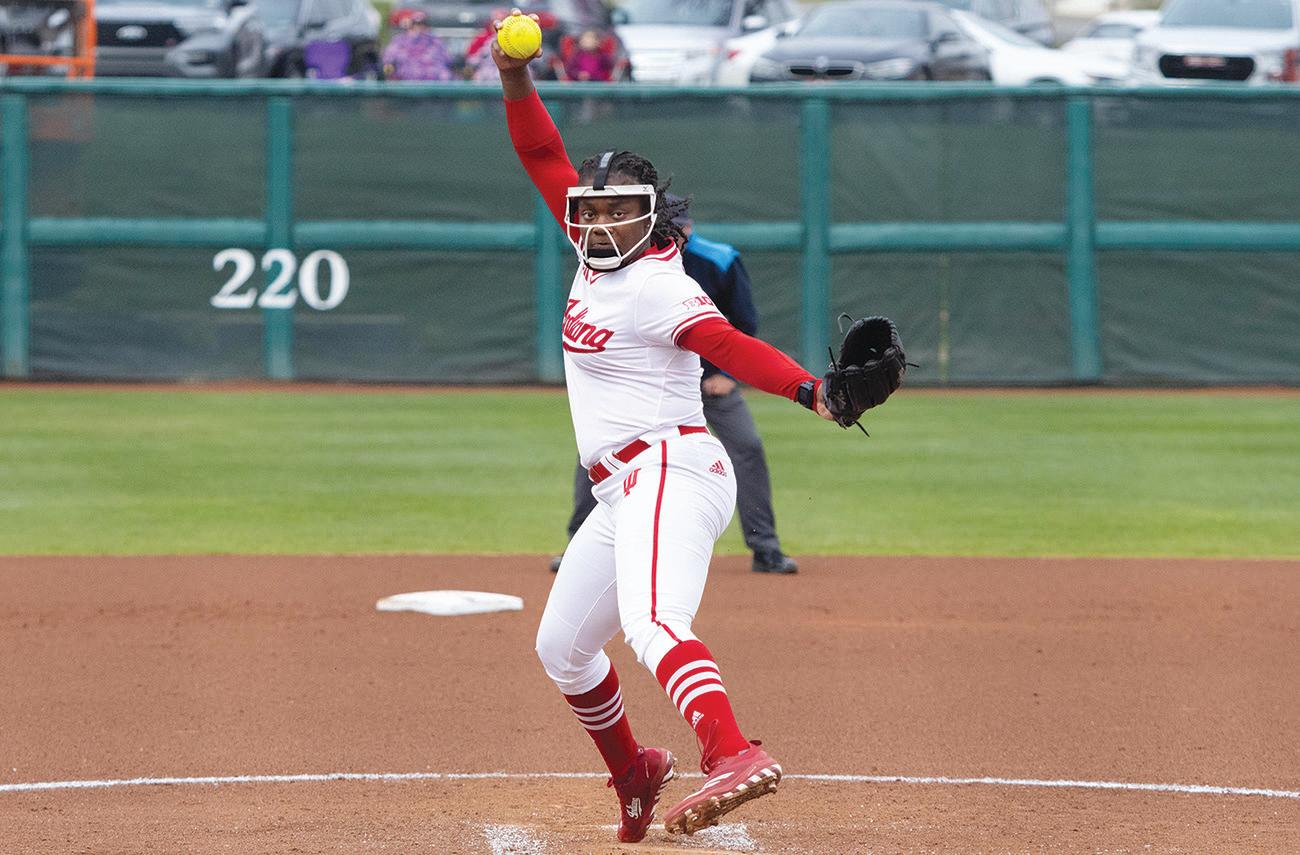
four
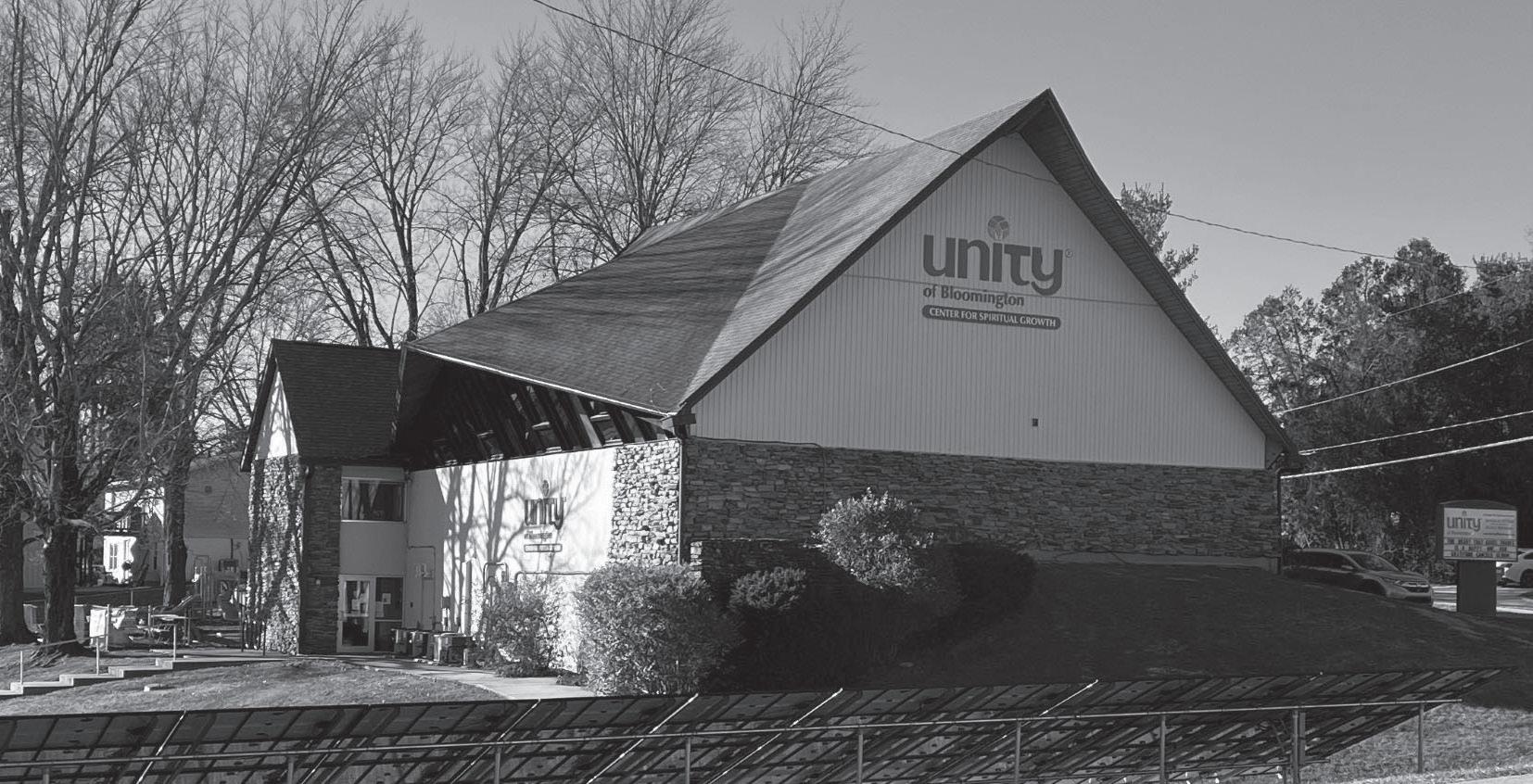
The Church of Jesus Christ of Latter-day Saints
Bloomington Young Single Adult Branch
2411 E. Second St.
To Contact: Send message from website maps.churchofjesuschrist.org/ wards/237973
Sunday: 12:30 p.m.
The Church of Jesus Christ of Latter-day Saints has four congregations in Bloomington—Three family wards and our young single adult branch for college students. This info is for the YSA Branch. Weekday religious classes at 333 S. Highland Ave, Bloomington IN 47401, next to campus.
More info at churchofjesuschrist.org.
United Methodist
Jubilee
219 E. Fourth St. 812-332-6396 jubileebloomington.org
Facebook: First United Methodist Church of Bloomington, IN Instagram: @jubileebloomington
Sunday: 9:30 a.m., Classic Worship 11:45 a.m., Contemporary Worship Wednesday: 7:30 p.m., College & Young Adult Dinner
American Restoration Movement
North Central Church of Christ
2121 N. Dunn St. 812-332-2248 nc3family.org Facebook.com/nc3family
Sunday: 10 a.m., Worship 11 a.m., College Class
4001 S. Rogers St. text/call: 812-333-2484 unityofbloomington.org IG: @unityofbloomington facebook@UnityofBloomington
Sunday Celebration: 10:30 a.m.
Discover a vibrant, welcoming community at Unity of Bloomington – “a positive path for spiritual living”. Our center offers a space for spiritual growth; embracing all with open arms. We proudly affirm and welcome the LGBTQ+ community, fostering love, acceptance, and inclusion. Join our loving congregation, where everyone is valued and encouraged to explore their spiritual journey. At Unity of Bloomington, all are welcome and together we thrive!
Minnassa Gabon - Spiritual Leader Phyllis Wickliff - Music Director
Lutheran - Missouri Synod Orthodox All Saints Orthodox Christian Church
University Lutheran Church and LCMS U Student Center
607 E. Seventh St. 812-336-5387 indianalutheran.com facebook.com/ULutheranIU instagram.com/uluindiana
Sunday: 9:15 a.m.: Sunday Bible Class 10:30 a.m.:
9 a.m. - 10 p.m.
The LCMS home of campus ministry at IU, our mission is to serve all college students with the saving Gospel of Jesus Christ, located across from Dunn Meadow and the IMU. The Student Center is open daily for study, recreation, and prayer. For full schedule, visit our website.
Rev. Timothy Winterstein - Campus Pastor
Jubilee is a Christ-centered community open and affirming to all. We gather on Wednesdays at First United Methodist (219 E. 4th St.) for free food, honest discussion, worship, and hanging out. Small groups, service projects, social events (bonfires, game nights, book clubs, etc.), outreach retreats, and leadership opportunities all play a significant role in our rhythm of doing life together.
Markus Dickinson - jubilee@fumcb.org
Inter-Denominational
111 S. Kimble Dr. 812-269-8975
redeemerbloomington.org facebook.com/RedeemerBtown
Instagram & Twitter: @RedeemerBtown
Sunday: 9 a.m., 11 a.m.
Redeemer is a gospel-centered community on mission. Our vision is to see the gospel of Jesus Christ transform everything: our lives, our church, our city, and our world. We want to be instruments of gospel change in Bloomington and beyond.
Chris Jones - Lead Pastor
Come learn about historic Christian teaching on theology, ethics, and culture. We offer an alternative to the post-modern ideologies and teachings you often see in your lives today.
Shane Himes, PHD - Senior Minister
Science
2425 E. Third St. 812-332-0536 bloomingtonchristianscience.com facebook.com/e3rdStreet
in spirituality and
how you can address issues spiritually and experience healing. Knowing God loves, guides and cares for each one gives a sense of peace and joy. We appreciate the Christian Science Monitor news magazine for its integrity, fairness and compassion.
(Christian Science Monitor) csmonitor.com
6004 S. Fairfax Rd. 812-824-3600 allsaintsbloomington.org webbrk1@gmail.com
Father Peter Jon Gillquist Thomas Przybyla - Pastoral Assistant Bloomington Bahá'í Community and Bahá’í IU Association
424 S. College Mall Rd. 812-331-1863
bloomingtoninbahais.org facebook.com/Baháí-Community-ofBloomington-Indiana-146343332130574
Instagram: @bloomingtonbahai
By Daniel Flick danflick@iu.edu | @bydanielflick
Indiana men’s basketball is hiring Kenny Johnson as an assistant coach, a source confirmed to the Indiana Daily Student on April 11.
The Indianapolis Star’s Zach Osterman first reported the news. Johnson previously spent two seasons at Indiana, serving as an assistant coach and recruiting coordinator under Tom Crean from 2012-14. Johnson left the Hoosiers for the University of Louisville after the 2014 season.
The Oxon Hill, Maryland, native stayed with the Cardinals through the fall of 2017, when he — along with head coach Rick Pitino, athletic director Tom Jurich and assistant coach Jordan Fair — was fired amid an FBI investigation and corruption scandal centered around providing benefits to recruits.
Upon his exit from Louisville, Johnson went to La Salle University in May 2018. He was fired two years later after a Notice of Allegations from the NCAA accused Johnson of giving $1,300 to a recruit or someone closely associated with a recruit.
Johnson returned to coaching in 2022, joining former Indiana head coach Archie Miller at the University of Rhode Island. Johnson joined Georgetown University’s staff for the 2024-25 season and is now headed back to Bloomington.
After starting his basketball coaching journey in 2002, Johnson spent the next nine years as an assistant at several high schools in Maryland. His college coaching career began in 2011 as an assistant at Towson University. Johnson is the second assistant coach hired by new Indiana head coach Darian DeVries, joining Nick Norton.
Society of Friends (Quaker)
Bloomington Friends Meeting
3820 E. Moores Pike
812-336-4581
bloomingtonfriendsmeeting.org
Facebook: Bloomington Friends Meeting
Sunday (in person & Zoom) :
9:45 a.m., Hymn singing
10:30 a.m., Meeting for Worship
10:45 a.m., Sunday School
(Children join worship 10:30-10:45)
11:30 a.m., Refreshments and Fellowship
12:30 p.m., Events (see website)
Wednesday (Zoom Only) :
7 p.m., Meeting for worship for Peace
Friday (Zoom Only) :
9 a.m., Meeting for worship
We practice traditional Quaker worship, gathering in silence with occasional Spirit-led vocal ministry by fellow worshipers. We are an inclusive community with a rich variety of belief and no prescribed creed. We are actively involved in peace action, social justice causes, and environmental concerns.
Peter Burkholder - Clerk burkhold@indiana.edu
Christ Community Church
503 S. High St.
812-332-0502
cccbloomington.org
facebook.com/christcommunitybtown
Instagram: @christcommunitybtown
Sunday: 9:15 a.m., Educational Hour
10:30 a.m., Worship Service
We are a diverse community of Christ-followers, including many IU students, faculty and staff. Together we are committed to sharing the redeeming grace and transforming truth of Jesus Christ in this college town.
Bob Whitaker - Senior Pastor Adam deWeber - Worship Pastor Dan Waugh - Adult Ministry Pastor
Christian Student Fellowship
1968 N. David Baker Ave. 812-332-8972 csfindiana.org
Instagram: @csfindiana
Monday - Friday: 9 a.m. - 5 p.m.
Christian Student Fellowship (CSF) exists as a Christ-centered community focused on helping students truly know Jesus Christ. Our ministry operates from an on-campus house where students can live. Reach out to schedule a tour of the house or a visit to our Thursday night worship service!
Ben Geiger - Lead Campus Minister
Stephanie Michael - Campus Minister
Joe Durnil - Associate Campus Minister
Hailee Lutz - Office Manager
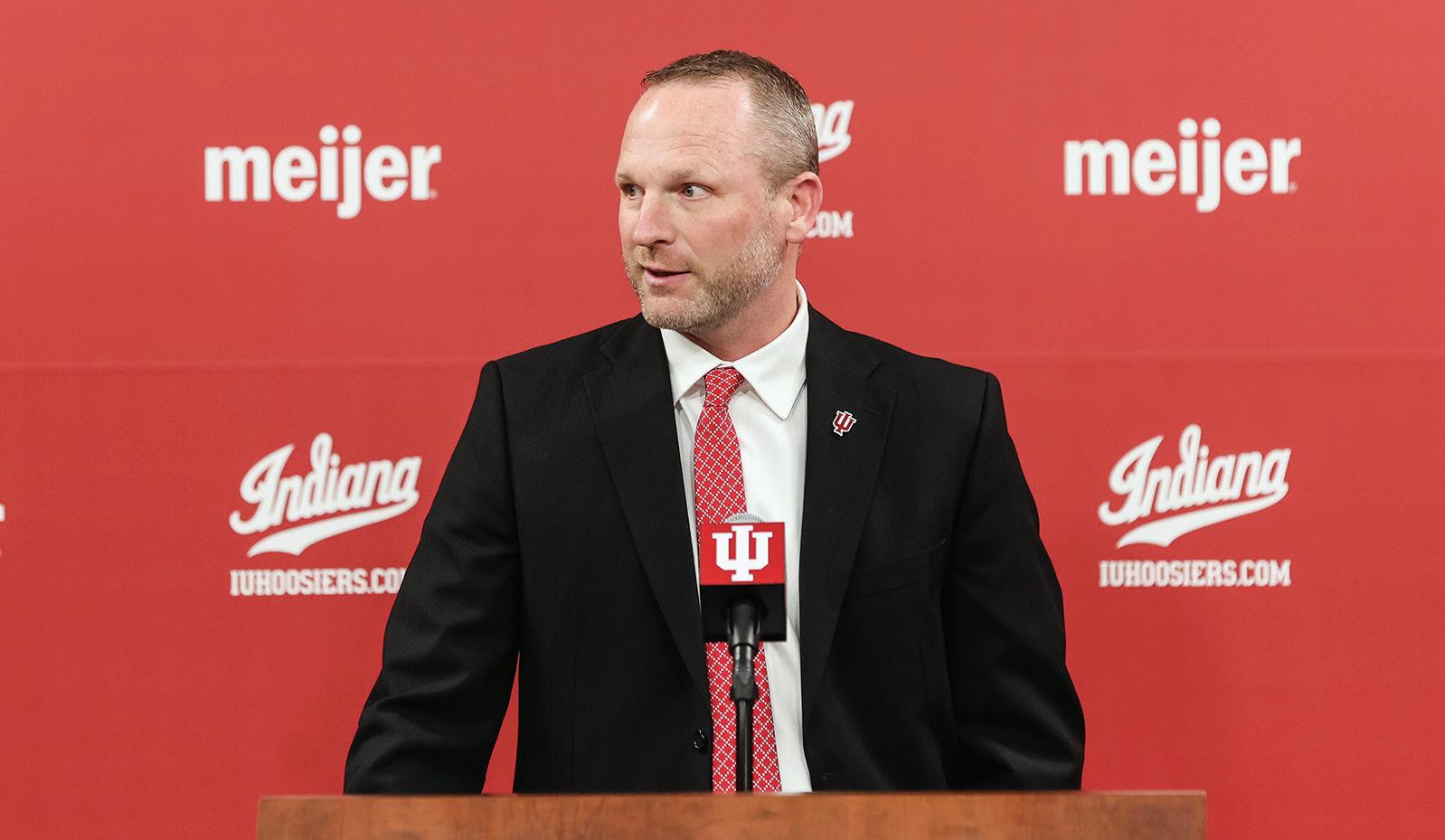
City Church
1200 N. Russell Rd. 812-336-5958
citychurchbloomington.org
tiktok: @citychurchbtown
Instagram: @citychurchbtown
Sunday Service: 8:30 a.m., 10 a.m., 11:45 a.m.
City Church is a multicultural church on the east side of Bloomington. We provide transportation from campus. Our college and young adult ministry meets on Tuesday nights.
David Norris - Pastor
Sacred Heart Church
615 N. Fairview St. 812-345-5239
sacredheartbloomington.org facebook.com/sacredheartbloomington
Sunday: 10:30 a.m.: Refreshments and Fellowship 10:45 a.m.: Worship Service Tue., Wed., Thu.: Midweek Meals (Check Facebook)
Sacred Heart is a nondenominational church that seeks to follow Jesus by acting justly, loving mercy and walking humbly with God. We strive to be a safe, inclusive community where you can bring your doubts, questions, struggles, and joys before a loving God and find true belonging. All are welcome!
Dan Caldwell
Episcopal (Anglican)
Canterbury Mission
719 E. Seventh St. 812-822-1335 IUCanterbury.org facebook.com/ECMatIU
Instagram & Twitter: @ECMatIU Youtube: @canterburyhouseatiu9094
Sunday: 3 p.m. - 7 p.m.
Mon., Wed., Thu.: 10 a.m. - 6 p.m.
Tuesday: Noon - 8 p.m. Fri., Sat.: By Appointment
Canterbury: Assertively open & affirming; unapologetically Christian, we proclaim the gospel of Jesus Christ by promoting justice, equality, peace, love and striving to be the change God wants to see in our world.
Ed Bird - Chaplain/Priest
Independent Baptist
Lifeway Baptist Church
7821 W. State Road 46 812-876-6072 lifewaybaptistchurch.org facebook.com/lifewayellettsville
Sunday: 9 a.m., Bible Study Classes
10 a.m., Morning Service
5 p.m., Evening Service
*Free transportation provided. Please call if you need a ride to church.
Student Ministry: Meeting for Bible study throughout the month. Contact Rosh Dhanawade at bluhenrosh@gmail.com for more information.
Steven VonBokern - Senior Pastor Rosh Dhanawade - IU Coordinator 302-561-0108 bluhenrosh@gmail.com
United Church of Christ and American Baptist Churches-USA
First United Church
2420 E. Third St. 812-332-4439 firstuc.org facebook.com/firstuc
Sunday: 10:30 a.m., Worship
Monday: 10 a.m. via Zoom, Bible Study
We are an Open, Welcoming, and Affirming community of love and acceptance dedicated to welcoming the diversity of God’s beloved. We exist to empower, challenge, and encourage one another to live out Jesus’ ways (compassion, truth, and justice) authentically as human beings in community to create a better world.
Rev. Jessica Petersen-Mutai Senior Minister
Baptist
Emmanuel Church
1503 W. That Rd. 812-824-2768 Emmanuelbloom.com
Instagram & Facebook: @EmmanuelBloomington
Sunday: 9:15 a.m., Fellowship
Sunday: 10 a.m., Worship Groups: Various times
Emmanuel is a multigenerational church of all types of people. Whether you are questioning faith or have followed Jesus for years, we exist to help fuel a passion for following Jesus as we gather together, grow in community, and go make disciples.
John Winders - Lead Pastor
Second Baptist Church
321 N. Rogers St. 812-327-1467 sbcbloomington.org facebook.com/2ndbaptistbloomington youtube.com/@secondbaptist churchbloomington
Sunday Service: 10 a.m., In house and on Facebook/YouTube Sunday School: 8:45 - 9:45 a.m. Bible Study: Available In House and on Zoom Wednesdays, 6:30 p.m., Thursdays, Noon
Please come and worship with us. We are in training for reigning with Christ! Need a ride? Call our Church bus at 812-3271467 before 8 a.m. on Sunday
Rev. Dr. Bruce R. Rose - Pastor Tallie Schroeder - Secretary
Unitarian Universalist
Unitarian Universalist Church of Bloomington
2120 N. Fee Ln. 812-332-3695 uubloomington.org facebook.com/uubloomington
Sunday: 9:30 a.m.,11:30
Evangelical Lutheran Church in America
Rose House LuMin & St. Thomas Lutheran Church
3800 E. Third St. 812-332-5252 Stlconline.org lcmiu.net
Instagram: @hoosierlumin facebook.com/LCMIU facebook.com/StThomasBloomington
Sunday: 8:30 a.m. & 11 a.m. @ St. Thomas Lutheran Church 3800 E. Third St. Tuesday: 6:30 p.m. Dinner & Devotions @ Rose House LuMin 314 S. Rose Ave. Rose House LuMin and St. Thomas Lutheran Church invite you to experience life together with us. We are an inclusive Christian community who values the faith, gifts, and ministry of all God’s people. We seek justice, serve our neighbors, and love boldly. Rev. Adrianne Meier Rev. Lecia
Unity Worldwide
Unity of Bloomington A Center for Spiritual Growth
4001 S. Rogers St. text/call: 812-333-2484 unityofbloomington.org
IG: @unityofbloomington facebook@UnityofBloomington
Sunday Celebration: 10:30 a.m.
Discover a vibrant, welcoming community at Unity of Bloomington – “a positive path for spiritual living”. Our center offers a space for spiritual growth; embracing all with open arms. We proudly affirm and welcome the LGBTQ+ community, fostering love, acceptance, and inclusion. Join our loving congregation, where everyone is valued and encouraged to explore their spiritual journey. At Unity of Bloomington, all are welcome and together we thrive!
Minnassa Gabon - Spiritual Leader Phyllis Wickliff - Music Director Reformed Protestant
Trinity Reformed Church 2401 S. Endwright Rd. 812-825-2684 trinityreformed.org lucas@trinityreformed.org facebook.com/trinitychurchbloom
Sunday: 10:30 a.m., Sunday Morning Services 7 p.m., Bible Study at the IMU
We are a Reformed Protestant church on the west side of Bloomington with lively worship on Sunday mornings and regular lunches for students after church. We love God and His Word. Please get in touch if you’d like a ride!
Jody Killingsworth - Senior Pastor Lucas Weeks - College Pastor
MFD’s headquarters, Station 22, in contrast, is an old house that used to belong to school bus drivers on South Kennedy Drive — that’s why McWhorter said there’s room for the rigs.
McWhorter pointed out the difference in who joined the volunteer force between 1969 and now.
“It’s harder because back when we started, it was mainly taxpayers in the area that wanted to help out the community, whereas now it’s young kids looking for a career starting out at $60,000, $70,000 at 18,” McWhorter said. “It’s — it’s something else. Makes you want to be a young kid and fight fire.”
His grandson, Robert McWhorter Jr., is a fire captain at BFD.
“He’s doing good up there,” McWhorter Sr. said. “I’d like to see him down here. Things didn’t work out that way, but there’s another generation going on up at the city, so.”
Enrollment in volunteer firefighting programs has plummeted in recent years, according to Jack Kerney, past president of the Indiana Volunteer Firefighter Association.
“Twenty to 30 years ago, our membership was 18,000 or 19,000, and now it’s down to 12 or 13,000,” Kerney said during an IVFA meeting in February last year. “So we’ve lost about a third, but that’s not just Indiana. It’s all across the country.”
A volunteer needs a day job. With no pay, they rely on different ways to support themselves and their families. They put out fires, but they also tend the cornfields that swath over the state or drive 18-wheelers across the country.
Career-aged volunteers aren’t available during the day, which is why young volunteers are so crucial. But they keep leaving.
Mary Nancy Mwakalindile, an MFD volunteer, is afraid of fire.
“If somebody was stuck in a fire, I would run scream-

ing all the way in and all the way out,” she said. “I think there are braver people doing it.”
Mwakalindile is a certified EMT. She graduated IU in December last year with a master’s degree in information systems after getting her bachelor’s in cognitive science in 2023.
“I got my EMT certificate in a gap year after high school,” she said. “I wanted to use it somehow.”
She grew up down the street from Station 22. On her first day of school, she missed the bus, and the station was her reference point to get back home.
“You can volunteer in so many ways. You can be a huge help, even if you can’t go out and fight the fires or have the training, there’s always somewhere, some place for you.”
Leigh Dillard, MFD auxiliary member
Though she’s not fighting fire, she’s putting her skills to use. She helps the MFD teach fire prevention at schools during events called touch-a-truck. And
while most young volunteers are out the door after finding long-term employment, that’s not how Mwakalindile thinks about it.
“As long as I’m in Monroe County, I’ll be here,” she said.
Mwakalindile not only volunteers as an EMT, but she also worked as an IT intern at MFD. She redesigned the department’s website.
The IU graduate said working as a first responder to fires has taught her how to recognize and treat firerelated injuries.
“There are things they see on fire patients that I would not even consider,” Mwakalindile said. “So you learn a lot of knowledge from that. I’ve learned so much about fire that I didn’t think I would need to know. So many ways I’ve not burnt down my house.”
She’s now comfortable enough with the fire station to where it’s become a second home for her. When she calls her mom before her shift, she tells her she’s going to hang out at the fire station.
Station 22 is cozy. The garage’s gray ceilings are low.
Jason Allen, MFD battalion chief, apologizes repeatedly for dirty floors and stray pairs of shoes.
A yellowed refrigerator stocks water, Cokes and Gatorade. Monitors hang cattycornered. Big, clunky boots and fire suits covered in soot line the walls.
Through a set of doors is the day room. Rows of recliners lie on the right and a conference table sits to the left. Here is where the firefighters await calls. They lean back at the table, prattling away. One snacks on a bag of chips.
Further back is the kitchen: there’s a big, cast-iron skillet on the stove and a half-eaten box of cupcakes on the counter. Up some stairs is the training room. There are CPR dummies in the corner. Allen shows off a shrine-like wall covered in framed pictures of former MFD firefighters.
There is a sense of pride in this place.
For the firefighters to spend hours upon hours at the station, it should feel like a home. And it does.
It’s certainly a second home for Leigh Dillard. She’s a member of the auxiliary, a group of volunteers that don’t fight fires or provide first responder services. Her husband is Dustin Dillard, fire chief of MFD.
“If the guys are on the scene for a long time, we’ll
bring food or water or drinks,” Leigh said.
Leigh said MFD’s favorite on-scene snack is McDonald’s. She has a recurring mass order on the app.
“It’s a lot of sandwiches,” she said.
Leigh and Dustin have four kids: one son and three daughters. Their secondoldest, Annleigh, wants to be a fire chief like her dad when she grows up.
“It’s a unique family,” Leigh said. “It’s special, something that not a lot of people know until they’re in it. I always try to explain it, but you just kind of have to know.”
Though Leigh isn’t trained as a first responder, the services she provides as an auxiliary volunteer help the department stay afloat. She’s a licensed teacher in Indiana, so she writes the lesson plans for the fire prevention classes the MFD teaches in schools.
“You can volunteer in so many ways,” Leigh said. “You can be a huge help, even if you can’t go out and fight the fires or have the training, there’s always somewhere, some place for you.”
The volunteer shortage isn’t limited to Monroe County. It’s statewide, and it hurts rural areas in particular. According to the NFPA, 95% of volunteer firefighters serve departments that protect fewer than 25,000 people. Though they provide for less people, they cover the most land.
The demand for service is “huge,” State Fire Marshal Steve Jones said at an Indiana Volunteer Firefighters Association meeting last year, and most of it falls on volunteers because they cover most of Indiana. Allen relayed a similar sentiment at MFD over a year later. He added that many rural communities don’t have enough money to fund a career department fully.
“Most of them find the only feasible way economically is to create their own volunteer fire department, purchase some used equipment, a firehouse and rely on community members to staff those when a call comes out,” Allen said.”
MFD Fire Chief Dillard said that kind of system relied on volunteers’ daytime employers being flexible with the volunteers’ hours.
“Traditionally, in the past, in a lot of rural Indiana, employers would allow people in the community to leave work to respond on calls because that employer also relied on emergency service,” Dillard said. Since that social covenant has expired, new volunteers have to complete their training hours during weekends or days off, which Allen said many found unattractive.
Allen knows why some people don’t want to volunteer. He understands the risk. He knows what it’s like to put his health on the line, to spend the majority of his waking hours on call. But it’s greater than that. It’s bigger than him. It’s neighbors helping neighbors.
“Remember,” he said, “That’s your community.”
Editor’s Note: MFD is seeking auxiliary and administrative volunteers. Learn how you can help at https:// monroefd.org/.
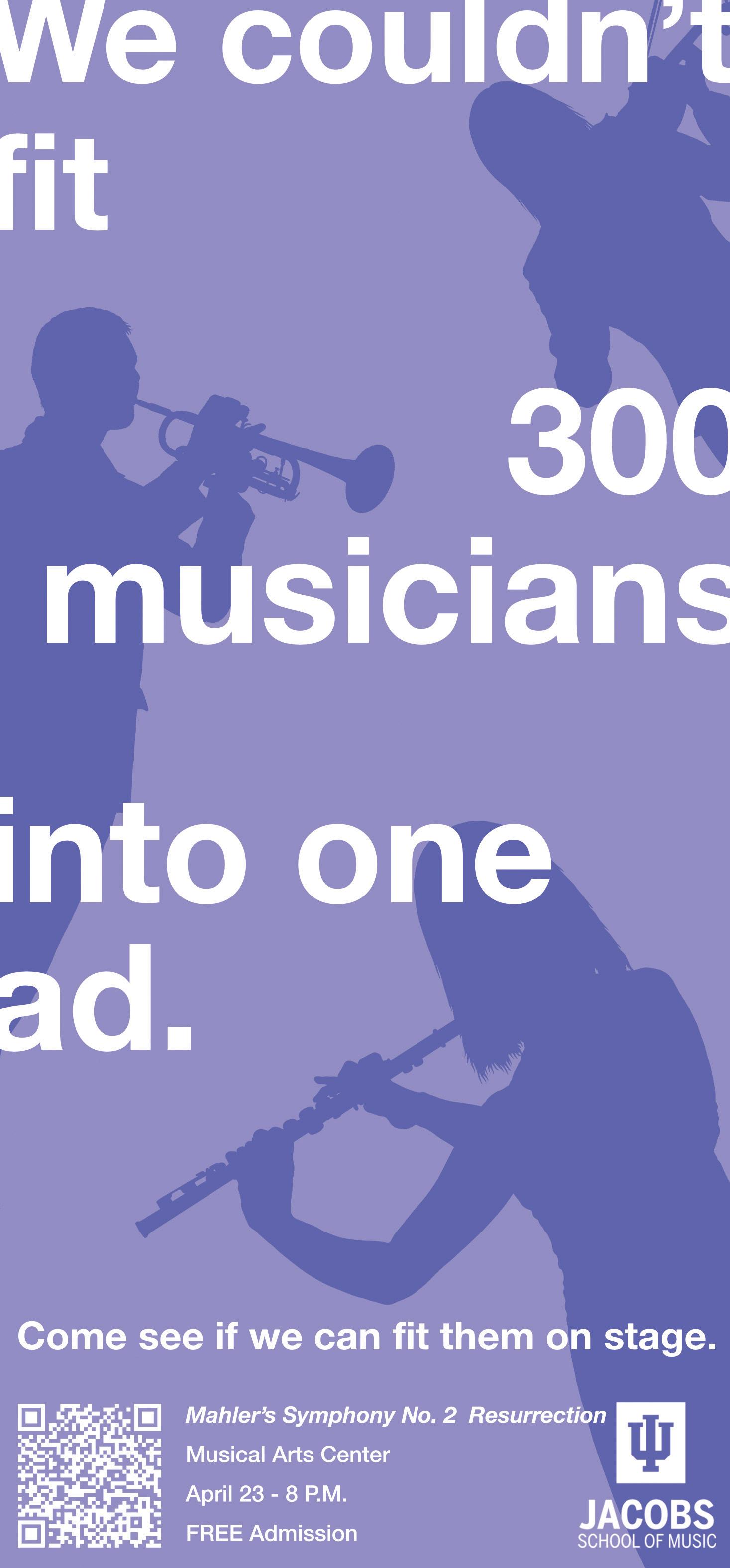
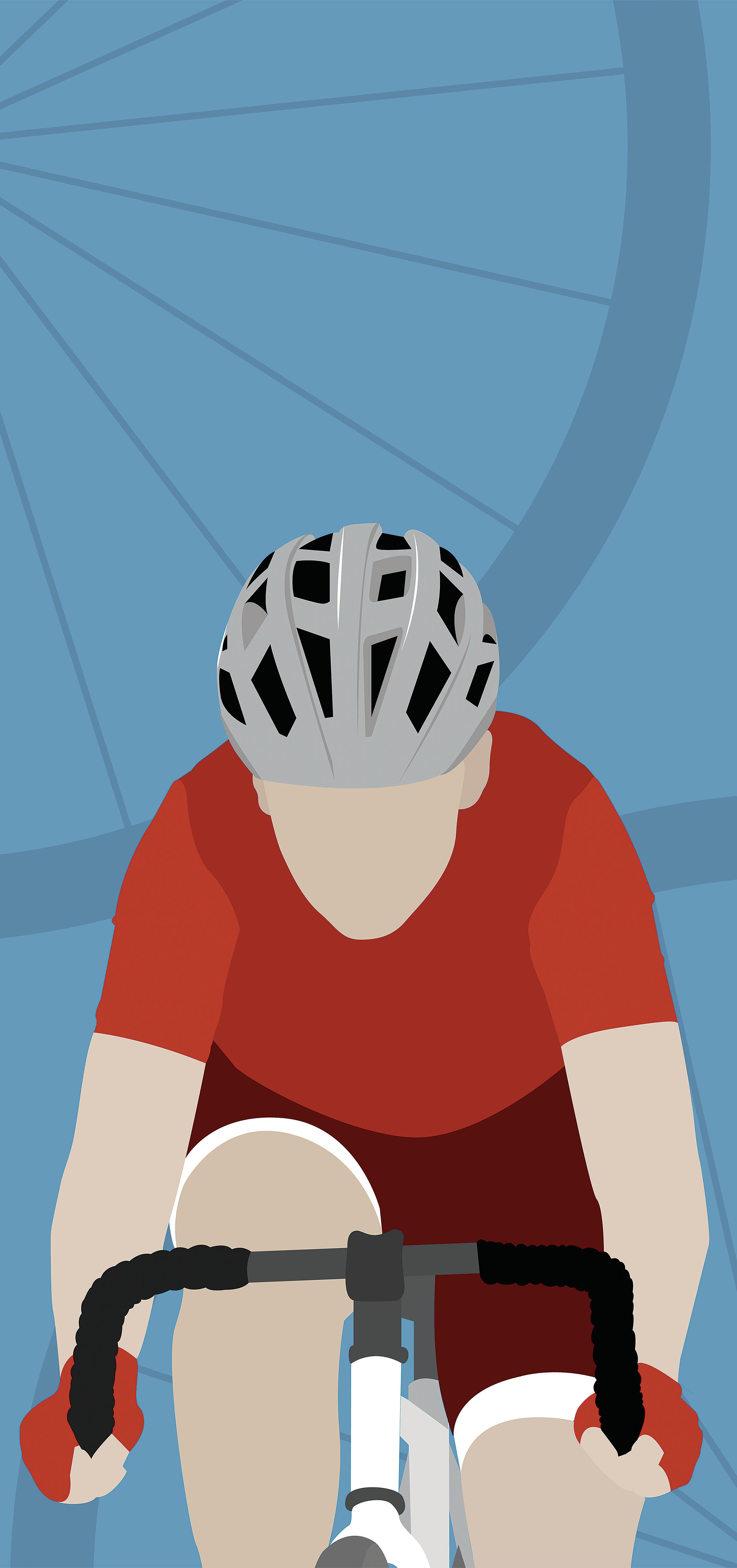
AN INDIANA DAILY STUDENT SPECIAL PUBLICATION
By Nathan Shriberg naashri@iu.edu | @nshriberg
Last year’s Little 500 was the 73rd edition of the men’s race, and the 36th ever women’s race.
On the men’s side, Black Key Bulls finished first, making its triumphant return to the field after failing to qualify in 2023.
Early in the race, Sigma Alpha Epsilon established itself as favorites. After a crash on lap 27, it took turns leading with Black Key Bulls and Phi Delta Theta. By lap 55, Sigma Alpha Epsilon led by 34 seconds.
At the halfway point, Sigma Alpha Epsilon continued to hold to a near half-lap lead, while Black Key Bulls, Phi Delta Theta, Chi Alpha and Sigma Phi Epsilon made up the front of the group trying to catch up.
After leading for over 100 laps, Sigma Alpha Epsilon was finally overtaken by the 150th lap. Black Key Bulls and Sigma Phi Epsilon rocketed into the top two spots, leaving the previous leader in third.
Black Key Bulls’ Jack Handlos and Sigma Alpha Epsilon’s Luke Naas engaged in a heated battle at the front, separating from the pack by over 11 seconds by lap 175. However, by lap 190, Black Key Bulls had pulled away, holding a 17-second advantage.
Black Key Bulls held onto its lead to win by a threesecond margin, with CUTTERS and Delta Tau Delta finishing second and third, respectively.
The win marked Black Key Bulls first time on the podium since 2019, and its first win since 2017. ***
In the women’s race, the event began with multiple crashes on lap 3. By lap 6, only nine teams were in the pack.
After a neutralization in lap 24, Melanzana, Kappa Alpha Theta, Descent, Novus, Delta Zeta, and CSF oc-
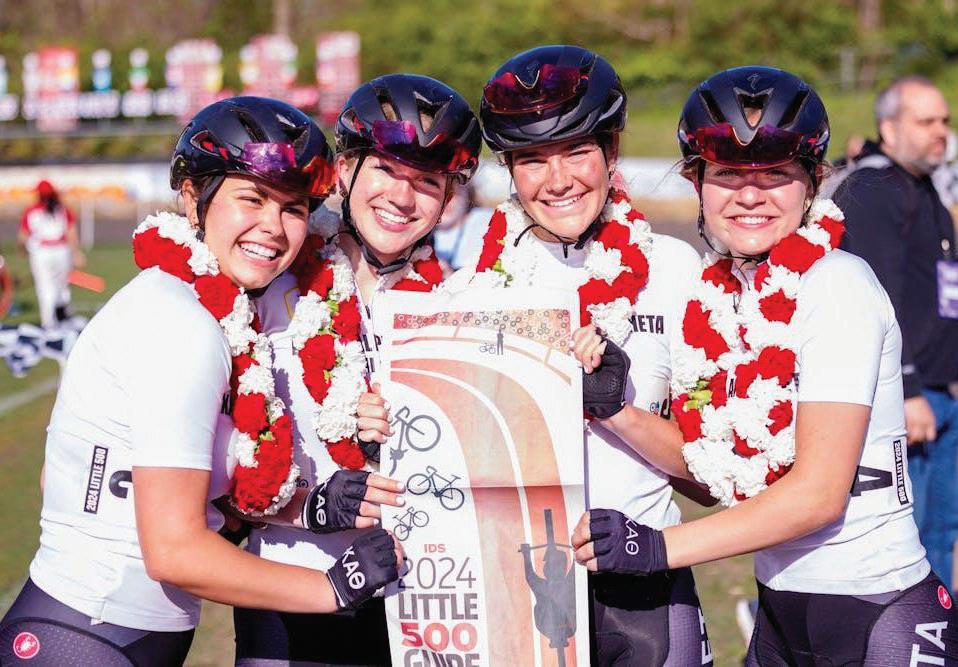
cupied the front. By lap 48, Kappa Alpha Theta and Delta Gamma separated from Teter to gain a near-half lap lead. At lap 64, Kappa Alpha Theta made a strong push for the lead to gain eight seconds of separation on Delta Gamma.
From then on, Kappa Alpha Theta’s lead continued to grow for the rest of the race. Lap 77 saw the lead expand to 24 seconds, and by lap 88 the win was essentially locked up.
Kappa Alpha Theta crossed the finish line in first 34 seconds ahead of second place Teter. Delta Gamma rounded out the top three. After a disappointing
eighth place finish in 2023, Kappa Alpha Theta’s win was its first since 2018.
In 2025, Black Key Bulls is returning half of its lineup, riders Will Wagner and Wiley Close. Kappa Alpha Theta also returns riders Bailey Cappella and Claire Tips.
Black Key Bulls posted the fastest time in men’s qualifying as it looks to repeat as champions. Meanwhile, Delta Gamma topped the women’s qualification field, with defending champs Kappa Alpha Theta in third. The 37th women’s Little 500 will be held at 4 p.m. April 25, and the 74th men’s Little 500 will begin at 2 p.m. April 26.












By Max Schneider maxschn@iu.edu
During the first half of the 2024 Little 500, Sigma Alpha Epsilon dominated.
For over 100 laps they soared ahead of the pack by as much as 20 seconds. Their steady pace kept a buffer between them and the rest of the cyclists.
Soon that pace started to slow. As the laps kept rolling, SAE’s lead began to shrink. Around lap 150, they had dropped to third. Despite battling to be neck and neck with Black Key Bulls for some time, their dominant start faded to a whimper as SAE finished sixth.
“It is kind of hurtful to think about,” senior rider Luke Naas said. “But overall, when I look back at it, I’m actually kinda almost glad it happened because it kinda locked us in to take that next step forward as a program and as a team.”
The Naas family is no
stranger to the tracks of Bill Armstrong Stadium. Luke’s younger brother, Matthew, is a sophomore rider for SAE. Their father, Bill, coaches both brothers. Bill Naas raced in the Little 500 during the 1990s before becoming a successful Little 500 coach. He coached both Sigma Alpha Epsilon and Kappa Kappa Gamma to Little 500 victories, leading the latter to five victories from 1996-2006.
Despite ultimately not coming out on top, Bill was extremely proud of the performance his team showed.
“People that really know racing said, ‘Hey, that was really racing. I know it stinks not to win but that was real racing,’” Bill said.
SAE’s preparation for this year’s race began last summer, with an increased urgency after spring break. Oftentimes, thoughts of their previous finish fueled them to push harder.
“They remember what it
was like — ‘Hey, we don’t want to feel like that again next year,’” Bill said. “So, we’re going to make sure we’re training every day. We’re going to stack our days. We’re going to do the workouts that we need to do, the hard workouts.”
During spring break, SAE traveled to Cape Coral, Florida, to continue training. Taking advantage of the flat roads and local tracks, the team stayed sharp in preparations for the upcoming qualification races.
As the race crept nearer, the rides got longer and the workouts got tougher.
“Those are things that sometimes you don’t necessarily want to do,” Bill said. “But you understand the end game. So, you get on your bike, you go out there and you put the time in.”
SAE’s training paid off, earning them a secondplace finish in the Little 500 men’s qualifications March 29. Their time of 2:24.825
was just over a second behind Black Key Bulls. Next up for SAE was the three-part long “Spring Series,” with the men’s individual Time Trials taking place April 1. Both Naas brothers shone, with Luke claiming first place with 2:19.47 and Matthew taking fifth place with 2:25.52.
Miss N Out took place April 11, where once again, Luke rose above the pack, taking home first place. Matthew rounded out another impressive SAE performance with a sixth-place finish.
For the last event of the “Spring Series,” Team Pursuit took place April 13, with SAE matching up against BKB in Heat #18. SAE edged out their fellow championship contender by a single second, timing in at 9:38.50.
With no further events taking place before the Little 500, the men’s race takes place in two weeks’ time. While Luke remains stead-
fast in the ultimate goal, the bigger picture has come into focus as well.
“Obviously, we’re looking to accomplish a Little 500 victory, that’s the end goal,” Luke said. “But as I’m doing this for my fourth time, I start to realize that it’s more important than just winning the race on April 26.”
Unlike his brother Matthew, who has another two years left, Luke is in the endgame of his senior year. It’s his fourth and final attempt at the big dance, and he refuses to take it for granted.
“It’s a lot about the process, again as a senior, it’s something really special,” Luke said.
It’s a sentiment that his father strongly shares. He highlighted how Luke, alongside support from family and alumni, rebuilt SAE’s cycling team from the ground up.
“When he started at SAE,
they didn’t have a team for the last two years due to Covid,” Naas said. “So, when he started as a freshman and we encouraged him to consider riding, he really had to start the team from nothing.”
Now, SAE finds themselves as one of the top contenders of the race. They’re a tight knit group of riders, which includes junior Lucas Lemme, a lifelong friend of the Naas family.
“I realized that it’s more than just that trophy,” Luke said. “The process, the journey, the relationships I’ve made with my teammates, with alumni, with other members a part of the Little 500 community and even just support from the house.”
Sigma Alpha Epsilon will take to the track April 26 with its eye on claiming the ultimate redemption. However, they know more than any team that only one team comes out on top.
By Conor Banks conbanks@iu.edu
After outracing Delta Tau Delta by .133 seconds and claiming the 2023 Little 500 championship, CUTTERS then-freshman rider Judah Thompson and his teammates looked to repeat their success in 2024 race.
However, the team underwent changes in 2024 after graduating a pair of senior riders. As a result, CUTTERS fell short during Thompson’s sophomore season, earning a secondplace finish behind Black Key Bulls. After missing out on back-to-back victories, Thompson, now a junior, and his teammates have a shot at redemption and reclaiming the Little 500 championship.
Inspired by the 1979 Academy Award-winning film, “Breaking Away,” CUTTERS has been an integral part of the Little 500 experience, owning an eventrecord 15 championships and establishing itself as a premier team since its debut in 1984. Throughout his first two years at IU, Thompson’s speed around the track served as a valuable and consistent piece of the historic team. In this year’s men’s individual time trials, Thompson blazed to a 2:21:91 time, finishing in second place in the event for the second consecutive year.
Since graduating from Harmony School in Bloomington, Thompson has had his eyes set on competing in the Little 500.
“The Little 500 is my primary goal and it has been since the summer I graduated high school,” Thompson said. “I do other racing outside of Little 500 like crits and track but all in the aim of making me a little fiver.”
Despite his determination to compete in the “World’s Greatest College Weekend,” cycling has not always been Thompson’s main sport.
After participating in competitive swimming for 14 years, Thompson began cycling to stay active while the pools were shut down due to the COVID-19 pandemic in 2020.
During his junior year of high school, Thompson helped launch a local junior development cycling team with a few of his friends. From there, he developed a passion. Through cycling, he began to meet new people with a shared interest in the sport, sparking his desire to compete in the Little 500.
Thompson’s preparation for the acclaimed event involves a year-round commitment. Over the summer, his training primarily takes place on roads and with criterium races — a type of cycling race that involves a closed circuit in addition to short and fast-paced laps.
Even though this type of practice differs from racing on an actual track, it still offers Thompson valuable cycling experience and allows him to refocus on the Little 500 race.
“That preparation is just all-year round and once the track opens, it’s all Little 500 focus from there,” Thompson said. “I’m not doing as much mileage on the road with the volume nor am I racing on the road too much. So, once I get on the track, it’s just all track focus both mentally and physically.”
While training and staying in cycling shape during the summer is pivotal, CUTTERS head coach Jim Kirkham notes that Thompson has improved upon other basic necessities in daily
preparation since his freshman year.
“Since his freshman year he’s been backfilling some of the details and it’s fixing him into a more wellrounded and consistent cyclist,” Kirkham said. “So, his consistency has gotten a lot better. He’s taking care of himself better, focusing more on the details like recovery, eating well, sleeping well. This comes with maturity from an 18-year-old to a 21-year-old.”
However, due to a lack of depth in 2024, Thompson’s team was forced to race defensively and felt a lack of control over the race.
“We’d rather deliver the blows than go with the blows,” Thompson said. “So, this year we plan on delivering them rather than just going with them because we got a good group of 10 guys this year who have been training all year round and doing all the necessary stuff to be good on race day.”
This year, Thompson and his teammates hope their year-round training allows them to reclaim the title as familiar faces in the crowd cheer them on to bring a 16th Little 500 championship to CUTTERS.
To reclaim their top spot, Thompson and CUTTERS will have to improve upon their 2:31:873 men’s qualification time in this year’s event, which earned the team 12th place overall.
Kirkham maintains faith that his team will enter this year’s competition with heightened attention and put up a competitive fight.
“But we just need to pay a lot more attention this year and not let gaps open up on race day,” Kirkham said. “If we do that, we will be really competitive and have a great chance at winning in the end.”

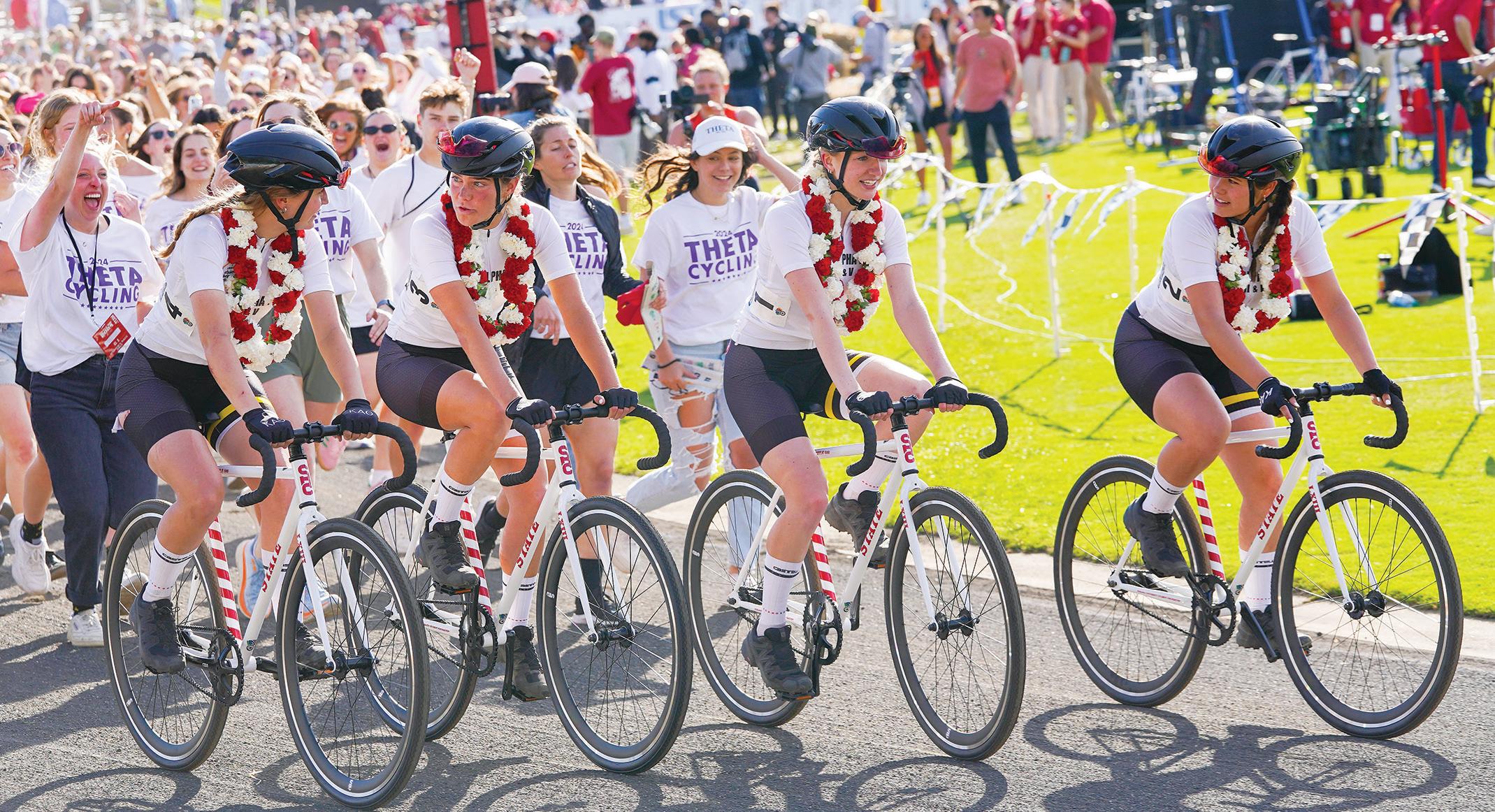
By Molly Joseph mojosep@iu.edu | @mollyrjoseph
For decades, the Little 500 has been one of Indiana University’s most cherished traditions, bringing together students, alumni and the Bloomington community for an annual bike race inspired by the Indianapolis 500.
Since its inception in 1951, the event has grown in significance, fostering both spirited competition and philanthropy. This year marks a historic milestone, as the 2025 race saw a record-breaking 36 women’s teams register and compete in qualifications, with 33 teams set to race on April 25.
Initially a men’s-only race, the event expanded in 1988 when the first women’s race was officially established, following growing interest in cycling among female students.
Claire Tips, a rider for Kappa Alpha Theta, strongly
encourages students interested in joining a team to give it a try. She credits this open-minded approach with the impressive growth of the women’s race.
“That’s how Willkie started,” Tips said. “They just got a few friends together, they asked for help from the Theta’s and they ended up winning the first ever women’s Little 500.”
The women’s race follows the same format as the men’s, albeit at half the distance —100 laps (25.47 miles) compared to the men’s 200 laps (50.95 miles). The Indiana University Student Foundation, which organizes the event, ensures that each competing rider meets the eligibility criteria, requiring them to be full-time undergraduates maintaining a GPA of at least 2.0.
The record-breaking number of women’s teams this year is a testament to the growing interest in and
inclusivity of the sport. Peter Schulz, the assistant director of the Little 500, credits this increase to the dedicated outreach and culture fostered by students.
“Our Riders Council Outreach Committee and my predecessor, Emily Carrico, have done a phenomenal job over the last couple of years encouraging more women to get involved,” Schulz said. “It really comes down to the culture that the students have created — offering mentorship, fostering a welcoming environment, and ensuring that newcomers feel supported and motivated to stay engaged.”
For many riders, the Little 500 is more than just a race — it’s a community. For Erin McHugh, a rider for Gamma Phi Beta’s team, it became exactly that. Transferring to IU and searching for connection, McHugh found both friendship and purpose through cycling.
“I got into biking as a
transfer student looking to find a community that would make a big school feel smaller, as well as the camaraderie of a team that I had been missing in my first two years of college,” McHugh said. “So far, I’ve had nothing but positive experiences. It’s incredible to see so many women putting themselves out there in a male-dominated sport like cycling, and I look forward to watching how the field grows in years to come.”
Beyond the competition, the philanthropic aspect of the Little 500 remains a key feature of its mission. The proceeds from the race contribute to various student support initiatives, including scholarships and mental health programs. Schulz highlighted the impact of these efforts, noting the funds recently helped establish a new wellness house for students.
While the increasing number of women’s teams
is a positive development, it does bring logistical challenges. Organizing an event of this scale requires meticulous planning, from ensuring rider safety to coordinating race-day operations.
Schulz, in his first year as assistant director, acknowledged the complexity of managing so many moving parts but is optimistic about maintaining the event’s integrity and structure.
“There’s always a balance between maintaining the traditions of the race and adapting to growth,” Schulz said. “As the number of teams continues to increase, we’ll be mindful of maintaining the competitive structure while ensuring all teams have the opportunity to participate.”
The Little 500 has long been a unifying event on campus, bringing together students from different backgrounds and skill levels. The increase in women’s participation not only en-
riches the competition but also signals a broader cultural shift in the recognition and support of female athletes at IU. For first-time riders, Schulz offers a simple but powerful piece of advice:
“Be relentless in all facets, whether that’s asking a question or making a new friend or within your training,” he said. “Be relentless and make a goal and go after it. I think that makes it a lot more fun. And don’t worry too much. If you do well in the race, you do well. And if you don’t meet your expectations, that’s okay, too. But just give it everything. You get out what you put in.” As the university prepares for race day, the record-breaking participation of women’s teams represents a notable milestone in the history of the event, contributing to the continued growth and evolution of the Little 500 for future generations of Hoosiers.






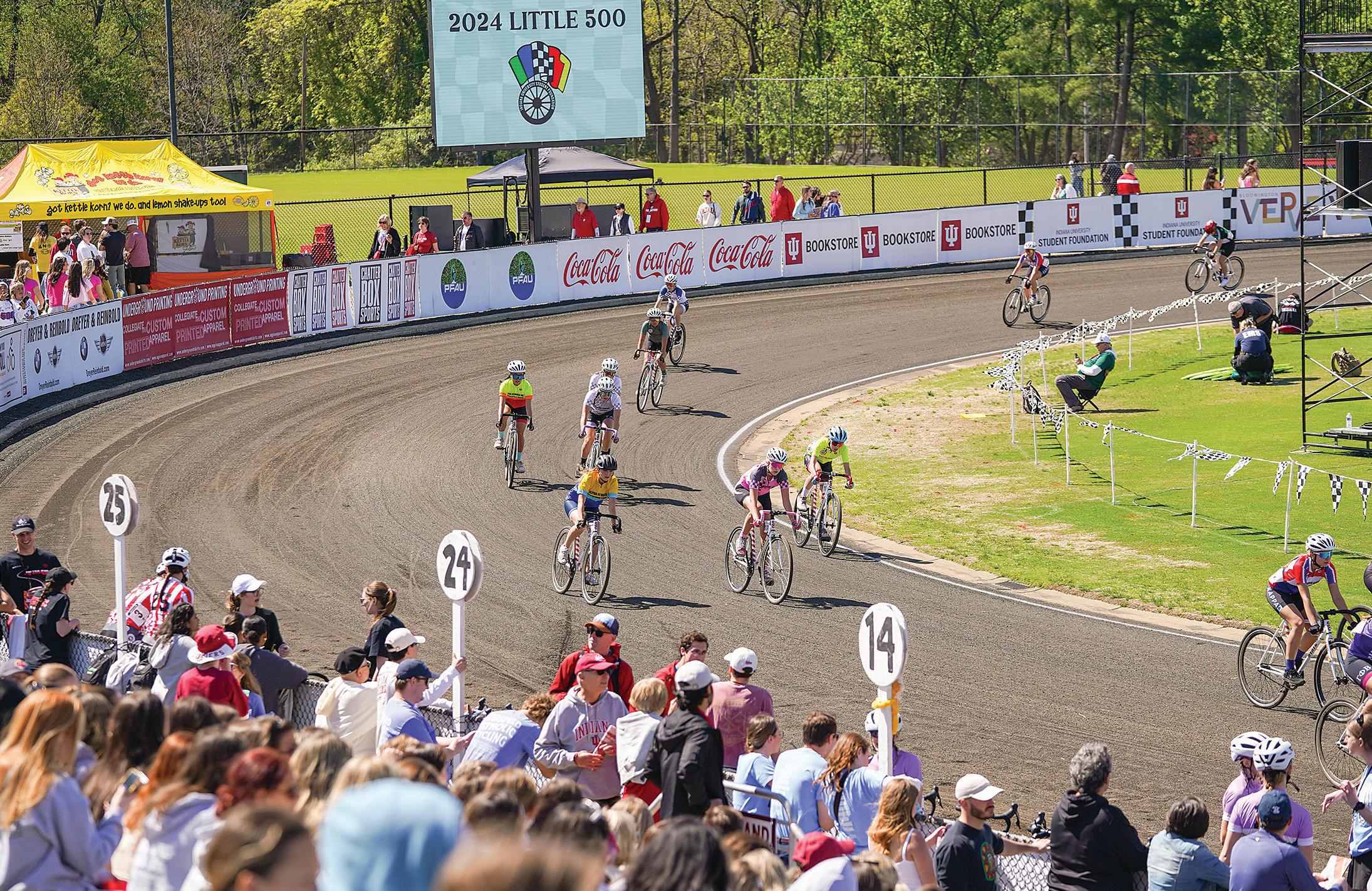
By Noah Gerkey ngerkey@iu.edu | @Noah_Gerk
The “World’s Greatest College Weekend” is fast approaching. Fans will soon pack the bleachers of Bill
Pits:
Each team in the race chooses a pit along the track. This position is determined via selection. The selection order is based on the place that each team finished in qualifications. Each pit is 16 feet wide, and no other teams are permitted to exchange in that area. There is a maximum of six people allowed in the pit during the race.
Each team must complete multiple exchanges throughout the race. An exchange is legal when teams switch riders with either one or two bikes.
While the exchange is happening, the outgoing rider cannot touch the incoming bike until it crosses the front line of the team’s pit area. Every exchange must be completed within a 32-foot area. Throughout the race, the women are required to complete a minimum of five exchanges while the men must complete 10.
Penalties:
If a team commits a penalty, they will be penalized for a minimum of two seconds. The team’s time must be spent in the designated penalty area, which is located near the starting line. All penalties must be served within 10 laps after the penalty is initially announced.
Safety zone:
The safety zone is located right before the infield, 10 feet from the inner line of the track. This area may only have authorized people inside it. The safety zone is there to protect non-active riders from the track.
Chief Steward:
Indiana University Student Foundation Litte 500 race director: Emily Carrico serves as the director of the event, overseeing all cycling activities.
Assistant Director:
Peter Schulz joined the IUSF as an assistant director Jan. 13, 2025. Schulz leads the spring cycling series events and is an adviser in the Rider’s Council and Steering Committee.
The chief steward will decide on all questions that relate to the conduct of the race itself. They have the power to disqualify any team or rider for unsportsmanlike conduct. They also have the power to assess penalties throughout the race if necessary. All decisions made by the chief steward are final and unable to be appealed.
Judges:
There are a total of 17 judges who are stationed throughout the track. The job of the judges is to report irregularities to the chief steward for a further decision.
Chief observers:
The three chief observers are positioned in observation towers. The main duty of these observers is to aid the chief steward with the enforcement of rules.
Entering the infield:
The cement gutter around the interior of the track surrounds the infield. Riders are not allowed to enter or ride on it unless they are forced by another team onto the gutter or into the infield. If a team attempts to improve its position by riding through the infield, they will be assessed a penalty.
Line-Up:
The lineup is how riders are lined up for the initial pacing lap.
hoisting the Borg-Warner trophy as Little 500 champions. The women’s race will take place at 4 p.m. April 25, and the men’s race will begin at 2 p.m. April 26.
Bike:
The IUSF gives every team two bikes for the Little 500 race. Teams that make illegal changes to the bikes or fail to comply with the rules will receive a penalty. Teams may be issued a third bike, but only if both bikes already given are damaged to the point they cannot be repaired.
Pole position:
The team that begins in first place is in “pole position.”
Drafting:
When a rider conserves their energy by riding behind another rider, while benefiting from a reduction of wind resistance.
Borg-Warner Trophy:
The name of the Indianapolis 500 replica trophy that is presented to the winners of the Little 500.
Yellow jersey:
The winning team from the previous year for both the men’s and women’s races has the opportunity to wear the yellow jersey. Kappa Alpha Theta will wear the yellow jersey in the women’s race and Black Key Bulls will wear the yellow jersey in the men’s race.
Starter:
The starter is responsible for giving the flag signals for the riders to follow.
Safety Officials:
They are responsible for the safety of the riders during the race.
Green Jersey:
The team that finishes first at qualifications has the opportunity to wear the green jersey. Delta Gamma will wear the green jersey in the women’s race. Black Key Bulls could wear the green jersey in the men’s race, but will wear yellow because of their victory in 2024.
GREEN Starting signal, clears course
BLUE AND ORANGE Rider attempting to pass
BLACK Ride on the outside of the track
RED Stop; race is halted
YELLOW
Ride with caution and maintain position
WHITE
One lap until finish
CHECKERED
Race completed
Inspector displays a yellow flag, clears the track of wrecks, controls re-entry and points out infractions.
, located in the press box, is responsible for the lap counting and time.

Pit
Judge presides over pits to monitor conduct, such
in exchanges. One judge presides over every two pits.
gives the flag signals for the start and finish line.

































Each year, three jersey colors are designated to certain teams. The white shirt goes to the winner of the Team Pursuit event, yellow is worn by last years’ winners and green is worn by the pole winners. Black Key Bulls placed first in qualifications. The team chose to wear yellow, but qualified for the green shirt as well.




































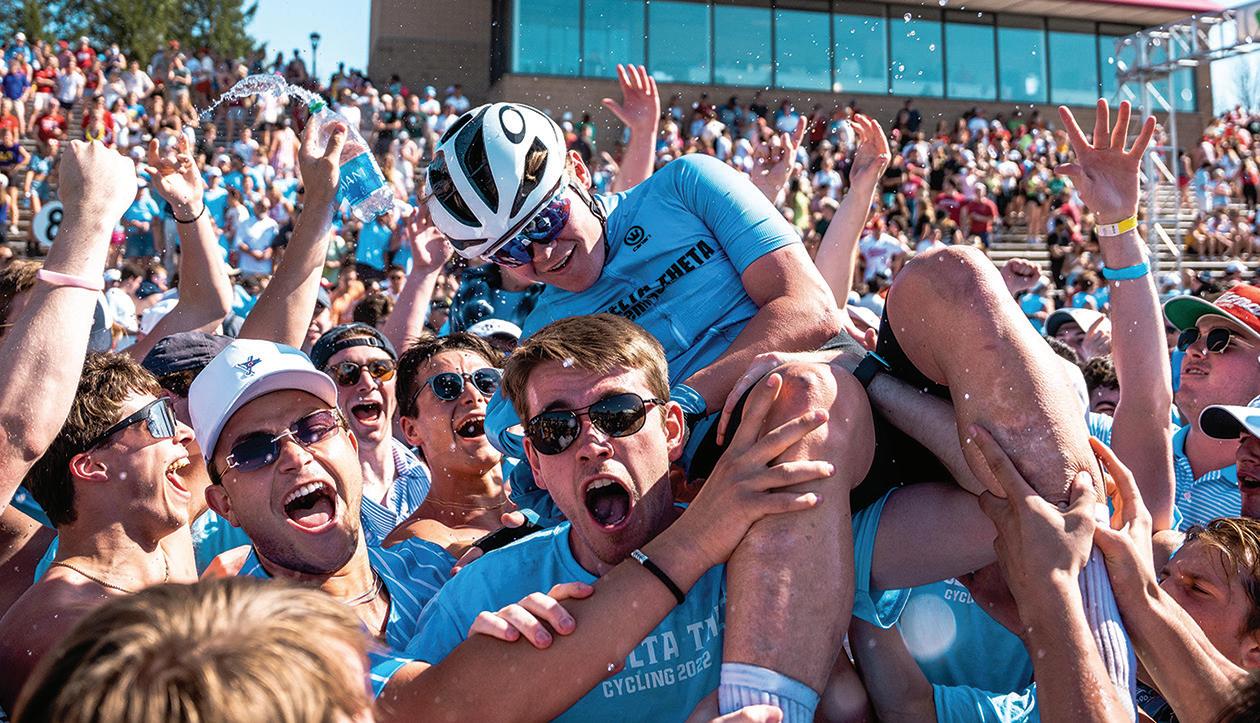
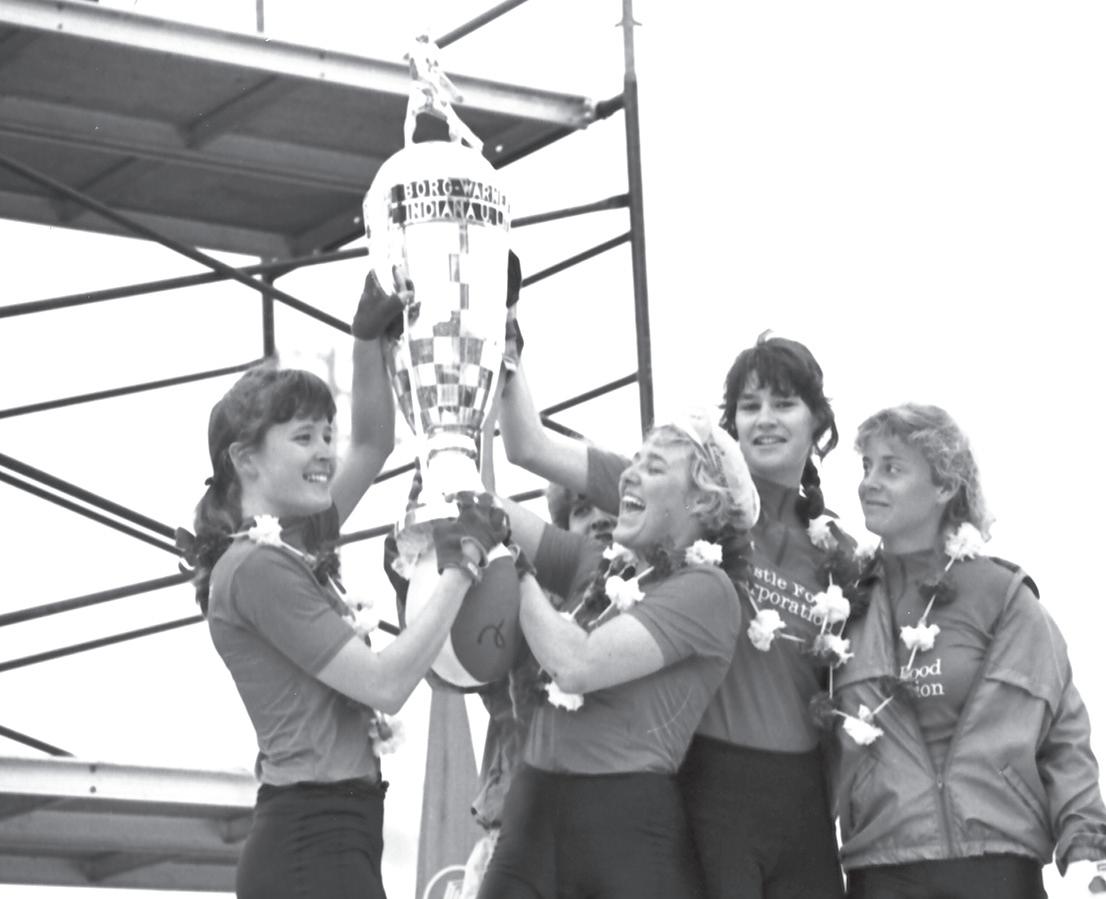


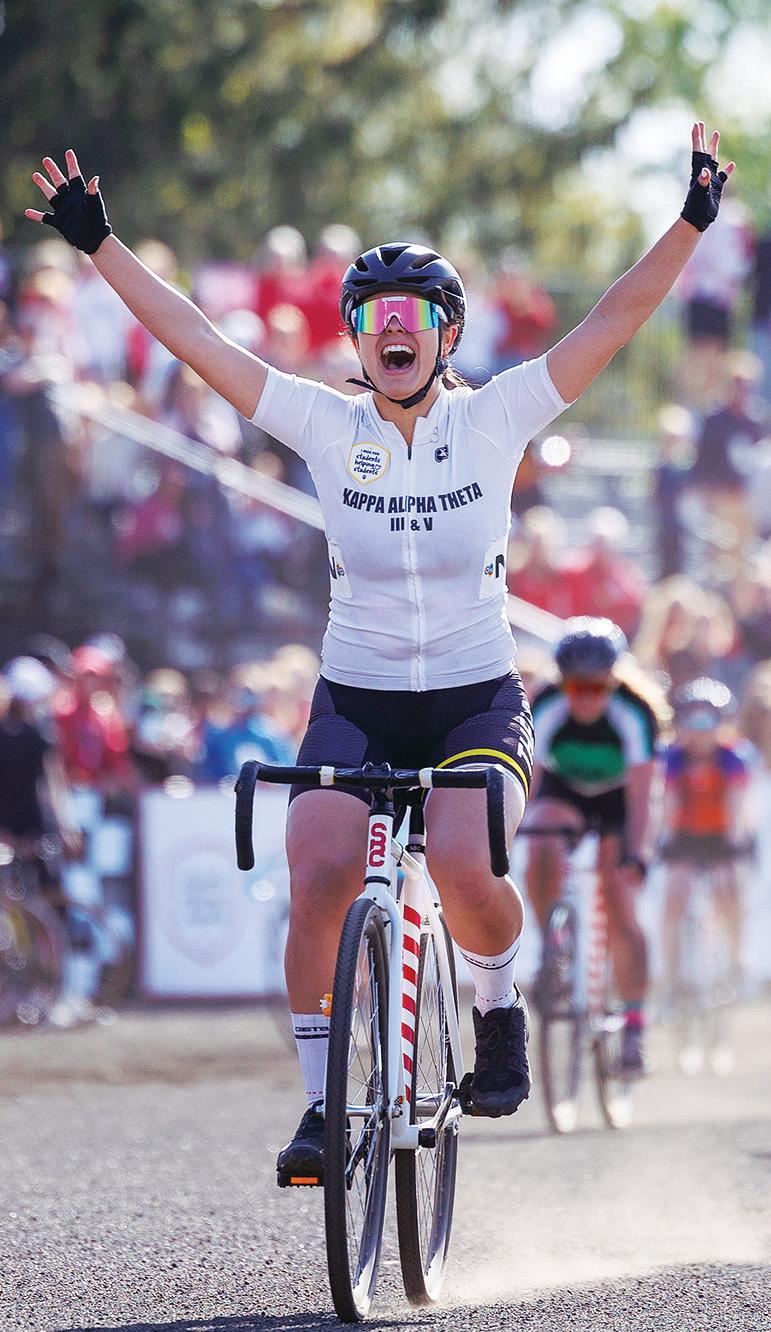
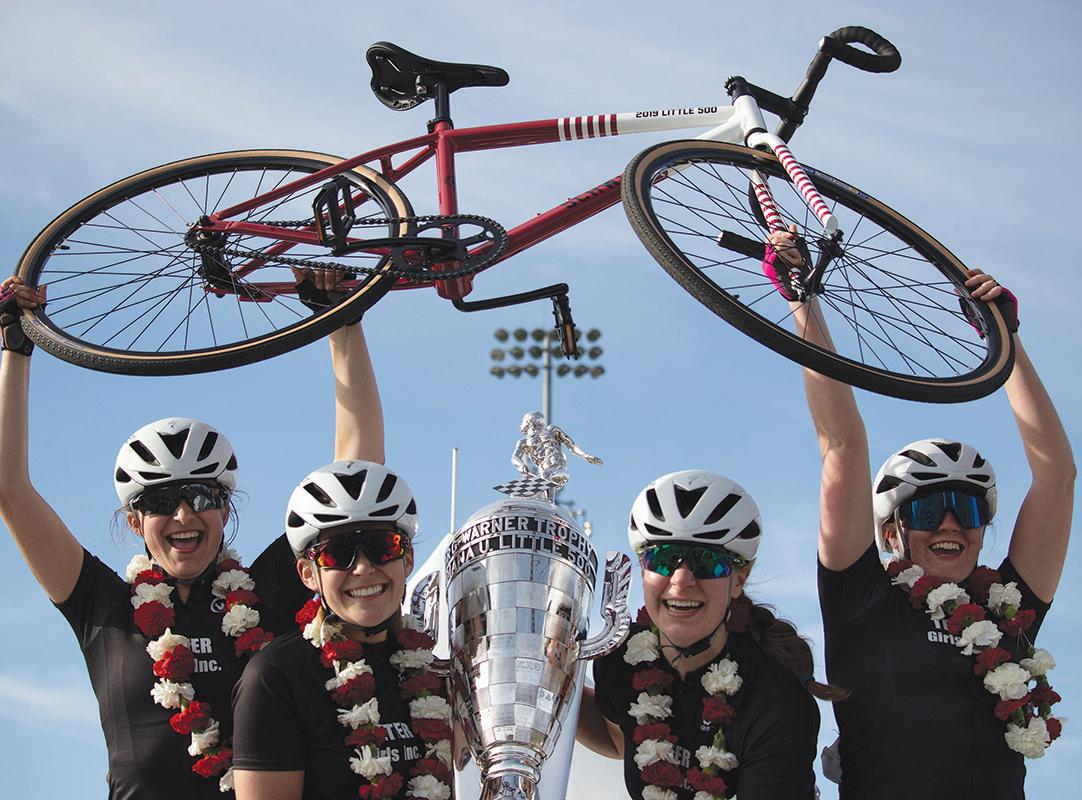
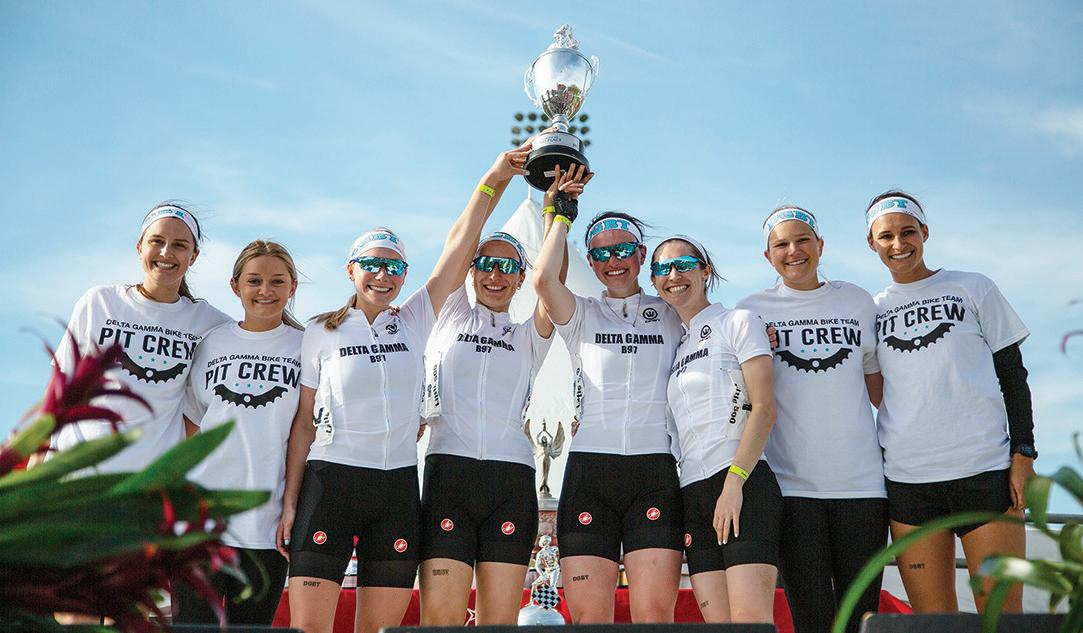


By Jovanni Salazar jsalaza@iu.edu
The Little 500 attracts more than 25,000 people to Bloomington annually and is known as the largest bicycle race in the country. But before the race gained this popularity and reputation, it was originally an event to honor a loved one.
The first race was held in 1951, but the story of the Little 500 started in 1919 when Howard Wilcox won the famous Indianapolis 500. The next year, his son Howard “Howdy” Wilcox Jr. was born. Wilcox Sr. died years later in a racing accident, leaving Howdy as an orphan as his mother also passed away two years before. Years later, Wilcox Jr. would see something that gave him an idea that would bring the school closer together and honor
his father. In 1950, Wilcox Jr. was strolling around campus and saw a group of students who were racing with bicycles. This moment sparked the idea of a university cycling race, and as the director of the IU Foundation, he decided to take this idea to the IU Student Foundation.
that this race could be used to raise scholarship money for working
students. Wilcox Jr. also saw this as an opportunity to grow consistent support for the foundation. He decided to name it the Little 500, emulating the Indianapolis 500 his father won.
The South Hall Buccaneers won the first-ever Little 500 on May 12, 1951,
third. The race originally consisted of only male students, but over time the interest among women began to increase.
This growing interest led to Kappa Alpha Theta, a sorority on campus, finishing in 34th place in the 1987 qualification trials. It did
was the dean of women’s affairs at the time.
Klotman proposed the idea of a separate race for women and it was quickly established. The first Women’s Little 500 was held in 1988 with Willkie Sprint finishing in first and Kappa Alpha Theta right behind
its long history. Meanwhile, CUTTERS is the reigning winner of the men’s race, and has a record 15 wins since its debut in 1984. The team name was inspired by the movie “Breaking Away,” which features a group of teenagers who participated in the Little 500 and named themselves the CUTTERS.

By Edie Schwarb eschwarb@iu.edu
A trio of cyclists stayed close together in a pack, moving into a line one after another on each turn. Each rider took a turn moving to the front of the group to bear more of the wind. The group yelled “inside” as they flew past other riders, leaning low over their handlebars. When their faster set was over, they slowed down and moved to the edge of the track to pedal through the recovery set. As they rode leisurely, the detailing on their black kits was fully visible. Each has multicolored accent stripes and letters spelling “Delta Gamma” across the front.
The cinder track housed inside Bill Armstrong Stadium is alive. After months of practicing indoors on stationary rollers, the weather finally permits cycling teams to take to the Little 500 track for spring workouts. Eventually, the group finished their workout and headed to their pit, yelling “coming out” to alert other riders they pulled off the track. Senior Caitlin May dismounted her bike and instructed her sophomore teammates to move into practicing exchanges.
Anna Witte took off running with her bike. She was working on perfecting her mount, something she didn’t have much experience practicing. She ran and jumped onto her bike, attempting to seamlessly get one leg over the seat, secure both feet on the pedals and pick up speed simultaneously. She wobbled and took a moment to regain balance before pedaling an easy lap around the track. She repeated the process, applying feedback from Caitlin to not stutter step.
Eventually they moved into single-bike exchanges.
Alyssa Gray positioned herself in front of the pit as Witte took off around the track. As she approached, she signaled for an exchange and the stationary rider started running with her hands outstretched, attempting to blindly take the bike.
“Don’t look back,” Caitlin yelled.
Only 37 years have passed since the inaugural women’s Little 500, yet so much has changed. Instead of throwing teams together at the last minute and having no knowledge of how to practice, riders compete in events yearround and execute training plans made by their coaches.
And unlike in 1988, when women entered the field on race day sporting their team names on their racing kits for the first time, today women take the track knowing they represent more than just their team. Women wear the names of the teams that raced decades before.
Teams like Delta Gamma have a long history in the race, as they have competed since the inaugural competition. The team has finished in the top five for the last nine years and has four victories to date, making them one of the most consistent and decorated teams in the women’s field. These wins are talked about often by coaches and riders, as well as the individuals that contributed to this long legacy. As a result, current and incoming riders understand the history and what they are a part of.
Caitlin knew of the Little 500 and just how meaningful its history was before arriving in Bloomington. Her mom Linnea May, one of her biggest role models, competed in the race for two years during her time as a student.
***
Linnea was a freshman at IU when talk of the first women’s Little 500 spread across campus. She was part of the club gymnastics team after years of training as a gymnast, but ultimately decided she wanted to move on from the sport. While Linnea took a step back from gymnastics, she still wanted to stay involved. She joined forces with a few friends from her dorm, Teter, and registered as an independent team. When the idea first came to mind, Linnea didn’t even own a bike. She and her friends scrambled to find a coach and figure out how to train for the race. Alongside the other
newly formed female teams, they largely taught themselves the necessary skills.
On the day of the race, Linnea took in the large crowd cheering on 30 teams, including hers, as they raced around the track for the first time.
“I just remember thinking ‘This is really cool, I don’t know if I’ll ever be a trailblazer for anything else,’ Linnea said. “I mean, it was pretty amazing.”
Linnea returned to the track for the first time since her days as a student in 2023, this time to cheer on her daughter, Caitlin, in her Little 500 debut. She and her husband, who competed in the Little 500 for Sigma Chi, watched Caitlin and the Delta Gamma bike team finish fourth.
Caitlin, co-captain of Delta Gamma, was a yearround multi-sport athlete in high school. When she went through the sorority rush process her freshman year, she kept Little 500 in mind, seeing it as an opportunity to remain active. After joining Delta Gamma and completing her rookie season as a freshman, she raced for the first time as a sophomore.
“Race day was the best day of my life,” Caitlin said. “My parents were so excited.”
This year, as the lone senior and only member of the team with race experience, her role as a leader is crucial. However, she can lean on the support of teammates, past and present, and the Delta Gamma alumni network.
The team’s two coaches, Katherine Free and Kensington Knowling, have experienced winning, as they were on the 2021 team which took home first place. The pair is responsible for making the team’s training plans and keeping them on track throughout the year. They meet virtually with the group every week when they’re not in town. They also serve as valuable liaisons between the current riders and bike team alumni.
Unlike independent teams who might struggle to receive funding, Greek teams with long histories, especially successful ones, receive significant alumni support. Alumni make sure the cur-
rent team is well-equipped with the necessities and go as far as to take the team out for meals when they’re in town.
That support is in no way limited to funding. Alumni show up every year to the race to cheer on the current team and always make themselves available for advice or questions. They provide words of encouragement the night before the big race when the Delta Gamma bike team gathers in the house movie room to watch a video crafted by riders in years past. In it, the women wish them luck and send well wishes before the big day. It is a culmination of the support they have received from alumni all season.
***
On March 29, qualifications for the men’s and women’s Little 500 races were underway in Bloomington. Each team had three opportunities to complete four laps between all its riders and execute a faultless exchange between each.
As Delta Gamma entered the field, their cheering section of sorority sisters erupted in excitement. They approached the track and Caitlin, the lead rider, mounted her bike. After completing her lap, she exchanged with sophomore Morgan Heim and immediately started to cheer her on. Heim exchanged with sophomore Alyssa Gray, who sped around the track and came in hot for her exchange with junior Bridget Pfau. The pair ended up just barely outside the exchange zone, and the yellow flag
shoots up to signal their first attempt is invalid.
Simultaneously, in Fairfield, Connecticut, Linnea tuned into a livestream of the qualifications on her television. She anxiously watched as the girls departed the track and headed back to the warmup area to regroup before their second attempt. She hoped they could come back mentally from a fault that occurred so close to the end of a clean run.
She yelled at the TV, cheering on Caitlin as she led off the team again. With every fast lap and flawless exchange, Linnea grew more excited. As the last exchange between Gray and Pfau was executed without error, she shouted and watched Pfau soar around the track for the final lap. Pfau crossed the finish line and secured Delta
Gamma the fastest time of the day. As her daughter’s team took the pole position, Linnea burst into tears. The team’s top time withstood the rest of qualifications, meaning the girls will sport bright green jerseys come race day and line up in the first row in the most inside spot on the track. Linnea and her family will return to Bloomington for the women’s Little 500 on April











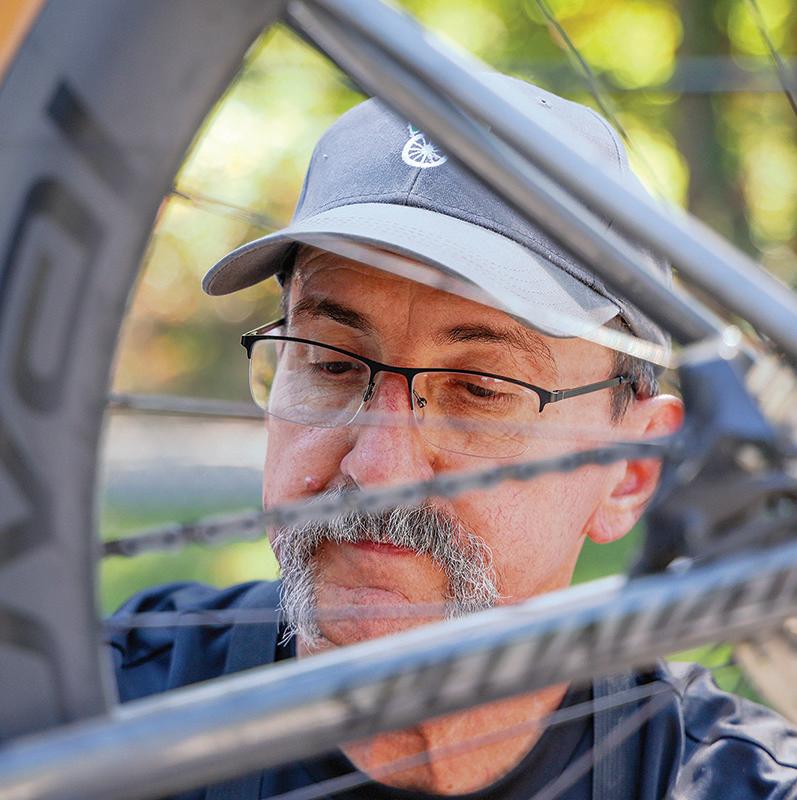
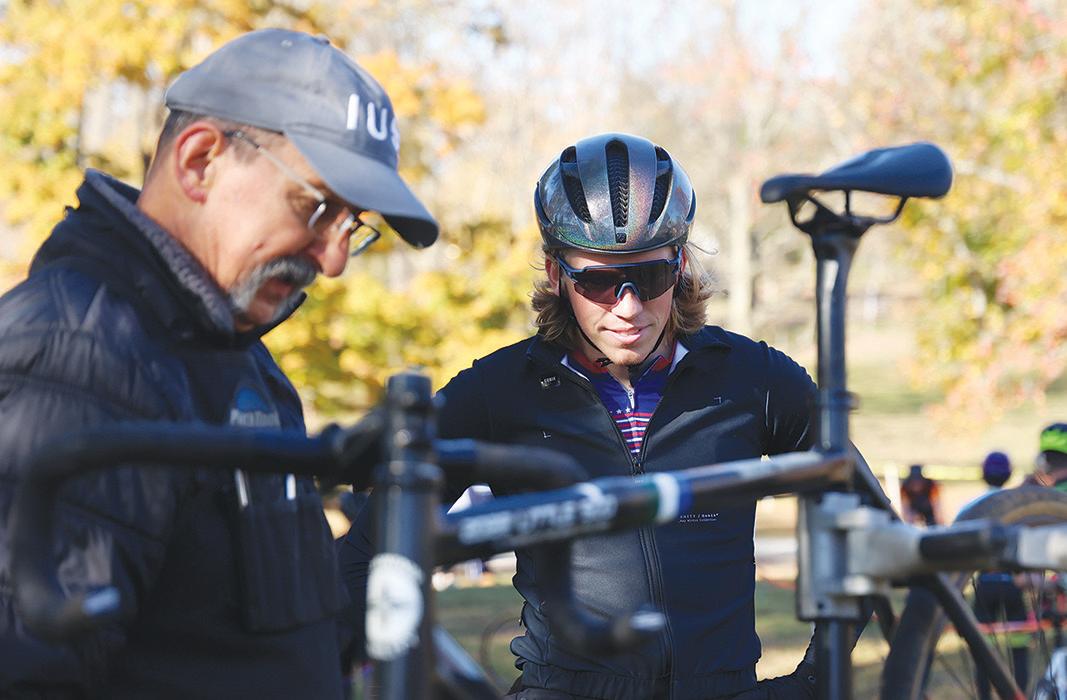
PHOTOS BY GRACE URBANSKI | IDS
1. Greg listens intently as Mau Brito shows him his new bike Sept. 20, 2024, in Bloomington. Mau, a junior riding for Cinzano, arrived at the Wilcox House prior to his weekly Friday ride. The Wilcox
1 2 3 4 5
By Tory Basile vlbasil@iu.edu
Rookies stumble into the bike shop like babies, big white helmets strapped below their chins, cheeks chapped red from the October cold.
Some cling to the edges of the room. Others move around cautiously. They mutter to each other asking what tire pressure they should fill their wheels to. Their friends respond, heads shaking — clueless.
But an older rider, the oldest in the room by some 49 years, takes pity on the rookies.
In the middle of the Little 500 bike shop, Greg Souder cranes his neck over a road bike, spinning its front tire to check the derailleur, ensuring the chain shifts gears properly. A chunk of dirt flies off the spokes.
The room smells like spray paint, a few of the riders smell like sweat. More experienced cyclists grab what they need and wave hello to the man. The newer riders, though, are less certain. Until recently some didn’t even know the bike shop tucked away under the stands of the race track existed.
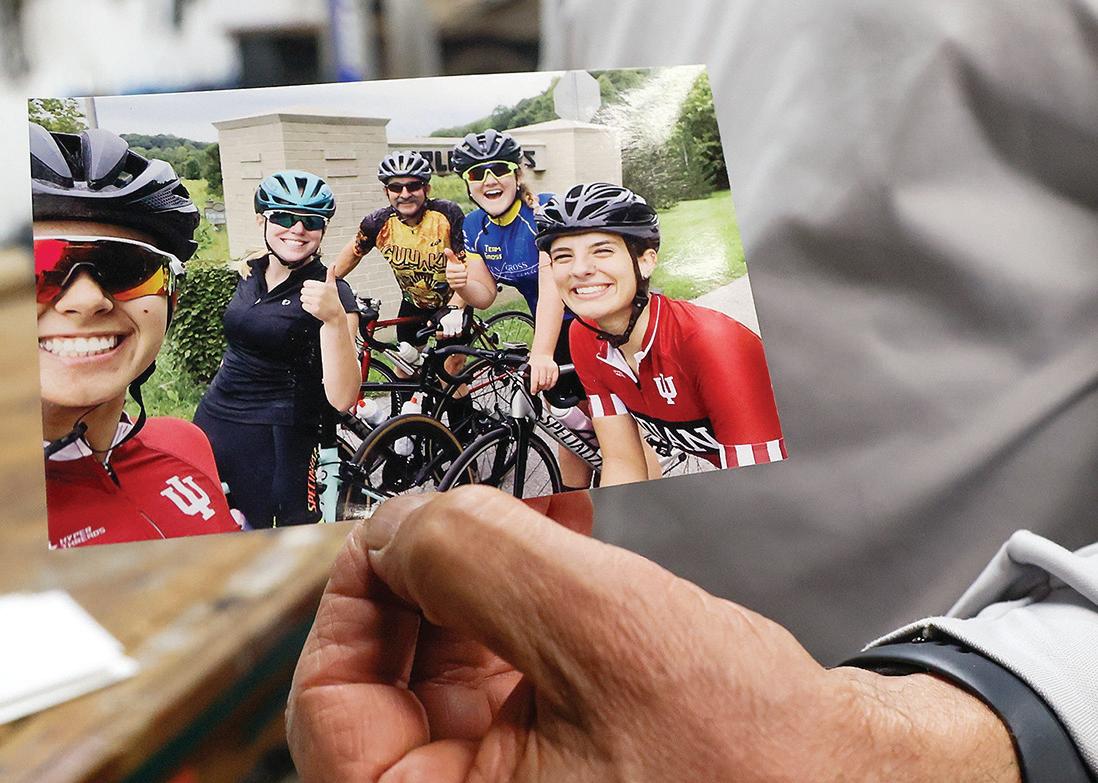

“Don’t be bashful if you need help!” Greg yells out.
Dozens of student riders whisk in and out in preparation of the day’s race: the Bloomington Classic. And a few dozen times, Greg will show them how to adjust their bike seats, inflate their tires or tighten their chains.
Hundreds of students attempt to compete in the race. About 264 riders on 66 teams race on 185 bicycles. And one lone mechanic is responsible for keeping every wheel turning. Of the thousands of fans who watch from the stands, most won’t even see Greg. To those who do, he is little more than a speck on the sidelines of the Little 500 racetrack.
But to the college kids who wheel their bikes into his shop week after week, Greg is the reason the race goes on.
***
Greg didn’t expect to get the job.
When he came home from work mowing lawns for the city one evening in 2018, his wife Joie greeted him with a hiring ad she’d cut out of The Herald-Times.
She said she found him the perfect job.
“But I didn’t think they’d hire an old man,” he said.
The mechanics for previous races were typically in their early 20s, recent IU graduates who tended to stick around only for a year or two. They weren’t like Greg, 69, with a thick gray horseshoe mustache, doctor-recommended compression socks, vintage cars and grandchildren.
This spring will be his seventh year.
With that time has come wisdom. When the Little 500 arrives, and Greg parks himself along the track with a storage container aptly labeled “GREG’S STUFF FOR RACE DAY,” he’ll have thought of everything. He brings water bottles and bandaids, extra washers because sometimes when the kids build their own bikes, they put the wrong kind on. In October, he packed extra clothes in case anyone got cold.
He learned to carry safety pins if riders forgot to attach their race numbers to their jerseys.
“I was a Boy Scout,” he said. “And Boy Scouts are supposed to be prepared.”

To Greg, working as the Little 500 mechanic is a dream job — far better than when he worked on his father’s farm, or in his brother’s pizza shop, or as a trucker or a factory worker or a tree stump grinder.
He said he’s always been “mechanically inclined,” ever since he was old enough to reach the pedals on a tractor. When he was 16, he taught himself how to repair cars because he didn’t have the money to pay someone else to, and his penchant for street racing meant his 1965 Chevelle Super Sport was often in need of TLC.
He enjoys pushing the boundaries of his knowledge — unraveling greasy puzzles made of gears and wires. He likes the satisfaction, the sense of accomplishment that comes with doing something yourself.
Greg didn’t become interested in cycling until he was in his mid-50s, when a doctor told him it would be better for his knees than running. He even owned a bike shop in Huntington, Indiana, for a few months in 2012. When he accepted the Little 500 mechanic position, he assumed he’d be working alone on bicycle
“I never dreamed that I would have such oneon-one conversations and things with the students,” Greg said. “And there’s a teaching aspect to it that I never dreamed about, because these students are like
Dorothy Curran-Muñoz joined the Little 500 her sophomore year. She was looking for somewhere that made the campus of almost 50,000 students feel smaller. She was invited to start the women’s Novus team, but she knew nothing about
racing. Dorothy didn’t even have her own bike to practice with outside of Little 500.
“So my mom found one for me on Facebook Marketplace for like 80 bucks,” she said. “And it was totally only worth 80 bucks.”
When it wouldn’t shift gears correctly, the men’s Novus captain directed her to the mechanic. Greg welcomed Dorothy, fixed her bike and showed her what the different parts were. He opened the bike shop for her one day and spent an hour teaching her.
“I remember walking away that day feeling such a sense of belonging that I hadn’t before,” Dorothy said. “I was like, ‘Okay, maybe I can do this.’”
Now, Dorothy is a senior on the Riders Council. She says she often encourages rookies to go to Greg for help because he never makes them feel out of place. Whenever she sends someone his way, she makes sure to tell them to say thank you.
“You know when professors, like, you can just tell that they love what they’re doing? They love the content. They love teaching. They want you to understand,” she said. “That’s how Greg is about bikes.”
Dorothy said Greg taught her everything she knows about bikes. When she walks into the shop the day of the Bloomington Classic, he catches up with her and asks if she got a haircut.
Other riders learned what they know from Greg, too. Owen Teed is a senior and President of Riders Council. The Little 500 is in his blood — his dad raced for Human Wheels when he went to IU, and his sister Abby raced for Melanzana.
During Welcome Week his freshman year, Owen’s sister introduced him to Greg. The next year when Owen started his own team — a revitalized Human Wheels — he went to Greg again.
“He remembered my last name and I told him I was, in fact, Abby Teed’s brother,” Owen said.
The first few times Greg fixed his bike, Owen didn’t watch carefully. But soon he realized just how often they needed repairs.
“So the next time I took it to him, I paid close attention,” he said. “And everything I’ve had him do on my bike, I’ve paid close attention, to the point where last year I built my team’s race bikes.”
Greg says it’s harder for boys to ask him for help than girls. He thinks boys don’t want their teammates to think less of them. Owen says Greg told him the men’s teams don’t take enough advantage of the skills he has to offer.
But Owen is quick to say he’s glad to learn from Greg.
“You can tell it kind of warms his heart a little bit to see that what he’s taught you has paid off, and you’re now able to do it on your own,”
Owen said.
To Greg, that’s one of the best parts about the job. He loves watching students grow during their time at IU — not just as riders or mechanics, but as adults.
Just a few weeks before this year’s Little 500, Greg told Owen it seemed like just yesterday he walked into the bike shop as a freshman.
“And in four years just, poof,” Greg said. “Went by already.”
Before the Bloomington Classic, Greg kneels down on the cement floor marked with tire prints to show a girl how to pump air into her tire.
“In a couple of years,” he says to the rookie, “you’ll be captain of the team.”
***
When Greg and his wife moved to Bloomington in 2017 from Markle, Indiana, they didn’t know many people in town.
Then in December 2021, Greg found out he had a tumor on his kidney.
“When you go to a doctor and that doctor mentions the C-word —” he says. His voice trails off. “My mind just went fuzzy.”
He’d never received a diagnosis like it. He’d never even broken a bone, spare a few fingers he smashed working in a factory.
Cancer changed things for Greg. He could no longer ride his bike for miles every day. He could no longer move as freely. But more than that, it changed how Greg thought. It lingered in the back of his mind no matter what he was doing. He had a granddaughter and a grandson on the way. Joie had health problems too, and he wanted to take care of her.
“I just kept thinking, ‘Man, I want to be here for them,” he said.
On Valentine’s Day 2022, he had his kidney removed, but the cancer had spread to his bladder. He had to undergo immunotherapy treatments for the next two and a half years. Being away from home made it more difficult.
“It’s really hard when you move across the state and move away from all your family and friends, or most of them,” Greg says. “At my age, it’s hard to make close friends.”
The support he found at the Little 500, though, from the race director, the students and office staff, meant everything to him. His bosses let him keep his job and take time off. They brought in another mechanic to help him. Calls and texts poured in from people wishing him well.
“It just made me realize this is where I belonged,” he said.
That’s why he was back working the race that April 1, less than two months after having his kidney removed. He loves this job, he says.
Today, Greg is healthy. But even now, he chooses not to use the word “cancer-
free.” He says he’s lucky he didn’t have to go through chemo, lucky that life is good. Still, when he goes in for scopes and scans, he holds his breath and hopes they don’t find anything.
Tucked away on a shelf in his garage at home, wrapped safely in a plastic baggie, he stores the cards riders wrote to him when he was sick.
“Kept every one of them,” he says.
***
As the spring approaches, Greg stays at Bill Armstrong Stadium later and later, often past 9:45 p.m. when the racetrack closes.
He can feel the anticipation building. He sees teams glide around the track in packs, day after day until the end of April. All the riders are nervous, he says, every single one of them. He tells them to have fun. Enjoy the moment.
“You’ll be fine,” he says.
“That’s usually the last words — ‘You’ll be fine.’” He stands at the track, watching as kids lap him. A rider calls out to him from her bike, and then she’s gone. She zips past before he can recognize who it is.
“That happens all the time,” he says. The anxiety leading up to the race doesn’t get to him anymore, not like it did the first year or two. He doesn’t take any stress home from work. Joie said he can fall asleep at the drop of a hat. At home Greg’s garage is pristine. Every tool is hung just so, his dog Kylo is sprawled in front of the hood of his prized possession, a sparkly blue 1963 Mercury Meteor. His grandson Lewis and granddaughter Norah love riding in its rear-facing back seat. Norah is 8 and chatty and orbits Greg like he’s the sun.
He could stay at home, relaxed and retired. But he chooses to be the lone mechanic.
“Before I was trying to make money doing everything, you know? When your kids are young, that’s your focus, especially as a man providing for your family,” he says. “And I don’t have to do that anymore. So I think that makes it more enjoyable that I don’t have to do this.” For now, Greg has no plans to retire. When he does, he thinks they should replace him with another “older gentleman.”
“I know the end will come someday, and I just sincerely hope that the IUSF can find somebody that loves this job as much as I do,” he says. He waits in the bike shop. Even though it’s cold he leaves the door propped open for kids to come in. On the workbench, he’s framed a photo of him and some riders, all of whom are long graduated.
Soon, he’ll be done too.
“I’m hoping if I make it 10 years,” he says, “Maybe they’ll name the bike shop after me.”
By Will Kwiatkowski wdkwaitk@iu.edu | @wkwiatkowski_15
The women’s Team Pur-
suit, held April 13 at Bill Armstrong Stadium, captivated spectators with intense competition and roaring cheers. As the racers darted around the track, the excitement built with each lap, setting the stage for an exhilarating championship race later in the night.
The Team Pursuit competition consisted of heats with two separate teams of three or four riders competing for the best overall time. Unlike other Spring Series events, Team Pursuits starts with racers dashing toward their bikes, mounting them and taking off on a 15-lap race around the track, totaling 3.75 miles.
The April 13 event emphasized a full team effort, highlighting teams with four riders who can all maintain a strong pace, rather than relying on individual performances.
Throughout the day, 33 women’s teams competed fiercely, each vying for the chance to claim the team pursuit championship title—just 12 days before the Little 500.
Teter delivered the first standout performance early in the day.
Competing in the fourth heat April 13, Teter had an opportunity to set the bar following a close secondplace finish in last year’s Team Pursuit. They did.
In the 15-lap run, Teter posted a time of 10:35.50, placing it on the provisional pole.
Alpha Chi Omega was the next team to challenge the standings with a compelling Spring Series resume. Fresh-
man Libby Lewis, who secured first place in the individual time trials, and senior captain Chloe Eades, who placed third, led the team. Lewis and junior Grace Howard also placed in the top six of the women’s MissN-Out, along with the team’s sixth-place finish in qualifications last month.
“We were just excited,” Eades said in a post-race interview with the Indiana Daily Student. “I think this is really cool that we even had the opportunity to be here tonight, but our goal was to win it.”
With an impressive time of 10:52.74, Alpha Chi Omega grabbed the second-place position in the Team Pursuit leaderboard, a spot that, if not topped, would have them in the Team Pursuit finals.
Kappa Alpha Theta aimed to defend its title from the 2024 Team Pursuit. Its run started strong, maintaining a solid pace through the first laps. Despite an official time of 10:55.92, it wasn’t enough. It finished third in the standings, missing the mark to compete for the Team Pursuit championship.
Throughout the day, other teams challenged, but none eclipsed the 10:52.74 mark for the championship set by Alpha Chi Omega.
As the sun began to set, the two contending teams’ riders returned to the track to compete for first place. Warming up on their bikes in preparation for the final Spring Series event before the Little 500, excitement and anxiety built within them.
Waiting anxiously, Alpha Chi Omega riders danced in the warmup area to help
shake off nerves that had slowly built up for eight hours ever since taking the provisional pole spot at noon.
“We were just excited to get back on the bike and just show what we can do,” junior Alpha Chi Omega rider Ellie Marsella said. “We drank a lot of Red Bull — it brings excitement.”
Each team started in their respective corner, across from each other. As the horn sounded, the teams quickly ran over, mounted their bikes and began exchanging words while darting around the track.
“It’s less of communicating because we know our wheels so well,” Marsella said. “It’s more of just, like, motivating and saying the right thing to the right person, encouraging each other.”
Each time a team passed the stands, separate rows of cheers erupted, fueled by the excitement and anticipation of a long day of cycling. The riders pedaled vigorously around the track.
“We know we’re capable of a lot,” Lewis said. “Telling each other to keep going and pushing helps us through tough times during the race. The fans cheering and those words of reassurance encourage us to push a little more, knowing we can do it.”
After finishing 17.24 seconds ahead of Alpha Chi Omega in the first bout, Teter opened the championship race slightly ahead of the competition, setting a strong pace early.
Throughout the race, an Alpha Chi Omega rider on the sideline shouted at her riders as they passed.
“Don’t look at where they are,” the rider said. “Don’t

worry about them. Keep pushing. Trust yourselves.”
Teter had a hot start, taking the driver’s seat early on. However, lap by lap, Alpha Chi Omega steadily closed the gap. Eventually, Alpha Chi Omega began to create distance.
“Go, go, go!” the teammate said. “All you have right now! You guys have it!” Alpha Chi Omega closed out the race with a break-
away finish for first place.
As the Alpha Chi Omega riders crossed the finish line, they immediately released their emotions. Their hands flew into the air in celebration of yet another successful finish in the Spring Series.
Alpha Chi Omega placed first with an official time of 10:23.98, taking a sizeable victory over Teter by 0:11.96 seconds.
Following Alpha Chi Omega’ successful Spring Series, its Little 500 victory aspirations are real. Its performances throughout may have convinced many onlookers of that ahead of the Little 500 race on April 25.
“We’ve all worked so hard, and everyone deserves everything that’s come our way,” Lewis said. “It’s important to be confident in each other and us.”
By Samantha Camire scamire@iu.edu | @camiresamantha
Every year, thousands of spectators file into Bill Armstrong Stadium to watch the legendary Little 500, part of what is billed as “The World’s Greatest College Weekend.” But the organization behind the race is about much more than biking.
IU Student Foundation is the student branch of the IU Foundation and supports student philanthropy on campus. In addition to planning and hosting the Little 500, IUSF raises money through the Students
Helping Students campaign and hosts philanthropy days such as IU Day.
“Something that I think is really important for students to know is that, yes, it’s a bike race, and yes, that’s a lot of fun, but we’re doing this for a bigger purpose, and that’s to help students around campus and make a difference in the IU community,” Steering Committee President Sanaa Zavery said.
One dollar from every Little 500 ticket sold goes to IUSF’s Students Helping Students campaign, which aims to destigmatize mental health and support men-
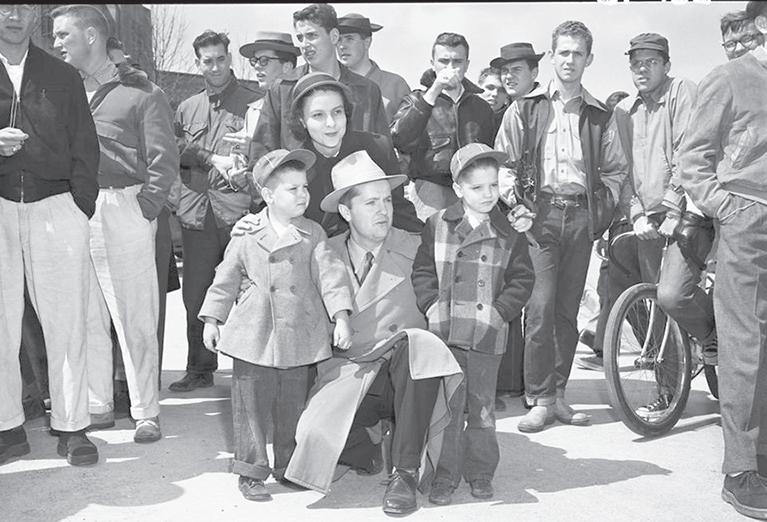
IU ARCHIVES
By Samantha Camire scamire@iu.edu | @camiresamantha
Howard S. “Howdy” Wilcox was a public relations expert, World War II veteran, president of the IU Foundation and even a former Indiana Daily Student editor, but perhaps his greatest legacy is creating the legendary Little 500.
In the fall of 1950, Wilcox was walking through IU’s campus when he stumbled upon an informal bike race at a dorm. Seeing the cyclists, he developed the idea for the Little 500, a bike race created to raise money for scholarships that would eventually grow into an event billed as “the greatest college weekend.” Wilcox was inspired by the Indianapolis 500, which he had a close familial connection to. His father, How-
ard Wilcox Sr., was a promi nent race car driver and won the Indy 500 in 1919. As president of the IU Foundation, Wilcox created the IU Student Foundation to further the aims of the Foundation.
“The IU Foundation simply had no identity on campus, neither with the students nor the faculty,” Wilcox said, according to the IU Student Foundation page. “I wrote a letter to President Wells recommending that we form a Student Foundation Committee and charge that committee with spreading the word.”
The IU Student Foundation still exists today and hosts the Little 500 every year. The IUSF offices are located in the Wilcox House, named after the man who started it all.
tal health care on campus. Bike teams also compete to see who can have the most individual student donors to the campaign; teams who participate earn a special patch on their race day jerseys.
IUSF’s new Wellness House, a space for student rest and rejuvenation on campus, was partly funded by the proceeds from last year’s Students Helping Students campaign.
Alongside Students Helping Students, IUSF has four other committees: Engagement, PreRace, Little 500 Cycling Committee and External Affairs. The com-
mittees are overseen by the Steering Committee, a group of seniors who lead IUSF, and its counterpart on the biker side, called Riders Council.
In addition to putting on the Little 500, the Little 500 Cycling Committee hosts cycling events throughout the year, such as the fall and spring cycling series and Little 500 qualifications.
General members of IUSF help make these events happen by volunteering their time. Junior Katie Templeton frequently volunteers during practice times at the track, times which allow Little 500 riders


to get their required track hours in before the big race. She is a gunner, a junior who spends the semester attending and volunteering at IUSF events in the hopes of being selected to be a part of Steering Committee for their senior year.
“I just think it’s a great opportunity to meet likeminded people that are working towards the same goal,” she said.
IU senior and Steering Committee member Margaret Barnett similarly prizes the community she has found through IUSF.
“If I had to describe the people who are a part of
IUSF, I would say passionate, driven, hardworking and caring,” Barnett said. “I think people just really care about each other and care about what we’re doing.” For the students involved, IUSF is more than just the group that puts on Little 500. It is an opportunity to grow their leadership skills, give back to campus and find community.
“I’ve made, like, my college friends, like some of my best friends,” Barnett said. “And sometimes the work is daunting, but we really support each other and we’re working for the greater good.”






3+ miles of bike lanes
7 + miles of signed bike routes
7 on-the-go repair stations across campus
700+ bike racks


